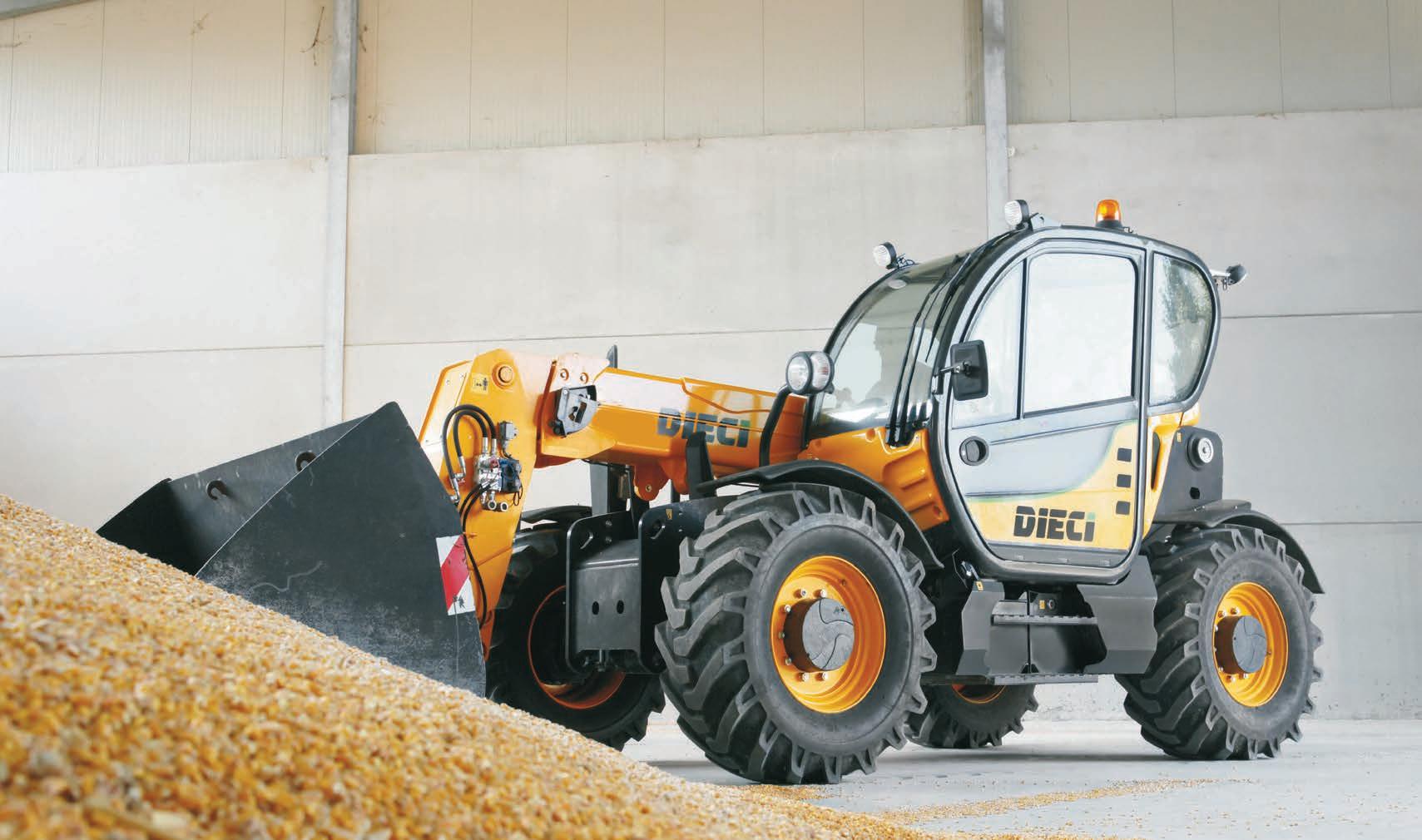












PLUS, THE MAXAM AGRIXTRA RANGE DELIVERS MINIMAL SOIL COMPACTION, A COMFORTABLE RIDE AND IMPROVED TRACTION WHICH SURPASSES ALL AGRICULTURAL TYRE EXPECTATIONS. WHEN PACKAGED WITH ONE OF THE BEST WARRANTIES IN THE INDUSTRY, THE AGRIXTRA DELIVERS THE PERFORMANCE YOUR FARM DESERVES!
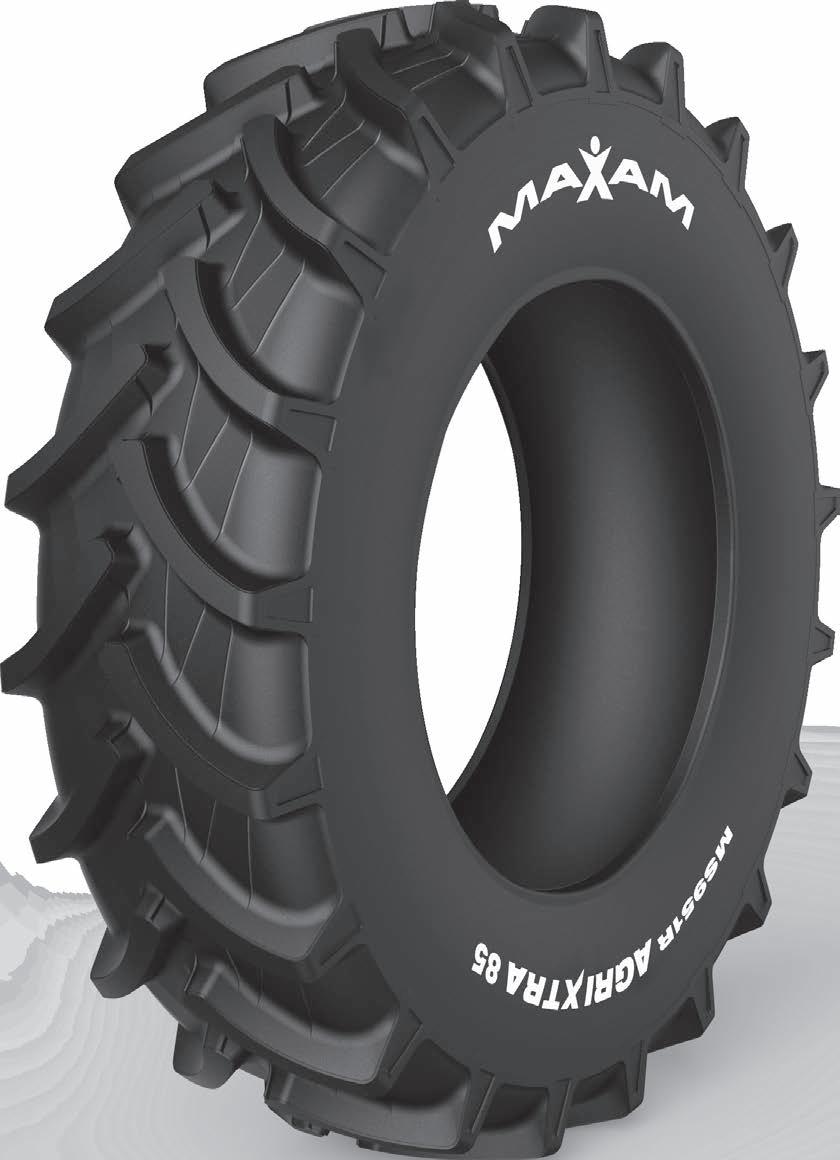

TO SEE THE COMPLETE RANGE OR TO FIND
LOCAL DEALER, VISIT
42 WAFarmers’ Trevor Whittington says government intervention in coal and gas markets will create


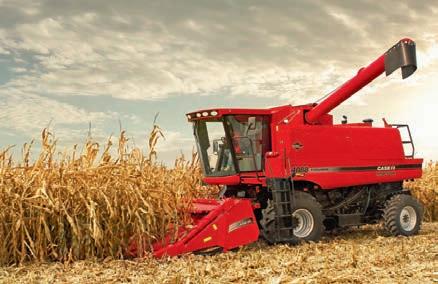

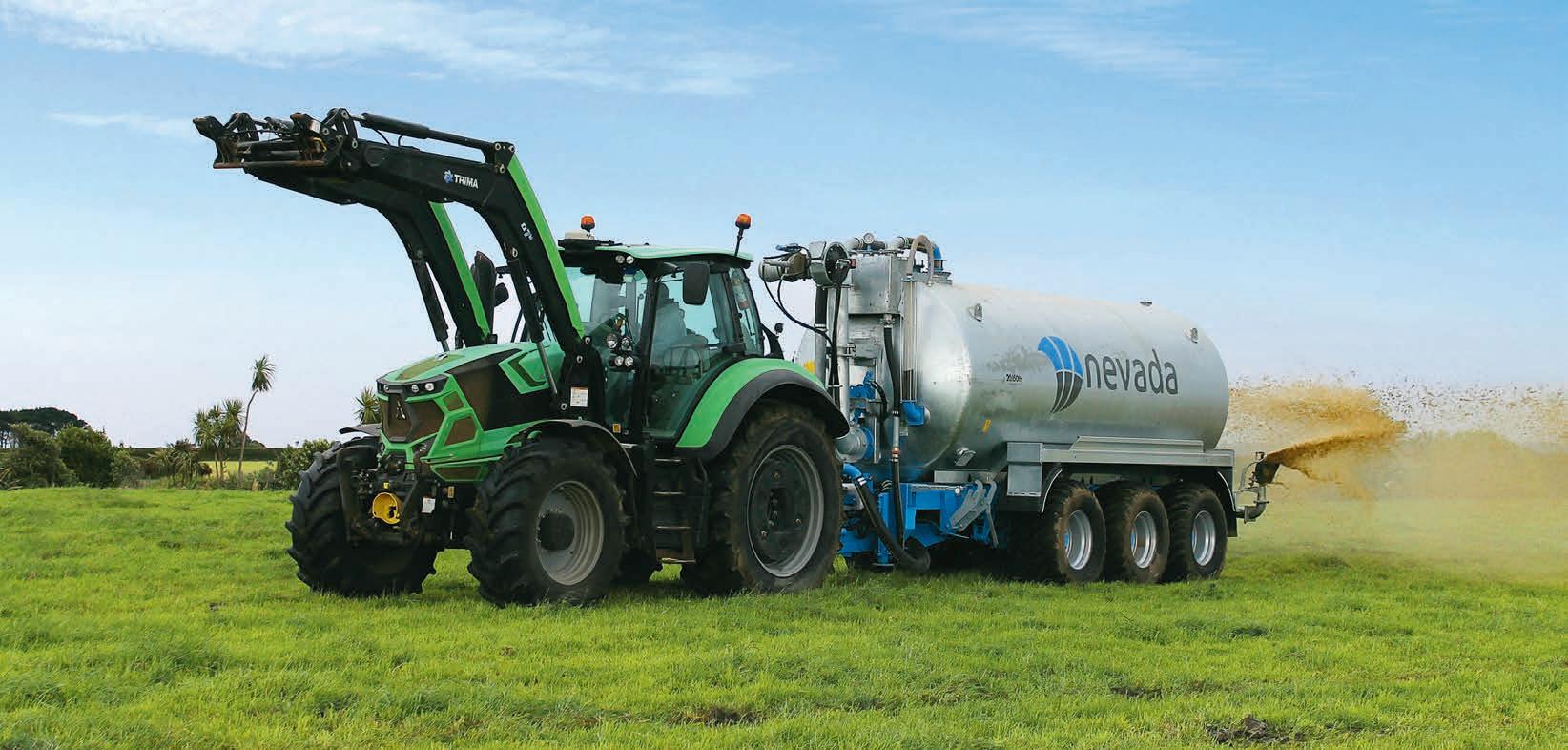
One of Italian manufacturer FAE’s mulchers has received a new blade option
FAE has added a new blade – the BL MAX – to one of its popular forestry mulchers for excavators.
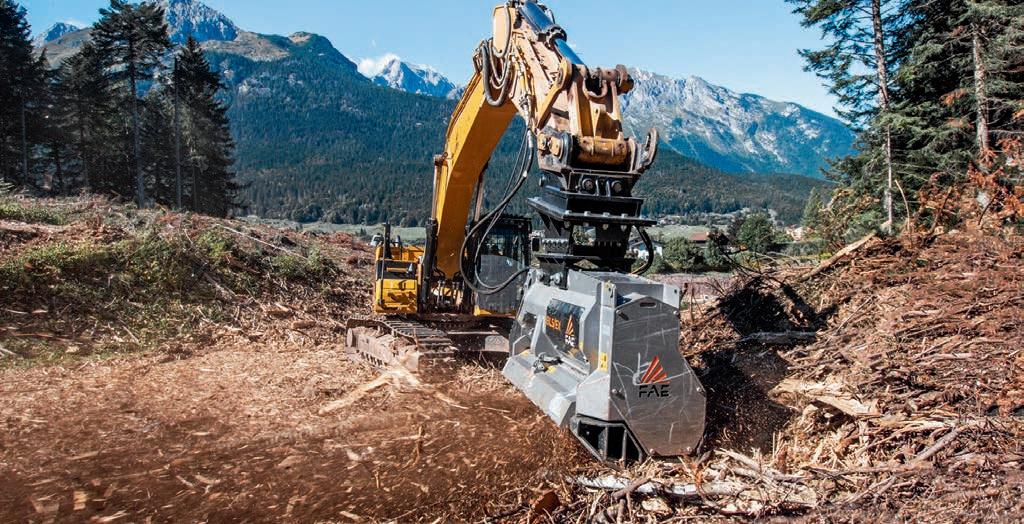
The new blade features a large cutting surface, optimised profile, strong built materials and special heat treatments which the Italian manufacturer says makes it extremely efficient for shredding.
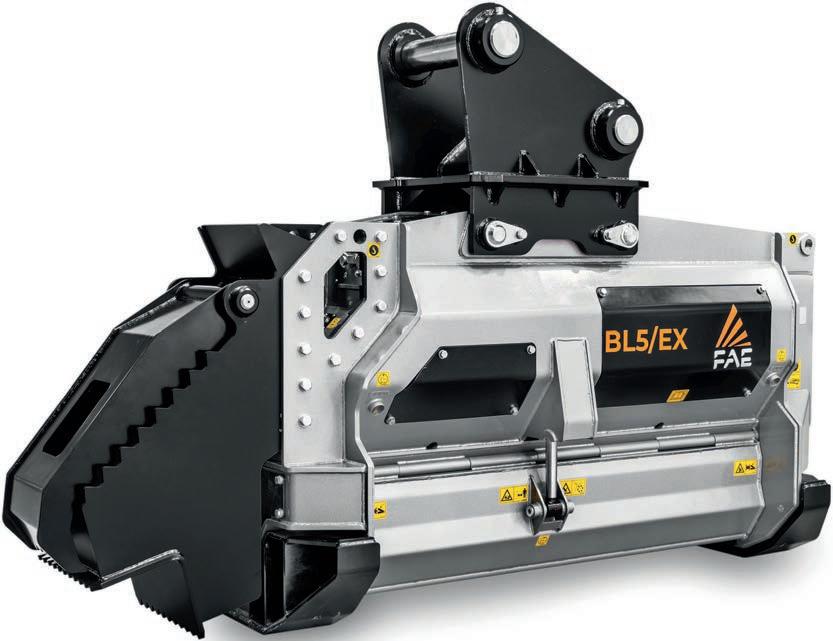
The blade can also be sharpened, helping to extend the life of the tooth.
It is designed for FAE’s BL5/EX forestry mulcher, which can handle logs up to 40cm in diameter, has a working width of 1.6m and works with excavators between 24 and 36 tonnes.
FAE says the BL MAX blade is the “ideal addition to the king of FAE’s mulchers for excavators with Bite Limiter Technology”, which helps to both reduce power demand and promote a consistent working speed.
The BL MAX blade is also an optional tooth for the 200/U forestry mulcher, which is available for FAE’s PT-300 tracked carrier and other high horsepower vehicles.
BRAND
Money is available for New South Wales farmers to futureproof through technology
New South Wales farmers can apply for grants worth up to $35,000 to invest in technology and connectivity solutions.

The state’s government, which is up for re-election on March 25, has committed $20 million towards the Farms of the Future program.
“The ag sector is always innovating and this fund will help producers tap into the latest technology to drive productivity in the paddock and allow them to work smarter, not harder,” deputy premier and regional NSW minister Paul Toole says.
“A grant of up to $35,000 could put some of these technologies in reach for hundreds of farm businesses and unlock multiple times that in cost savings and boosted productivity.”
According to the NSW government, the Farms of the Future program “aims to facilitate tech enabled production and monitoring through improved connectivity and installation of sensor equipment which support increased productivity, competitiveness, job creation and sustainable use of resources”.
The program is targeted at cotton, livestock, grains and horticultural farms.
Farmers can use their grant to select devices from a dedicated Agtech Catalogue website which best suits their farming operation.
The catalogue features Internet of Things devices, digital monitoring products and connectivity solutions from 50 suppliers who were selected through expressions of interest last year.

NSW agriculture minister Dugald Saunders says the program is designed to encourage growth and boost the state’s agricultural output towards $30 billion.
“Despite the challenges over the last few years, our primary industries sector continues to break records and is currently valued at a whopping $23.1 billion, and we’re confident we can boost this to $30 billion by 2030,” he says.
“Encouraging farmers to engage in widespread use of agricultural technology and digital connectivity will help drive substantial growth now and into the future, which is great news for our farmers and regional communities.”
Applicants must meet a range of criteria to be eligible for Farms of the Future grants, which are available – along with application forms – at www.nsw.gov.au/fotfgrant.
Farms of the Future has been developed in conjunction with Tocal Agricultural College and application close on Thursday August 31.
Transporting Lemken’s VarioPack furrow press has become easier, thanks to a new trailer
Lemken is making life easier for owners of its popular VarioPack furrow press, introducing a trailer that allows for convenient transportation.

This will allow even large furrow presses – used with six-furrow or larger mounted and semi-mounted ploughs – to be easily transported by road, the manufacturer says.
The VarioPack with trailer is coupled to the tractor via a cross shaft and has a transport width of 2.8m, which ensures narrow field tracks can also be comfortably navigated.
Lemken says the trailer has been EU-approved for speeds of up to 40km/h, helping for quick transportation to the field.
The implement is switched hydraulically from its transport to working position from inside the cabin. Versatility is enhanced as the VarioPack’s arms can be adjusted vertically, laterally and in length, allowing them to be optimally adapted to any conditions.
This ensures reliable capture even on slopes, Lemken says, and the furrow press can be run close to the plough to minimise side draft.
The trailer is available for large VarioPack double furrow presses with 70cm or 90cm rings.
Lemken’s VarioPack working with semimounted plough

Claas has produced its 10000th bespoke Arion 600/500 tractor transmission

Claas is celebrating a global production milestone on a custombuilt tractor transmission
Tractor manufacturer Claas has brought up a milestone, with the 10,000th bespoke transmission for its Arion 600/500 CMatic tractors having been manufactured in Germany. The first transmission was manufactured in 2015 after Claas invested more than €40 million (A$62 million) developing the new transmission.
More than 30,000 hours of pre-production testing and retooling occurred at the Claas factory in Paderborn, Germany.
Claas uses third-party transmissions for its Xerion and Axion machines, however developed its own continuously variable transmission for the Arion 600/500 tractors.
Claas Harvest Centre product manager Shane Barrett says the company has shown remarkable commitment to the project and adds that Australian customers have benefitted from the transmission’s efficiency.
“The mechanical-hydraulic power-split transmissions are characterised by their simple design, reliability and high efficiency over the entire speed range,” he says.

“Thanks to their robust construction and excellent manufacturing quality, many of these transmissions have clocked up more than 10,000 operating hours without any problems.
“The quality of each transmission is assured by a computer-guided ‘zero-defect’ assembly line and testing under 100 per cent load on a dynamometer.”

Claas has made transmission and hydraulic changes to its powerful Xerion 5000 tractors

A new transmission and increased hydraulic power headline the upgrades to Claas’ latest Xerion 5000 series tractors.
The changes apply to 2023 delivery Xerion 5000 models, which Claas says now has the highest hydraulic power of any tractor in the market.
Xerion is Claas’ biggest tractor series, and the latest models have a new pump transfer gearbox and optional tandem pump which deliver up to 422L/min oil flow for up to five double-acting rear spool valves.
“This means there is also sufficient hydraulic capacity available for attachments with a particularly high requirement, such as air seeders,” Claas

“The high flow hydraulic option allows for two spool valves to have a maximum flow rate of 140 L/ min through three-quarter couplers.
“The hydraulics menu in Cebis [Claas’ control system] has also been simplified to show the feeder pump and maximum flow rates for each circuit and allow the operator to give priority to critical functions, such as fans or metering devices.”
Another upgrade in the latest Xerion 5000s is the move to ZF Eccom 5.5 transmission.
Claas has used Eccom transmission technology in
its Xerion tractors since their launch 20 years ago, Harrison says, meaning it has been tried and tested.
“These transmissions are renowned for their efficiency and reliability under all operating conditions,” he says.
“Like the previous 4.5 and 5 models, the 5.5 generation transmission offers four automatic range changes forward, a maximum forward speed of 40 or 50km/h and a maximum reverse speed of 30km/h.
“The drives of the front and rear axles are rigidly coupled with each other, so that no longitudinal differential is required.”
The Xerion has always been known for its power, and the latest model features a 12.8L six-cylinder Mercedes-Benz engine that produces a maximum torque of 2600Nm at just 1300 rpm.
Harrison says this makes it a reliable tractor ideal for the big jobs.
“With four equal-sized wheels, permanent fourwheel drive, all-wheel steering and a continuously variable transmission, this 530hp tractor is more than capable of towing a 24-metre air seeder at just 1100 rpm, even fitted with single wheels,” he says.
Other features of the 2023 model Xerion 5000 include a module ballasting system which allows up to 3.5 tonnes to be added over the front and rear axles in 400kg increments, an optional quick hitch mounting frame, and a new Cemis 1200 touchscreen with SAT 900 receiver and GPS Pilot automated steering.





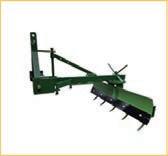
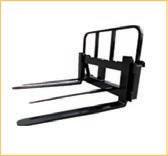























Combine operators will benefit from several comfort-increasing upgrades to Case IH’s Axial-Flow 4000 Exclusive range

Case IH has made a host of upgrades inside the cabin of its Axial-Flow 4000 Exclusive combine range.

Changes include a new console with revised controls, an integrated touchscreen and monitoring terminal and the faster operation of some key combine functions.
The upgrades apply to Case IH’s 4088 and 4099 Axial-Flow models.
Case IH combines product manager Massimiliano Sala says the changes are designed to further enhance a machine which is already popular among the manufacturer’s customer base.

“The 4000 Exclusive series Axial-Flow combines have a strong following among users seeking simplicity of operation alongside simplicity of design and maintenance,” he says.
“With these latest updates, those characteristics remain, but customers will benefit from even easier operation and reduced operator fatigue.”

Among these operator-friendly upgrades is the new lateral console, which has an ergonomic design that enables easier identification of all the machine’s main functions and settings.
The console also incorporates the AFS Pro 700 touchscreen operating terminal, mirroring the arrangement found on Case IH’s latest 150 series Axial-Flow combines. This terminal allows all settings to be controlled and operating data monitored at an operator’s fingertips, including operation of important functions such as the reel, knife and rotor.
It also provides information which was previously shown on the A-pillar displays.
A benefit of this redesign is data such as fuel levels and engine temperature are now positioned in the driver’s eyeline.
Case IH says this not only results in a clear view of the cutterbar, but also reduces strain on the operator, with all information grouped together for easy assessment.
Part of the reduced operator strain is through the armrest incorporating a new joystick.
Also designed for intuitive operation and eliminating the needs for the user to stretch, it features a new electro-hydraulic unloading auger engagement switch, which allows for easier and smoother uploading of the grain tank compared to the previous manual engagement.
Electronic actuation responses have also been enhanced thanks to the fitment of a new universal communications module, Case IH says, which enables faster reactions and more accurate control of important electronically-controlled functions.



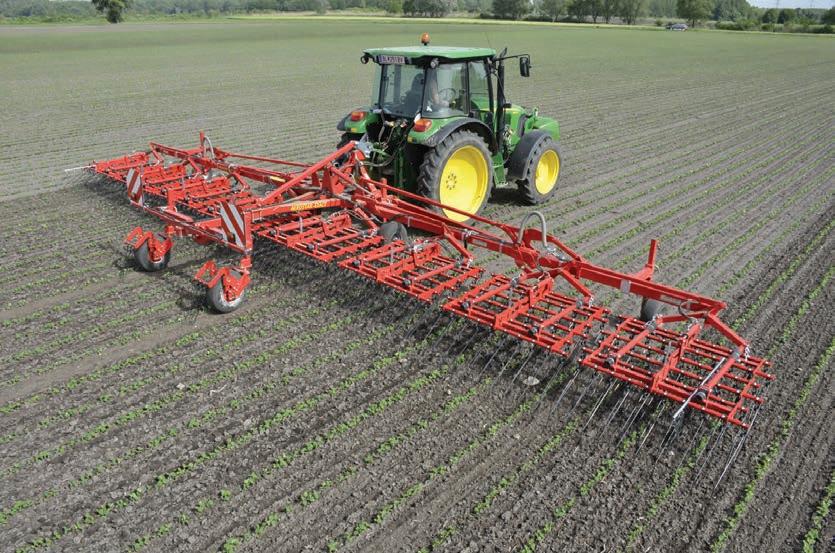

Grain growers now have access to a John Deere system which provides detailed information about their crops from inside the cabin
John Deere has widened the availability of its HarvestLab 3000 sensor to include the grains sector, allowing growers access to an array of real-time information about their crops.
This means wheat, barley and canola growers can measure and monitor their crop’s protein, starch, oil, and moisture levels while in the cabin, or by using Deere’s Operations Center.
HarvestLab 3000 is available as a field kit and is an extension of Deere’s original HarvestLab technology, which was introduced in 2007.





The manufacturer’s precision agriculture manager Benji Blevin says two years of local trials have taken place to ensure grain growers can get maximum benefit from the technology.

“John Deere has been working with Australian farmers for the past two years to develop the HarvestLab 3000 Grain Sensing technology which will transform how they market their grain and manage their nutrient inputs,” he says.

“Currently, most farmers only have the ability to assess samples of their grains with a stationary protein analyser once back in the shed.
“With HarvestLab 3000, farmers will have a complete map of grain quality, which can be overlaid with a yield map, and can see exactly what parts of their paddocks produce the highest quality grain.
“Farmers will also be able to utilise HarvestLab 3000 to plan future fertiliser programs based on how successfully nutrients were converted into yield, protein, starch, or oil.”
The technology works as the combine moves through the field, with a motor-driven auger pushing grain past the HarvestLab 3000’s sensor.
It then works with the StarFire receiver to generate site-specific data which is made available on the incab display and through Operations Center.
“With HarvestLab, we understand the protein in our crop, on the go, as we harvest, which helps us to decide how we segregate the crop,” he says.
“This gives us the opportunity to make a decision to blend the grain later, depending on the state of the market. This would have been useful in the past when we had some crops that finished with very high protein.
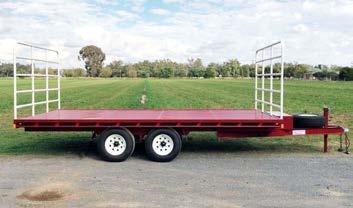
“When that grain was delivered to the traders, there was a limit on the amount of protein that we could be paid for, so we didn’t receive any benefit for the premium quality.
“At the end of the year, everything comes down to the analysis of your maps, and deciding which crop or paddock is more profitable.
“Adding that protein layer helps us better understand whether an area was actually just the highest yielding, or whether it was the most profitable.”
HarvestLab 3000 will be available to order from April in time for the next harvest season, and can be easily integrated into S700 Series combines from 2018 or later.
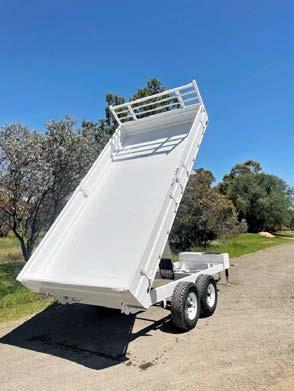





• Super deep ripper! Rips down to 60cm (24 inches)
• One pass operation to super deep rip, mix clay and incorporate lime that also packs the surface for an excellent seed bed.
• The most economical way to transform poor to average sandplain into highly productive country in one pass!
• Medium to heavy country is also responding with great results!
• Special aggressive A-discs, produce the best stubble cutting and mixing action.
• Excellent for incorporating lime and stubble at depth and levelling the paddock.



• Kills weeds and leaves an impressive seedbed with the moisture locked in by the V-ring packer!

• Fixes your seeding trash flow problems in one pass!

Since 1974, Capricorn has supported over 25,000 Members to grow their business, supporting smaller workshops all the way through to large commercial sites. We’ve fine tuned our membership to offer an extensive range of unique benefits – including one consolidated Trade Account, a 2,000+ Preferred Supplier network, specialist finance options, fuel card, diagnostic tools, business services support, and comprehensive business protection. Plus, you’ll also get access to Australasia’s most generous Rewards program.




We’ll help drive your business forward. Contact Australasia’s largest automotive co-op today.



Farmgard is the national distributor of Celli equipment across Australia, boasting a near endless line of cultivation-specific equipment.
The range includes rotary hoes – the bread and butter of the Celli product line – as well as power harrows, deep rippers and spike rotors.
Together, the two brands share a long and storied history, dating back to Farmgard’s founding in New Zealand over 40 years ago, before reaching a new agreement in 2017 when Farmgard became the exclusive Australian distributor of Celli equipment.
Since then, Farmgard has steadily grown the Celli brand around the country, however it’s another development which continues to turn heads among farmers and horticulturalists Down Under.
The combovator bed-forming system was first developed in-house by Farmgard in 2017 with a New Zealand customer before it was promoted in Australia one year later. The machine combines soil

cultivation and raised bed formation in one unit as a retrofittable attachment to any piece of equipment in the Celli cultivation range.
Farmgard Australia managing director Scott Capper says while combovator is relatively new to the market, it’s been widely enjoyed by the many that have bought it.
“It’s a uniquely designed bed former attachment which will attach to any of Celli’s cultivation range – be that a power harrow, a spikes rotor or a rotary hoe. It’s really taken off in the Australian market and something that is still quite new in the last three to four years,” Capper says.
“It’s something we’re really pushing to anyone wanting to bed form in Australia, starting at the top of Australia with sugarcane growers – which is grown on mounds – coming down to any vegetable production, be it beans or salad vegetables.
“We’re selling the models from to the top to the
bottom of Australia in the eastern seaboard where it rains, and where they grow food.”
The combovators are uniquely designed and customised by Farmgard to suit individual farmer needs and are mounted to the tailgate system of the power harrow or rotary hoe.
“The unique part of the system is that everyone’s going to have different bed heights or different bed sizes and it’s easy and cheap to change so that it will bolt on.”
Other features of the combovator bed forming system – which are suitable for use on tractors of between 250 and 450 horsepower (186-335kW) – include a Z-link triple hydraulic control system which controls depth, tilth and consolidation, teflon or hardox liners which make the system capable of
operating in any soil types, and central locking pins which ensure beds are even at all times.
The bed former system can also lift while attached for standard use of the rotary hoe, power harrow or stone burier.
But the benefits of the combovator attachment aren’t limited to its versatile two-in-one function with other cultivation equipment. Capper says the system could save farmers as much as $10,000 from the initial purchase.

As he explains, farmers purchasing cultivation equipment often perform expensive and time-consuming modifications, however that process is now taken out of the farmers’ hands to be performed by Farmgard at a significantly smaller cost.

“Rather than what a lot of growers or anyone wanting to bed from generally does, they make a
bespoke piece of machinery or they buy a rotary how off the shelf and then they spend $30 grand on modifying it,” he says.
“What we’ve done is we’ve taken the standard rotary hoe and made that bed former that will attach on the back. So, we can go to a grower and say, look, we can provide your bed former and it’s going to save you $10 grand rather than making your own one
“If they want to sell the machine in a few years’ time, they can remove the bed former and sell it as a standard rotary hoe. Rather than at the end of its life being becoming a piece of scrap metal, it’s something that they can actually sell of value.”
As well as the combovator, Capper says Farmgard now offers the Celli branded air seeder attachment which can be retrofitted on the power harrows and rotary tillers, with the company able to offer a ‘one-
pass’ cultivation and seeder package that includes both the seeder and harrow equipment.
Farmgard has dealers in every Australian state as well as distribution hubs in Melbourne and Brisbane.
For more information on the combovator bed forming system and other equipment in the Celli cultivation range, visit farmgard.com.au/cultivation/
Machinery giant CNH Industrial, the parent company of brands including Case IH and New Holland, debuted driverless tillage, driver-assist harvest tech and automated hay balers at its most recent Tech Day, held in the US late last year.
The company also announced it has opened an electrification centre in the United States, while also acquiring a 10 per cent stake in American start-up Stout Industrial Technology.
These announcements follow CNH’s unveiling of a semi-autonomous electric tractor prototype plus another methane-powered prototype at the Tech Day, both of which have New Holland branding and were reported on in the last edition of Farms & Farm Machinery.

CNH agriculture president Derek Neilson says all the developments are helping to address industry challenges of doing more with a “dwindling labour force”.
“Autonomy will become an integral part of farmers’ operations everywhere,” he says.
“We believe that autonomy and automation technologies are fundamental to the future of farming. They cover all farmer segments and drive real world benefits.”
Machine updates
CNH has worked closely with Raven Autonomy on the driverless tillage solution – combining a Case IH tractor and tillage platform with Raven technology to develop an advanced perception system and remote command and control experience.

The result is a machine which can function without an operator in the cabin, instead being operated remotely from a tablet.
CNH says this also leverages existing Case IH tillage automation “for ultimate agronomic and machine control of the implement”.

The driver assist harvest solution will be made commercially available for both Case IH and New Holland machinery and has again been developed in collaboration with Raven, which CNH acquired in late 2021.
According to CNH, this “provides a coordinated control feature that allows for the driver assist harvest solution to chart the path and speed of the tractor pulling the grain cart alongside a combine harvester during an ‘unload on the go’ operation”.
It keeps the tractor perfectly in sync with the combine harvester while unloading grain, CNH says, and simplifies the task which increases efficiency and reduces grain spillage.
CNH’s baler automation was unveiled on New Holland large square balers.
This technology uses a sensor to scan the windrow in front of the tractor for density, direction and volume.
The tractor and baler then use this input to automatically control steering, forward speed and baler settings, ensuring the baler precisely follows the windrow for accurate crop feeding.
Benefits include optimised bale shape and reduced fuel consumption, plus increased productivity and operator comfort, CNH says, while adding that this feature will also be offered on Case IH machinery.
Electrifying
CNH has also opened a new electrification centre in the US city of Detroit, complementing an existing site in Modena, Italy.
It has been designed to support the company’s “growing innovation in electrification” and expand its ability to develop new technologies.
“This new location underlines our commitment to growing our electric vehicle and subsystem profile, and marks yet another milestone after successfully expanding our in-house team,” CNH chief digital and information officer Marc Kermisch says.
“Under one roof our team can now leverage cross-functional and cross-sector expertise at both component and machine level.
“The result sees us becoming more customer-focused and building mission-fit electrified drivetrains and high voltage systems.”
Smart investment
CNH’s 10 per cent minority stake in Stout Industrial Technology is a step towards implementing artificial intelligence in its machinery, specifically cultivation equipment.
Stout has developed a Smart Cultivator, which is powered by artificial intelligence and is described as “a software-controlled implement for tractors that uses cameras, AI and proprietary vision technology to distinguish crops from weeds”.
It allows for simultaneous cultivation of crops and weed removal, allowing the process to be done quicker and without chemicals.
CNH says Stout machines will soon be distributed via New Holland dealer networks.
Scan to watch the video!
Turn your Tractor, Telehandler or Skidsteer into a multi-task machine! Stick Rack, Grapple, Grab, Clamp & More!

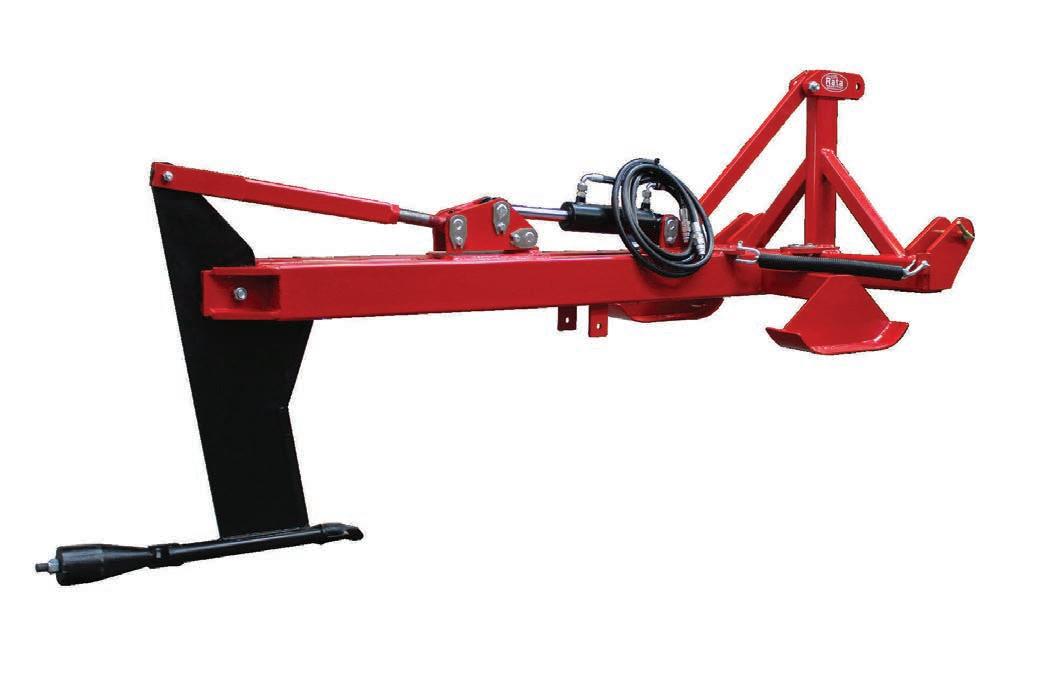




P Models to suit tractors 45hp to 250hp, Telehandlers & Skidsteers

P Widths from 1.5m to 2.4m wide



P Combines the functionality of multiple attachments into one!
P Stick Rake, Grapple, Grab, Clamp & More!
P High Tensile Steel Tines!


It’s no secret! Waterlogged pasture takes longer for pasture to grow, reduces yield & leaves it more prone to pugging & compaction issues!
Scan to see how you can dry out with a Rata Mole Plough



“The best piece of equipment I ever bought!”
With fertiliser costs rising dramatically, there has never been a more important time for effectively and efficiently managing effluent on farm. With this in mind, it seemed like an opportune time to take a closer look at the Nevada MB200 Tridem tanker.
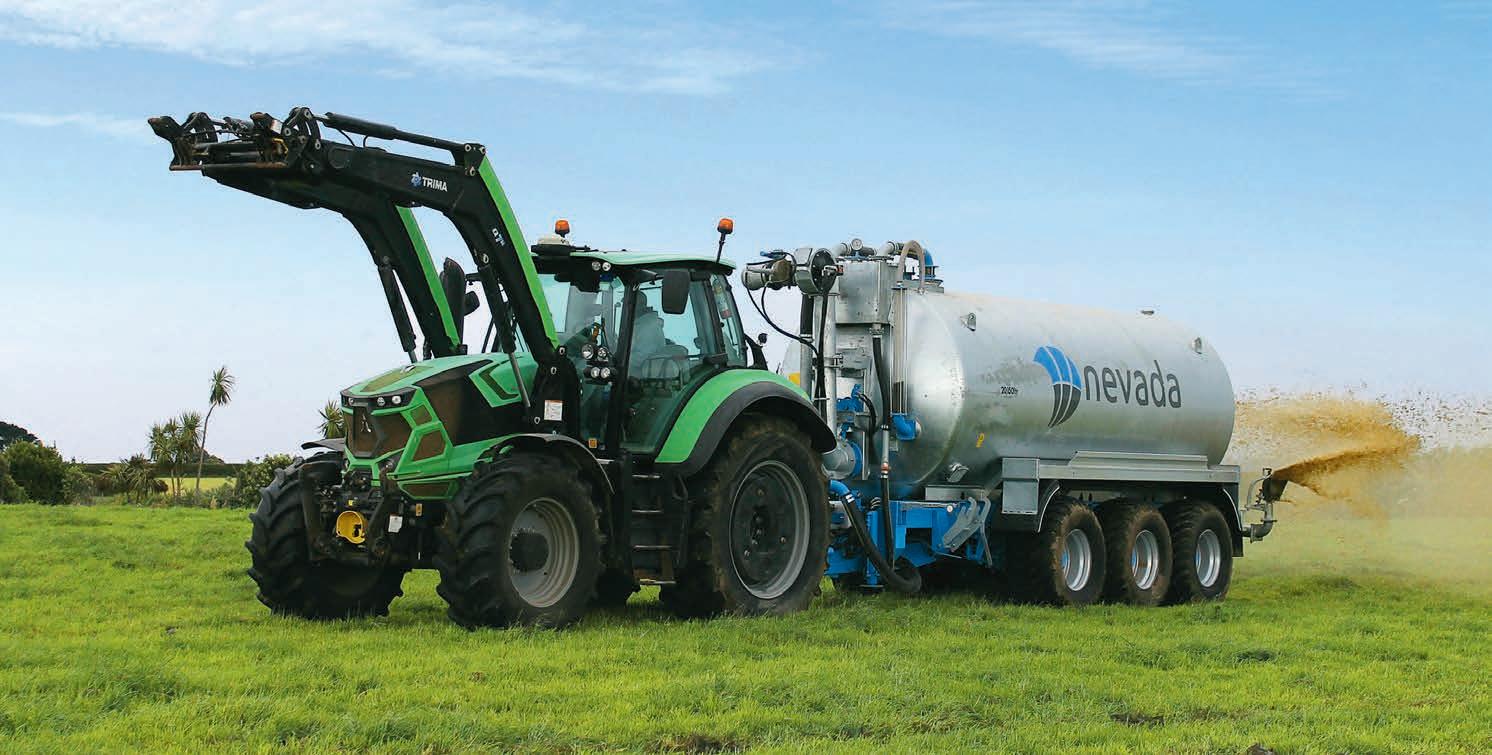
Words and images Mark
FouhyTo see the Tridem working, we headed south to Ross and Blake Clark’s dairy farm in Taranaki, New Zealand, where the new Nevada MB200 Tridem is currently operating. Until purchasing the new Nevada tanker Ross had just relied on travelling irrigators to manage effluent.
Having installed a new lined pond on one property with a Nevada electric stirrer, the pond is down to the bottom third and starting to get a bit thick for the travelling irrigators to handle. So, the addition of the Nevada Tridem made a lot of sense, particularly with two properties to service. The thicker effluent has proved no problem for the Nevada tanker at filling time, particularly with the turbo-fill arm in action. Although it seemed to take a little while to get going initially, I was impressed with a fill time of under four minutes to fill the 20,000-litre tank. Time-filling, I think will be similar to spreading time. Operation is straightforward, thanks to the easy-to-use electronic remote. The arm valve for spreading and steering axle lock are all controlled by the remote.
Ross and Blake have found spreading at four to six kilometres per hour achieves the desired application volume per hectare. The Rainwave spreader is designed to apply between one and 10mm at less than seven kilometres per hour, easy on the tractor, driver, and tanker in rough paddocks.
The dual Rainwave applicator is standard equipment on the Nevada Tridem tankers (single Rainwave on single and tandem axle models). I would estimate spread width between 10 and 12 metres with the dual version. The growing cost of fertiliser makes it more important than ever to get the best out of nutrients.
Due to the cost of hydrant systems, traditionally, a lot of these nutrients have been used over a portion of the farm. The efficiency offered by the Nevada MB200 allows for spreading over the whole farm, wherever the nutrients are needed most.
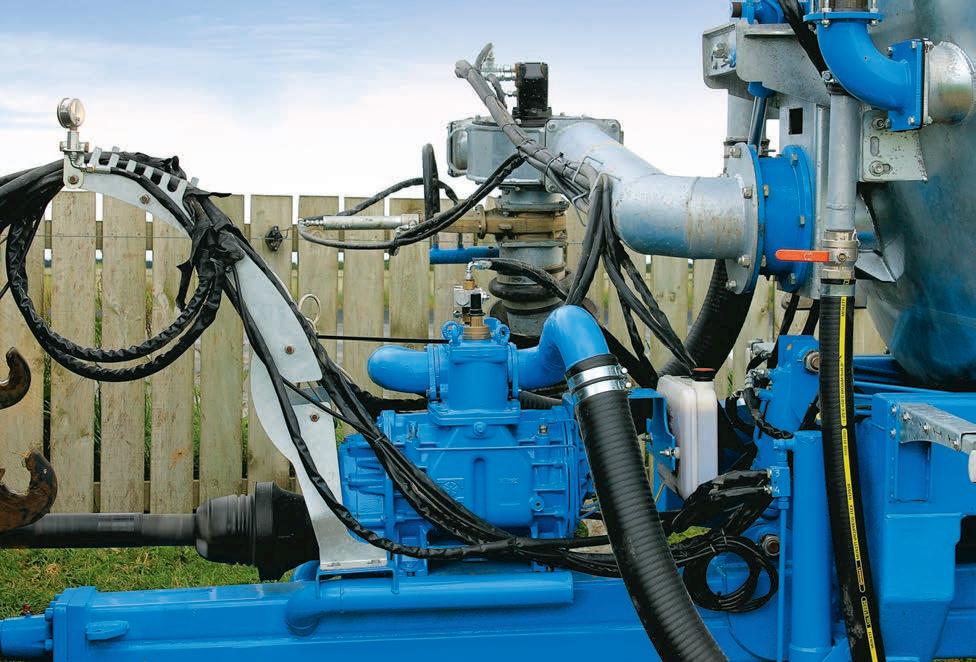
Along with the farm we were on for test day, Ross has another property up near the mountain with 600 cows. Consistent rainfall here is guaranteed – and a lot of it – to manage this, they have herd homes to save damaging pasture and wasting feed. Feeding maize and silage at the herd home, cow waste is collected in the bunkers beneath. Until purchasing the new Nevada tanker, cleaning out the bunker involved lifting out all of the concrete slats to get a machine in to clean out and spread as a semi-solid.
Once the job at the first farm is done, the tanker will be heading to the other farm to start on the herd homes. Adding water and stirring should give a spreadable slurry consistency. Also, for farm management, they won’t lose the use of the herd home for a week while the clean-out is taking place.
Spreading
Nevada continually keeps up with spreading technology and offers a number of different spreader attachments for its slurry tankers. If you want dribble









bars, trailing shoe, or injector systems, these can be ordered.
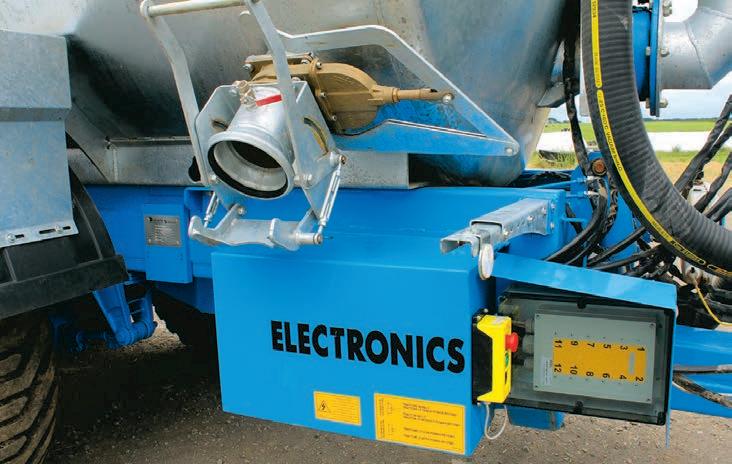
However, all Nevada tankers are now fitted with the Rainwave applicator system. This offers most of the benefits of these other applicator systems, with minimal moving parts, so hopefully, less maintenance and repair. Operating at low pressure, the Rainwave system produces large droplets spread through an oscillating fan pattern to achieve an even spread with minimal drift. This also takes care of some of the issues associated the older splash plate system, which generally involves more smell and less accuracy with application.
Using a full-frame chassis design, load stresses and weight are minimised to save wear on the tanker and tractor combination. A double dip galvanising process is used to keep the tank from rusting, inside and out. A clear coat is applied to give a finish that is going to keep it looking good for years – good advertising for contractors.

The tank is made with implosion rings on the joins, along with baffles for additional safety, to help prevent surging and keep the fully loaded tanker safer while towing. The large rear hatch opens to allow you to hose out the inside if you do
get any build-up in the bottom. Six large 550/60R22.5 tyres carry the weight of a full load with no problem.
Sinking into soft paddocks is not an issue, and these tyres also help make the tanker easier to tow. Sitting on heavy-duty leaf springs and with drawbar suspension, it handles the load with ease and is easier on the tractor. Front and rear steering axles make the eight-metre tanker manoeuvrable and prevent damaging pasture scuffing tyres when turning. Also, since it’s a large tanker, you’re doing fewer loads up and down races wearing them out.


Quality Italian pumps are used on all Nevada machinery. An oil-cooled pump on the test machine has been chosen to handle pumping and sucking the thick slurry expected of it, without overheating, along with the turbo fill to make the job a little easier. The central auto-fill arm should push any solids towards the rear when filling, as opposed to silting up over time.
As I mentioned earlier, fill time is a mere four minutes or less. The one little bugbear I had with filling was the length of the hose for the filling pod, which is not a major and may be down to just changing set-up to make it work better.
Summary
Nevada is the not-so-secret weapon that guys in the know have for slurry handling in New Zealand and beyond. Whatever you need in the line of slurry management, Nevada has it covered. The range of tankers delivers from a single axle 6000-litre machine to the largest Tridem triple axle unit of 37,000 litres, providing options for smaller farms through to the largest, along with contractor spec machines.
The Tridem test machine proves its worth as a valuable all-round machine with good capacity, but not so large as to be problematic to manage. Electronic remote along with auto-fill arm with turbo filler make it an efficient option to shift a lot of loads in quick order.
Beginning life as Midwest Machinery back in 1988, with a focus on supplying sales and service of general farm machinery, the business began specialising more in dairy effluent machinery with increased demand in this area. Since rebranding as Nevada the business has grown to be one of New Zealand’s leading effluent management specialists. Nevada originally imported equipment for New Zealand farmers and now also manufactures components in Taranaki and has been exporting to Australia since 2015.


1964 and the world’s best Post Driver was invented
Supply chain issues that caused major headaches during the peak of the COVID-19 pandemic peak have eased, industry figures say, but challenges still exist
Advance planning across the agricultural industry will be the best way to prevent a repeat of the problems caused by machinery delays.
This is the view of Case IH general manager Pete McCann, who says supply chain delays have improved “probably one hundred-fold” since their worst during COVID-19 lockdowns.
Tractor and Machinery Association (TMA) executive director Gary Northover agrees the supply chain was “out of control” during the pandemic, with record tractor sales, combined with long delays, creating headaches for members.
“It was out of control frankly, and it was the entire supply chain,” Northover says.
“There were component supply challenges and Covid restrictions in place in factories, so getting machines built in the first instance was challenging.
“Getting them onto a boat that was coming to Australia was a challenge because a lot of the shipping got diverted from Australia as there wasn’t enough volume to support the normal number of ships.
“The demand between China and the US in particular took away ships that were being used to come to Australia traditionally.
“By the time it got to the Australian wharves we had delays with unloading and processing, and increased quarantine restrictions imposed on incoming freight.
“It got to the point where I think many members were saying they were really reluctant to actually take a physical order because they just couldn’t guarantee when it was going to get here, and indeed whether or not the price was going to be anything like the price quoted, so it was very challenging.”
An Australian Competition and Consumer Commission (ACCC) report from November 2021, to which the TMA made a submission, said that only 10 per cent of vessels arrived in their designated berth windows in 2020-21, which was the lowest rate on record.
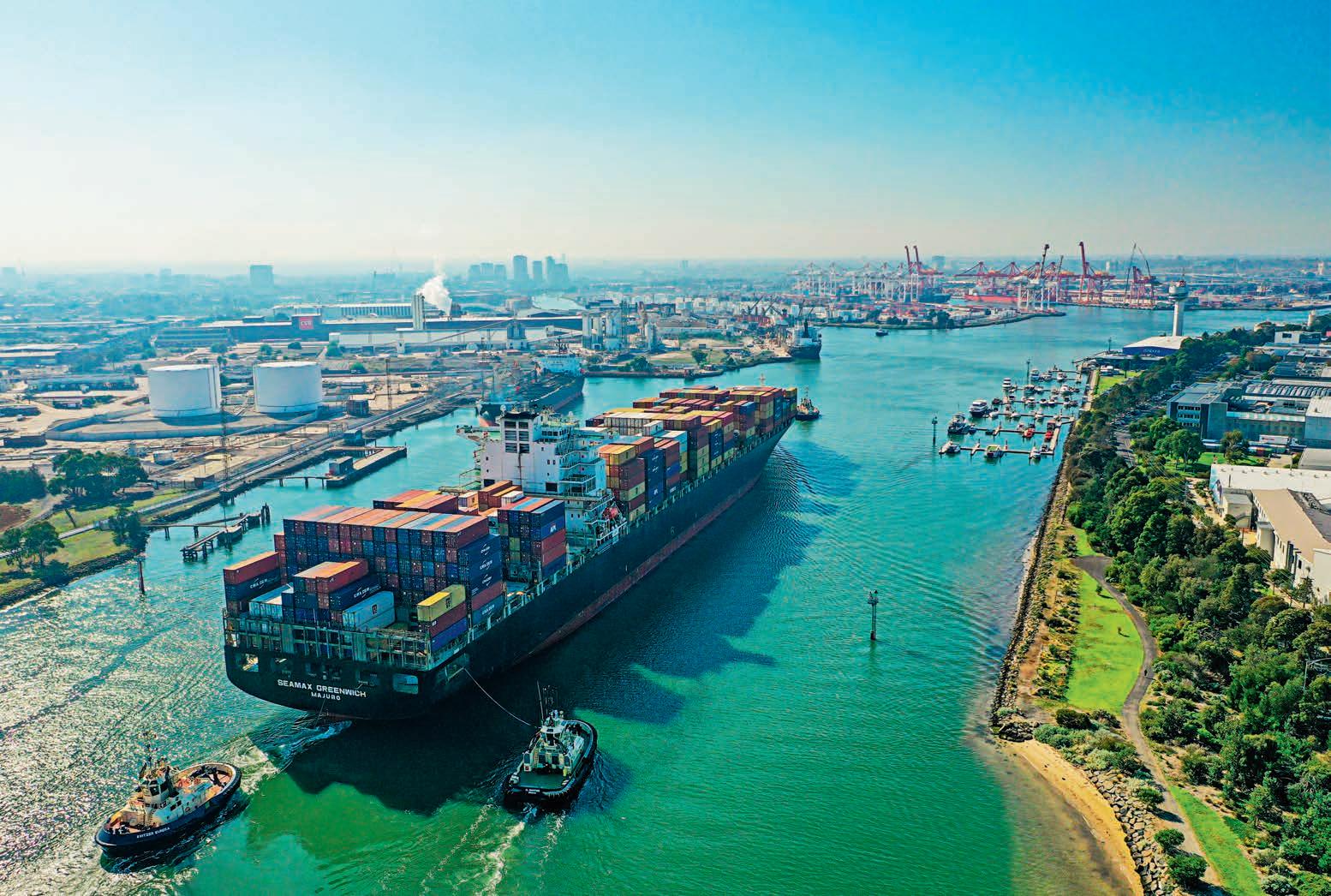
The average length of time spent in berth by container ships at Sydney’s Port Botany during
2020-21 almost doubled from 12 to 21 hours, the report added.
It also cited data showing freight rates on key global trade routes had increased seven-fold during the 12 months from late 2020 until the report was released.
“Pre-pandemic, the sector would have likely been able to manage such a surge in containerised demand, but the simultaneous destabilisation of almost every part of the supply chain has left them without any spare capacity and struggling to cope,” then-ACCC chairman Rod Sims said in 2021.
The supply chain has improved since then, significantly in the eyes of Case IH’s McCann, but he admits a return to pre-COVID-19 conditions for ag machinery buyers and sellers may not occur.

“I think it’s improved tenfold, probably one hundred-fold to be honest, in regards to supply,” McCann says.
“We’re probably not back to where we were pre-pandemic and in all honesty, I don’t think we’ll actually get there.
“I think the world has changed so dramatically, especially from a labour standpoint and I don’t know if the days of walking in and buying stuff off the shelf will come back.
“The parts supply has improved, but we’re so far out now … regardless of what tractor brand you’re selling, … I think our actual customer base is thinking so far forward now because it wasn’t just one portion of the business that was running late.”
McCann believes planning ahead with machinery purchases will become the industry norm and cites combine harvester buyers as an example.
Combines have always sold out quickly, even pre-pandemic, he says, and growers had become good at planning their purchases in advance to ensure they arrived in time.
This is now necessary for tractor buyers as well, McCann says, while manufacturers and dealers have also recognised the need for this planning.

“From a manufacturing standpoint we plan exceptionally heavily to the point of always reviewing the forecast and it is hard without a crystal ball, because we have the joys of our seasonal constraints occasionally,” he says.
“The dealers got a lot more engaged with forward planning, looking at what they’d sold previously, understanding what the customers’ needs were and then ideally getting in line for available stock that was going to come through.
“I think we’re probably better educated, and we’re probably planning better than we ever have, and that’s everybody - that’s growers, seed distributors, fertiliser manufacturers, tractor manufacturersbecause I think that’s just what we have to do and this is the new world we’re living in.”
While shipping delays were certainly a major contributor to the long delivery times experienced by agricultural machinery buyers, along with all many consumer goods, they were not the only factor involved.
Shortages of products such as tyres and microchips, plus lockdowns in areas where machines are built, caused further delays earlier in the process.
While challenges still exist, Northover praised the efforts of TMA members to overcome these and create an environment where Australia has recorded two straight years of record tractor sales.

“What our members did was really order quite aggressively at the beginning of this Covid cycle, so they had an understanding that it was going to be difficult,” he says.
“That’s been borne out by the fact that tractor sales for the last two years have been at record levels, so you couldn’t have done that if you didn’t have the stock coming.
“It wasn’t due to sharp lead times; it was due to forward thinking on their behalf, and I think they got that right.”
Northover also says the TMA will continue to advocate for its members around keeping stock flowing and progressively easing the delays throughout the supply chain.
“I think our efforts to continue to try and work with the authorities at our ports is important, and maybe the industry needs to keep working on that one because we just need to get better systems in place to manage freight once it hits the wharf and get it through the system quicker,” he says.
McCann believes the scheduled end of the government’s Temporary Full Expensing Program in June will cause a slowdown in demand but will “not fall off a cliff”, while supply will progressively improve.
“I don’t know if we’ll get back to the point any time soon where there’s an abundance of stock in a broadacre sense, with Steigers, Magnums and combines etc, but with some of the more lifestyle products I think we’ll get back to being able to walk in and purchase one,” he says.
“My advice to customers would be just keep planning. The more you plan, the easier it actually is for us to supply,” he says.

Privately-owned wood processing plants can now apply for a share of $110 million in federal government grant funding to enable the use of innovative technology.
The ‘Accelerate Adoption of Wood Processing Innovation Program’ will make grants of between $1 million and $5 million available to successful applications, who must also contribute a minimum of 60 per cent towards the project’s overall value.
The federal government has committed $110 million to the program between 2022-23 and 2025-26.
Department of Agriculture, Fisheries and Forestry
First Assistant Secretary for Agvet Chemicals, Fisheries, Forestry and Engagement, Emma Campbell, says the funding will allow producers to invest in a wide array of technologies to move the industry forward.
“Demand for wood and wood products is expected to increase significantly over the next 25 years, here in Australia and around the world,” she says.
“This program will support projects that make better use of our existing timber, add value to existing products, create new products or reduce the industry’s carbon footprint.
“By investing and upgrading Australian wood processing facilities, we will encourage different types of products and better use of materials to meet Australia’s future wood demands.”
Applications close on February 28 and can be made through www.communitygrants.gov.au.

TRACTORS
Power plan

The world’s first electric smart tractor manufacturer has gained extra funding towards exploring another on-farm power solution

The American company is part of a Farm Electrification Consortium – along with Gridtractor, Rhombus Energy Solutions, Current Ways, and Polaris Energy Services – which has been given a US$3 million (A$4.3 million) grant from the California Energy Commission.

The money is intended to “accelerate electrification of agricultural equipment and demonstrate the ability of batteries in on-farm equipment to keep


Monarch Tractor first launched its autonomous and electric tractor in 2020



Monarch first launched its autonomous and electric tractor in 2020, which it said was the world’s first, before announcing the following year that more than US$80 million (A$115 million) in funding had been secured towards accelerating the tractor’s production.
Monarch also collaborated with CNH Industrial on the New Holland T4 Electric Power tractor, which was unveiled as a prototype late last year.



We had the pleasure of visiting the Geelong Classic Truck and Vintage Machinery show last month. It was a great day with some very interesting machinery on show.
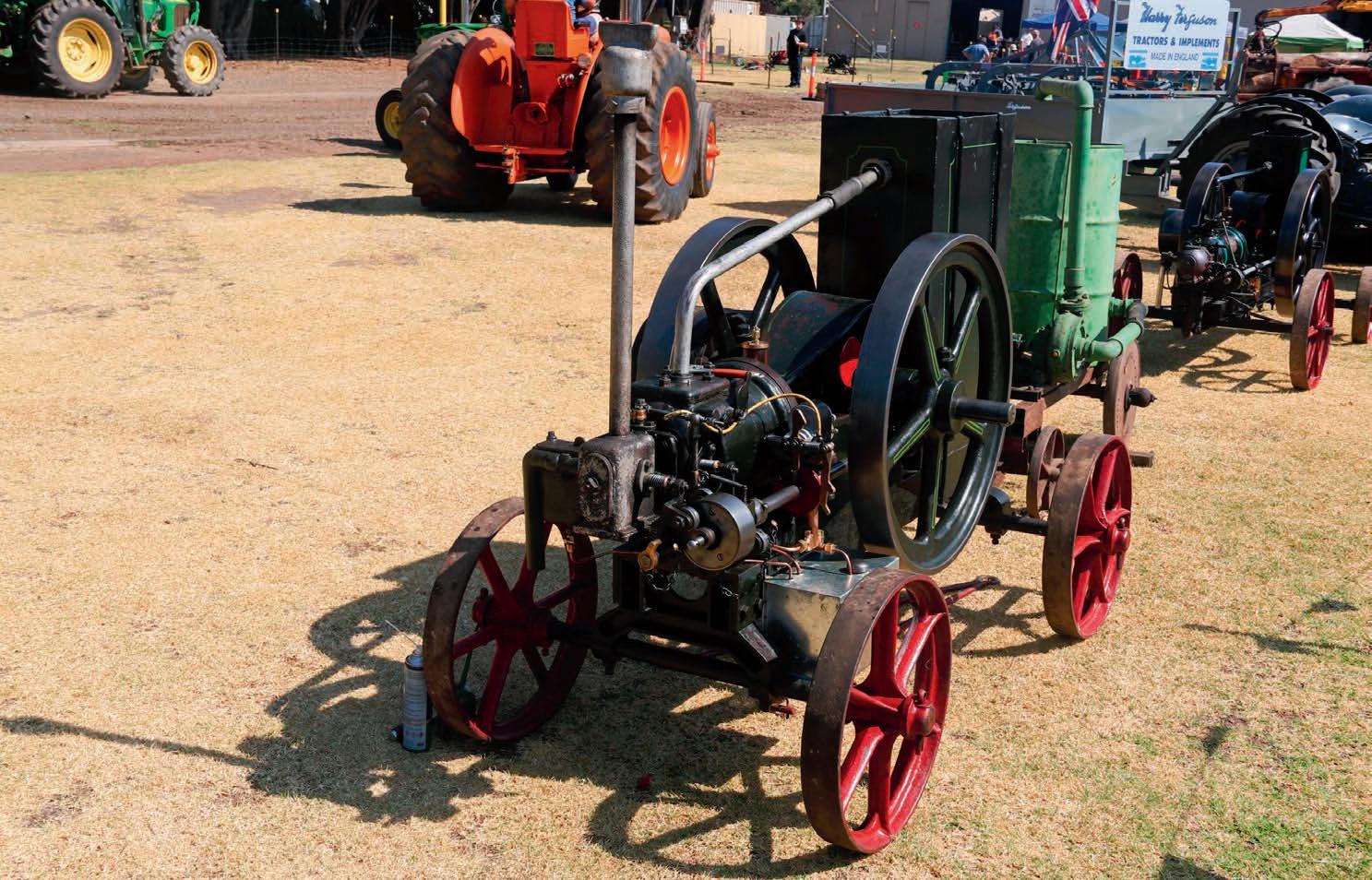
1925 Ronaldson Tippett engine
The first machine we were drawn to was a 1925 Ronaldson Tippett engine. Originally owned by the Chambliss family, the engine was used to run a
shearing shed in Mount Moria. While on the day the ‘Tippett’ was running a water pump, over its life the Tippett and its belt drive were used to run a variety of different machines – from water pumps and shearing machines to saw benches and just about anything we use now with modern machinery.
An extremely versatile and useful engine for its day, the 1925 engine starts on petrol with a spark plug heating up a coil, then once hot enough it is run
on kero, cranking out a maximum of 4 horsepower. The old girl has had a bit of a touch up of late; a new fuel tank has been fitted on it (both petrol and kero), along with a reconditioned fuel pump and reconditioned magneto. It has had the valves resealed, a clean-up of the old paint work and a general polish. A true gem of antique machinery at its simplest and most functional.
We couldn’t go past having a look at what the Inter club had on show and were immediately drawn to the Farmall H MCormick/International.

The Farmall is distinctive right from the start, with its tricycle front wheel setup and oversized rear axle. This was an exceptional example of the International red that the tractors are synonymous with.
Equipped with a petrol/kero engine, this model H produces 26 hp with a drawbar pull of nearly 1700 kg. One of the versatile features of the tractor is the extra wide rear axle and hollow rear wheel hubs, allowing the wheels to be spun to give it extra wide wheel tracks – from 110cm to 200 cm width. For this reason, this Farmall lent itself ideally to row crop applications with the added advantage of being able to almost turn itself on a circle because of the closely spaced nose wheels.
The next machine we saw was a 1955 TEF (diesel) model Ferguson. Owner Murray Kurzman bought the tractor 20 years ago and put a clutch in it – but apart from that it’s been untouched mechanically and is in perfect working order.
Cairns: 07 4044 4440 Tully: 07 4068 1311
Tolga: 07 4095 4132 Innisfail: 07 4061 2033
Mackay: 07 4940 7300
Proserpine: 07 4945 3590
ARCUSINFORSTACK8.12BALE ACCUMULATOR
*NEW*Stacksupto5largesquarebales. QMN11989. TA1158731.
$74,800
DIGGATRENCHDIGGER
threepointlinkagetrencherwithcombp chain.Suit35HPtractor.QMN10200.
TA1158734.
$4,600
ORSIPRESTIGEOFFSET
Frontalsidemulcher.Vegetationupto 8cm.Rearorlateraltotractor.

QMN10655. TA1158736. $24,450
FIELDLINKRAPIDSPRAY400L ECOTANK
Tobecleared-with3manualcontrol valves,75l/pminBertolinipump,10m hose w/ spraygun,galvanisedframe, 17Lhandwashtank,fastdrainvalve...
TA1158738. $4,000
SILVANDCM-S24900X
900Lstainlesssteeltwindiscspreader. Stainlesssteelhopperaccurate spreading20-24m.QMN13029. TA1158740.
$17,200
HYDRAPOWERHT4HIGHFLOW TRENCHER




Trenchertosuitaskidsteerloader.Itis setuptodig300mmwidebyupto 1200mm.Usedoncefordemo.Located Mackay.Makeanoffer... TA1145593.


$24,000
WOODSRC54
2019,RC5painted5footslasherwith trailingwheel.Suitstractor15-50HP. QMN10938. TA1158733. $3,980

ORSIW-FORREST2100 forrestrymulcher.Canshredvegetation upto18cmdiameter.QMN10558. TA1158735. $27,600
TIGERCUTPRUNINGSHEARS 250R WithWD9rotatoron8Thitch.Heavyduty limbpruningupto250mmdiameter.
QMN11966. TA1158737. $17,850
NOBILIVKD190/06 *NEW*mulcher.Mediumduty, multi-purpose.Finemulchproducedwith 2mulchingbars,arestrictorbarand rakes.QMN13028. TA1158739.




$12,400
KUBOTAM7.171
Lowhoursrow-cropcabtractor,excane haulout,powershifttransmission,located Proserpine..Prosie. TA1161608.

$121,000
HARVESTERTRACKWEIGHTS51 KG
Caneharvestertrackweightsavailable individuallyorasasetof6withbolts. 640mmx640mmx40mm.Internal diameter350mm.Availableforcollection Mackay.PartsClearance. TA1115243.
$55
“Massey Harris joined up with Ferguson in 1953 when they brought the diesel motor, that diesel motor was made in Coventry, they called it a Graham Gold,” Kurzman said.
He explained the push-back received when these diesel engines came out here in 1952, with petrol engines and petrol/kero being the status quo.
The reliability and longevity of the Ferguson diesel engines soon became part of the tapestry of a farming environment and the rest is history.
“They used to say they were hard starters, because they lacked compression, but once you build a compression up, that fires straight off the key”.
The ’55 TEF made 26 hp (belt claimed) from its 4 cylinder diesel engine and Kurzman’s was just a great example of the machines that made history all over the world.
The 1948 Caterpillar D4. For me, this was the jewel in the crown of the day. Having worked on a remote cattle station in the Northern Territory I witnessed Cats do a myriad of tasks that simply no other machine could.

The ’48 Cat track-type tractor was cleverly engineered to suit its working conditions. For instance, this model offered a pilot motor start, or as they are called in the US, “pony motors”, a two cylinder horizontally opposed petrol engine.
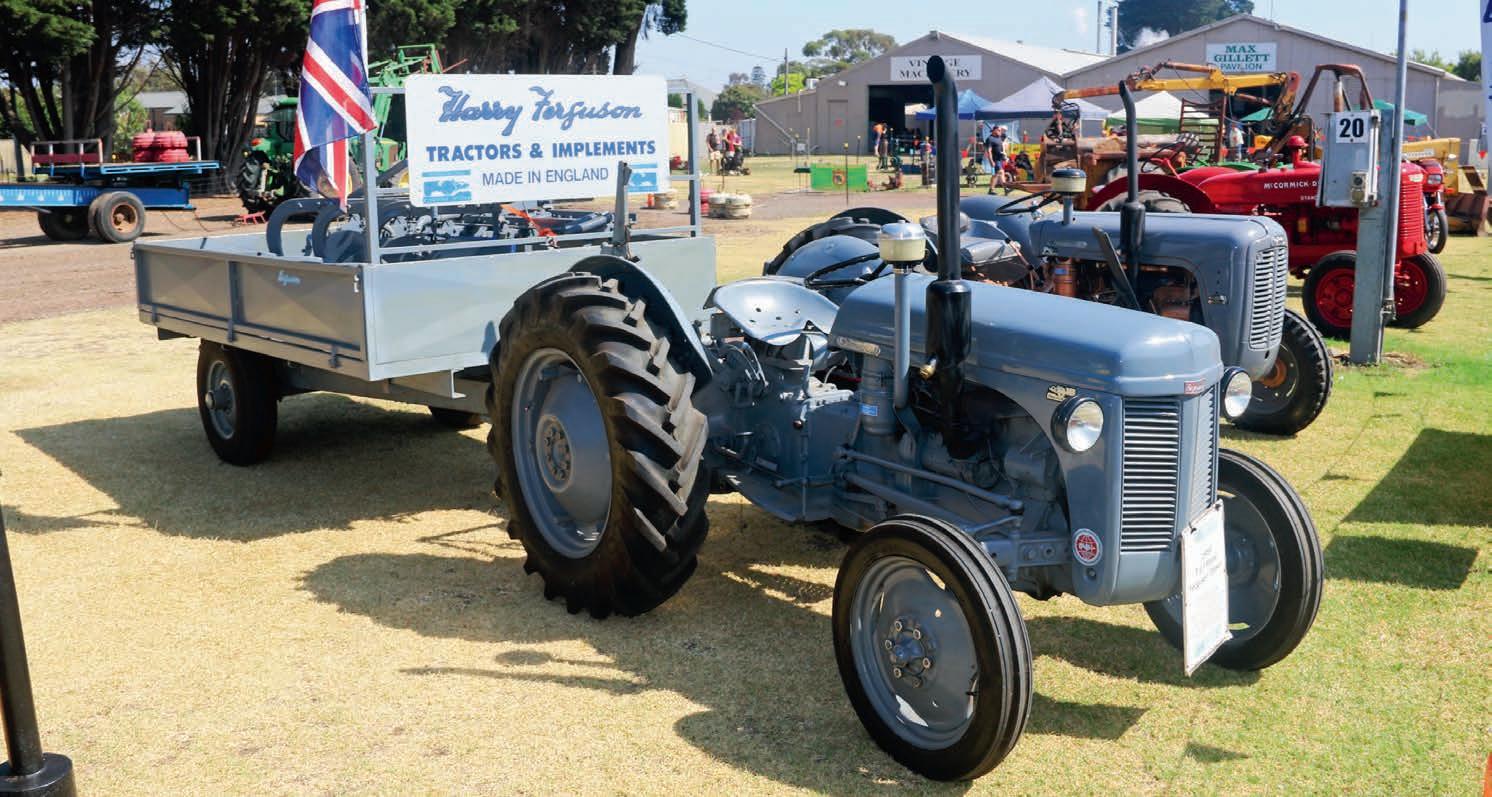
This was a design feature to save on engine wear, as 70 per cent wear traditionally occurs at start-up, and contributed to the legacy of Caterpillar diesels having a reputation for reliability and durability.
This model had oil pressure before it even fired –the operator would start that two-cylinder opposed engine to circulate coolant and start to warm up
the engine. The operator could then put the main engine into gear once the pressure and temperature were right. This initially was because that starting system meant the operator always had oil pressure, and everything was lubricated and warmed up before it even started to fire.
This machine was traditionally agricultural and not an earthmoving piece of machinery of which Cat is now predominantly known for. The ’48 Cat D4 is part of a truly innovative and reliable workhorse dynasty of machines.

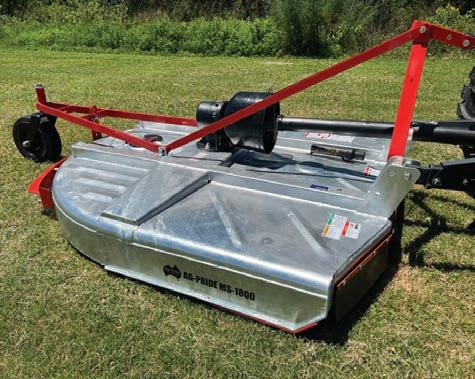




Here are upcoming field day and agricultural events for 2023. Information was current as of going to press
The ActewAGL Royal Canberra Show, Canberra’s largest all ages event, is staged annually by the Royal National Capital Agricultural Society. While having agriculture at its core, the Show has broadened over the years to reflect more entertainment, educational features and exhibitions, ensuring that there is a vibrant mix of ‘city meeting country’ and ‘country meeting city’.
When: February 24–26, 2023
More info: www.canberrashow.org.au
Wimmera Machinery Field Days is hosted at the purposebuilt Wimmera Events Centre at Longerenong near Horsham in western Victoria and is one of Australia’s largest agricultural and agribusiness trade shows.

When: March 7–9, 2023
More info: wimmerafielddays.com.au
Experience King Island’s major annual event, the King Island Agricultural, Horticultural & Pastoral Society Show. Visit the pavilion for the arts and crafts display and wool judging, tasty food is for sale (the donuts are a must!). There is cattle judging, horse riding displays, pet competitions and so much more.
When: March 7, 2023
More info: kingislandshow37374937.wordpress.com
Over two days, the community comes together to showcase the diversity of agricultural life in WA and how ‘ordinary things can be done extraordinarily well’. It is a fantastic day out for the whole family with lots to see and do, including prestigious livestock, art, photography, craft, home industries, fashion, rides and entertainment for all ages, plus a spectacular Rodeo on Saturday night.
When: March 10–11, 2023
More info: www.woolorama.com.au
Central Districts Field Days is a unique agriculture event where communities come together to connect, discover
and experience the future of New Zealand’s primary industries. From farmers and foodies to tech heads and townies New Zealand’s largest regional field days has something for everyone. The event showcases, cutting edge machinery and equipment, the latest developments in rural innovation, FXM shows, lifestyle stalls, regional food and local brews.
When: March 16–18, 2023
More info: cdfielddays.co.nz
Held at Yakka Park, Lucindale, there will be farm machinery and other local business exhibitors, dog trials, displays, competitions and entertainment for all the family.
When: March 17-19, 2023
More info: www.sefd.com.au
The Toowoomba Royal Show is an unrivalled production of the very best in entertainment and agriculture displays on the Darling Downs since 1860. Every year has new entertainment so bring the family and enjoy world class acts, competitions and exhilarating rides in sideshow alley.
When: March 31–April 1, 2023
More info: toowoombashow.com.au
The Karoonda Farm Fair is an annual two-day event showcasing local, state and interstate farming and general interest products, services and events. With over 300 exhibitors each year, and crowds of around 7,000–10,000 over the two days, Karoonda Farm Fair caters for everyone.
When: March 31-April 1, 2023
More info: farmfair.com.au
Held in the heart of Victoria at Kings Park, Seymour, the Expo features approximately 500 exhibitors and attracts 20,000 visitors across three days. Explore the latest technology, practices and trends in small and backyard farming, visit the animals and enjoy the shopping, food and entertainment.
When: March 31-April 2, 2023
More info: seymourexpo.com.au


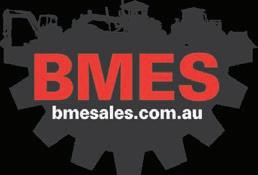
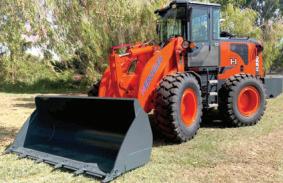






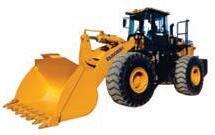
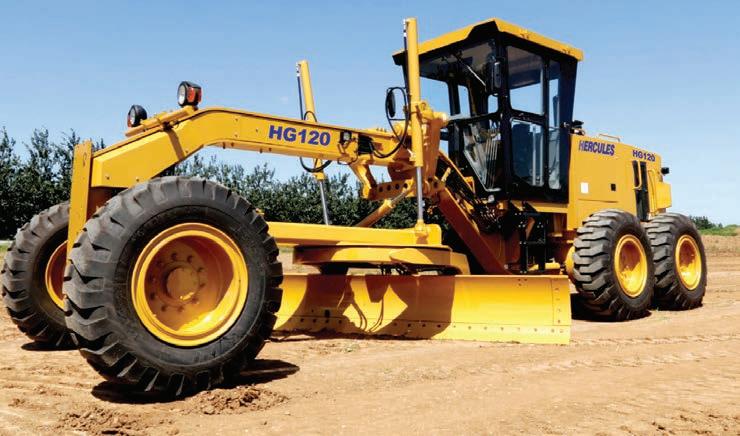
With more than 150 years of history as a company, Munro Engineers has stood the test of time.
Almost 60 of those years have been spent producing post drivers and Munro just keeps doing what they do, with the same going for the products themselves.
The post drivers might not have shiny new bells and whistles added every few months, but they don’t need to when they keep delivering consistently and with reliability for their users.
One of many examples of this is with ABK Fencing, whose owner Bob Kitson has got 19 years of service – and counting – from just two Munro post drivers.
“I’ve got the percussion driver and have had that for eight or nine years,” Kitson says.
“Before that I had a drop hammer driver from them for 10 years.
“I just found the percussion driver a lot easier on my body because you’ve got the ring that holds
the post, so the machine does all the work for you and you’re not hanging off a crowbar to get the post straight.
“You don’t need all the guarding, so I can get much closer to buildings and things with the machines.”
Kitson’s loyalty to Munro products can be traced back even earlier than the time he has been in business.
“I haven’t used too many other machines over 20 plus years of fencing,” he says.
“My boss that I worked for for six years had a Munro, and when I worked on a dairy farm they had a Munro, so everyone’s had a Munro that I’ve worked with.”
Munro’s percussion driver – or AutoDriver to use its official name – is one of two styles of post driver manufactured by the company alongside the drop hammer.

It is the most popular with fencing contractors
such as Kitson, who is based west of Melbourne in the town of Anakie.
Beyond the post driver itself, Munro’s customer service has also helped keep Kitson loyal.
“They are easy to contact and they send out parts really quickly, which is good,” he says.
“My other benefit is that I’m only an hour down the road from them too, which certainly helps.”
Munro Engineers are based in Ballarat, where they have been building post drivers since 1964.
The AutoDriver is capable of drilling up to 1.2m deep and has tractor-added downforce, which Munro owner Warren McLean says improves efficiency by about three times.
While both the AutoDriver and drop hammer drivers are very safe, McLean adds, and the drop hammer remains Munro’s biggest seller, it is the AutoDriver’s efficiency combined with the reduced strain on the operator that makes it desirable for contractors such as Kitson.
“The percussion machines are faster, safer, noisier and more expensive than the drop hammer machines,” McLean says.
“The reason they’re safer is the head of the hammer doesn’t leave the top of the post – all the hammering is internal.
“That’s where it’s got an advantage over the dropping machine, but it also depends on how much fencing you’re going to be doing.
“If you’re a farmer and you’re only doing a couple of kilometres a year, you could purchase a drop hammer machine and you would only lose five hours every couple of kilometres.”
Munro’s full range can be viewed at www.munroeng.com
Parts available for the following makes and models of tractors

585, 595, 685, 695, 800, 830, 832, 870
2WD, 885, 895, 900, 930, 932, 956, 970, 1030, 1032, 1070, 1194, 1270, 1370, 1390, 1394, 1594, 1690, 2090, 2094, 2096, 2290, 2290, 2294, 2390, 2394, 2470, 2590, 2594, 2670, 2870, 3394, 3594, 4230, 4496, 4694, 4994, 7110, 7210, CVX 170, CX60, MAGNUM
275, MAGNUM 290, MAGNUM 305, MX80C, MX255, MX285, PUMA, STX 375 QUADTRACK, STX425, STX440 QUADTRACK, STX450, STX485, STX500
1896, 4690, 4890, 4894, 5120, 5130, 5140, 5150, 7120, 7130, 7140, 7150, 7220, 7230, 7240, 7250, 8910, 8920, 8930, 8940, 8950, 9130, 9150, 9170, 9180, 9250, 9260, 9280, 9350, 9370
QUADTRACK, 9380 QUADTRACK, 9390, MX90, MX130, MX135, MX150, MX230, MX240, MX200, MX220, MXM175, MX270, MXM190, STX375, STX440, STX480
CHALLENGER SERIES – 35, 45, 55, 65, 65C, 75, 75C, 75E, 85C, 85D, 95E, 65E TRACK MACHINE, MT765D, MT765C, MT865C
3000, 3610, 4000, 4600, 4610, 5000, 5610, 5640, 6000, 6600, 6610, 6700, 6810, 7000, 7600, 7700, 7710, 7840, 8000, 8210, 8230, 8340, 8401, 8600, 8700, 9000, 9600, 9700,, TW5, TW10, TW15, TW20, TW25, TW30
385, 414, 434, 444, 484, 514, 554, 564, 574, 585, 624, 660, 674, 686, 696, 706, 756,766, 786, 856, 866, 885, 886, 956, 976, 986, 1056, 1066, 1086, 1256, 1466, 1468, 1486, 1566, 1568, 1586, 3288, 3388, 3588, 3688, 3788, 4166, 4186, 4366, 4386, 4568, 4586, 4786, 5088,
7210, 7330, 7510, 7520, 7600, 7610, 7700, 7800, 7810, 7920, 7930, 8100, 8200, 8285R, 8300, 8310, 8330, 8345RT, 8360RT, 8370RT, 8400, 8400 TRACK, 8410, 8430, 8440, 8450, 8520, 8520T, 8530, 8630, 8640, 8650, 8760, 8770, 8850, 8960, 8970, 9400, 9410R, 9420T, 9430T
7840, 8430, 8560, 8870, 8970, 9482, 9682, 9860, 9880, 9882, 9482, 9484, G210, G240, L85, L95, T6020, T7030, TG230, TG235, TG255, TG285, TJ375, TJ425, TJ450, TL70, TL90, TM125, TM135, TM195, TN55D, TN95F, TS100, TS100A, TS110A, TS125A, T9060
KP525, KP 1350, KP1325, KP1400, BEARCAT 3 & 4, COUGAR 2 & 4 CM250, PANTHER 2, PANTHER 3 ST310 & ST325, PANTHER 4 CM325, TIGER ST470,
500, 700, 800, 835, 836, 855, 875, 895, 900, 935, 945, 946, 950, 956, 975, 976, 1150, 1156
ALSO WRECKING VARIOUS MODELS OF CHAMBERLAIN, DEUTZ FAHR, FIAT, JCB, LAMBORGHINI, MASSEY FERGUSON, MCCORMICK, SAME – CALL US TO ENQUIRE
Follow us on Facebook to keep up to date with new stock that’s regularly coming in @ruralwrecking

Wrecking largest range of tractors in Northern NSW







Quality engineering, plenty of experience and an app that provides customised data about optimal tyre pressure are just a few ways Maxam is leading the way
While the Maxam brand is a relative newcomer to the Australian market, its heritage gives a good insight as to how it is establishing a strong presence in the agricultural and earthmoving categories.
A division of Sailun Group, Maxam designs, manufactures and distributes off-road specialty tyre products globally.
Sailun has a history of major commitment to research and development and this extends to being a significant player in the design and creation of tyre manufacturing equipment which it supplies to some of the world’s major brands.
Sailun is currently the world’s 15th largest tyre company, the 2nd largest in China and is sold in over 160 countries worldwide.
As a major specialty tyre manufacturer and distributor, Maxam has a reputation for market-leading performance, reliability and delivered value.
To ensure quality, the organisation’s foundation is centred around innovative engineering and advanced manufacturing platforms and technology.
Maxam’s research and development program concentrates on the many attributes that affect product performance in the field.
With equipment and building capabilities that match tier-one global manufacturers, Maxam boasts multiple well-established R&D centres globally in China – which is also its global R&D headquarters - Vietnam, Europe, and North America.
Each dedicated R&D centre provides an in-depth understanding of the local user’s specific demands and utilises cutting-edge technology and innovation to form an integrated global R&D system.
In addition, Maxam’s individual R&D centres cover market research, product planning, formula development and process development systems.
From structural design to product verification testing, each centre uses both independent research and cutting-edge development capabilities.
Maxam’s Agrixtra is designed to be everything that a farmer needs
One of the main tyres in Maxam’s agricultural range is the Agrixtra, which is designed to be everything a farmer needs.
The Agrixtra series features a premium 45-degree lug design which delivers long wear and provides a strong resistance to punctures and damage.
The flexible sidewall and radial casing construction is designed to reduce operator fatigue, providing a smoother and more comfortable ride.
The self-cleaning wide tread design provides high levels of traction in the field, excellent grip and quiet running on the road.

Importantly, the tyres also have an optimised footprint to ensure stable operation and minimise soil compaction.
The Agrixtra tyres are available in a range of sizes and models, with the Agrixtra H specifically designed for harvesters and the narrow Agrixtra N suitable for sprayers.


Maxam also produces MS961R Flotxtra tyres range for customers requiring flotation tyres.

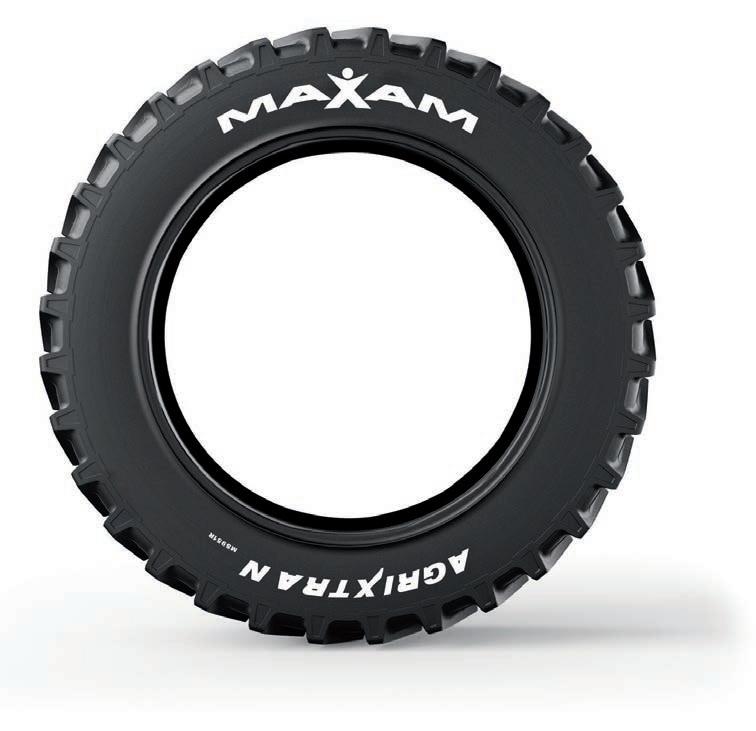
With such a wide array of options, Maxam has a tyre to suit whatever agricultural application is being undertaken.
Having the correct tyre is just part of the equation, as by employing the optimal pressure required per application, Maxam can help maximise the capabilities of every tyre.
This is where Maxam’s app and website enter the picture for the dilligent operator.
It features an agricultural tyre pressure calculator, where farmers can enter customised data and find out the best tyre pressure for their scenario.
“Farmers can pick which machine they want to get the tyre pressure for,” Maxam Australian representative Eric Harrington says.
“Simply enter the number of tyres per axle, what the speed is, what the tyre size is and load per axle. They do need to know the machine weight, which in theory most of them should do, and then it will give you recommended pressures.”
“There’s a ready reckoning tool they have in their pocket if they’re really serious about trying to get the best tyre life, especially in this day and age with soil compaction issues being such a hot topic.
“For optimising the tyre performance and trying to get the most out of everything, it is a handy thing to have and see what it comes up with in terms of suggested pressures.”
Maxam’s full range can be viewed at www.maxamtyres.com.au
We

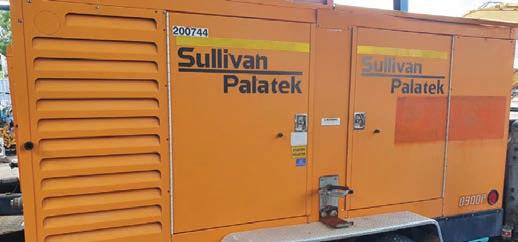



Nominations are officially open for Capricorn members to nominate their outstanding apprentices as Capricorn Rising Stars
Capricorn Rising Stars is an opportunity for automotive workshops and repair centres to recognise, reward and retain apprentices for their ongoing effort and dedication.


A nomination to Capricorn Rising Stars will not only benefit the individual but the whole team, as it promotes and embeds a positive workshop culture which rewards commitment and passion.
As Australasia’s largest automotive cooperative, Capricorn helps businesses be sustainable and thrive in the automotive aftermarket industry.
The prestigious achievement award recognises talented apprentices who show initiative, thirst for knowledge and commitment.
The competition is open to all types of workshops and disciplines; from panel and fabrication to auto-electrical, general mechanical, heavy diesel and more.
“Encouraging and acknowledging future leaders is an important part of growing and supporting the automotive industry,” Capricorn CEO Automotive Brad Gannon says.
“We at Capricorn want to help our members strengthen their teams and believe recognition and reward will help businesses attract and retain the best talent.”
Capricorn members are being encouraged to nominate their star apprentices as they continue to develop their technical proficiency.
Recognising an apprentice’s commitment will keep them engaged and excited about promising careers ahead of them.
Every apprentice nominated will benefit by receiving a certificate sent to their workshop.
The Capricorn Rising Stars competition highlights the importance of apprentices to the
automotive aftermarket industries in Australia and New Zealand.
The competition also seeks to encourage new talent to join the industry, ultimately generating more qualified automotive repairers to ensure the industry’s continued future growth and strength.
Over $27,000 in shared cash and prizes is up for grabs for the top five apprentices, overall winner and nominating workshops.
Capricorn thanks long-term program sponsors Castrol, Repco and the Workshop Whisperer for being a part of this valuable automotive aftermarket industry recognition program.
Capricorn Members are encouraged to nominate
New Zealand’s Marama Thompson was named as Capricorn’s 2022 Rising Star
their star apprentices at cap.coop/stars.
Entries close on 30th April 2023 and Capricorn will announce the overall winner in early August 2023, with all five finalists announced in July.
To find out more about Capricorn or to join Australasia’s largest automotive cooperative visit capricorn.coop/join or call 1800 327 437 (Australia) or 0800 401 444 (NZ).
TOSCANOMULCHERH/D 2020,H/Dconstruction,doubleorsinglesidelinkage,optional
SAMMUTTRUCKTRAYS
H/DAustralianmade.3mmor5mmfloor.Custombuild.Chassis modifications.Newandusedtrucksavailable.S360.
SAMMUTHARDOXTIPPERBODIES
H/Dbuild. Onepiecesides,2waygate.Optionalwellhoistortwin underbody.Optionaldropsides.Custombuild.Colourofchoice. Sandblastedandfinishedin2-pac.NewandUsedtrucksavailable. S362. TA1025485.
UNITEDIMPLEMENTS(USA)NEWTRAILINGBOX GRADERMADEINUSA 2021,MadeinUSA,heavydutybuild Hydraulicliftwheels,hydraulicangleadjustment 1800mmto3600mm.S363. TA1025493.
Pricefrom$5,900+GST
SAMMUTSPREADKING5000ORCHARD/VINEYARD SPREADER
2020,H/DAustralianbuild,frontorreardelivery.Sizesfrom2m3to 18m3,optionaltelescopicconveyor,optionalendrotororend
GEARMASTERTRAILINGTURFMOWER


2020,Buydirectfromthemanufacturerandsave!!!Wehavebeen manufacturingmowersinAustraliaforover25years!Australian made,onepiecestainlessdeck,fullgeardrive,stainlessdeck,75HP gearboxes,3plortrailing,sizesfrom1.5mtrto12mtr,suitablefor Turffarms,golfcourses,councils,contractorsandmore!.S364. TA1025498.
Pricefrom$17,000+GST
SAMMUTMILLMUDSPREADERS,AUSTRALIANMADE
2020,H/DAustralianmade Fullhydraulicdrive,singleor3row Frontfeed,Singleordoubleaxle,optionalrearspinners Sizesfrom8m3to30m3.S365. TA1025500.
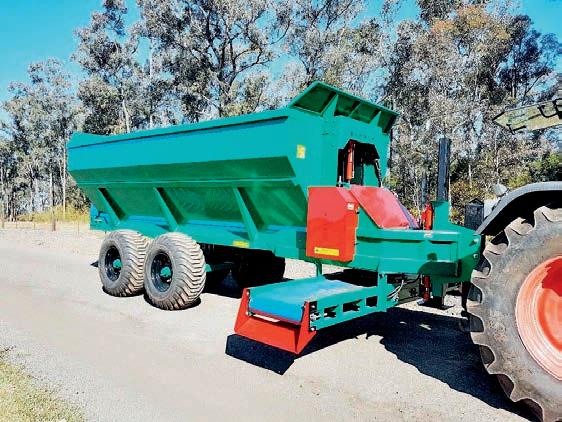


Pricefrom$28,000+GST
SAMMUTSPREADERS
2020,H/DAustralianmade,fullhydraulicdrive Wecancustombuild.Optionalfrontfeed Optionalsidedelivery.Chainorbeltfloor Sizesfrom2m3to30m3.S367. TA1025524.
Pricefrom$18,000+GST
FIMAKSVERTICALFEEDMIXERS
2020,Hardenedbinandfloor,H/DComerItaliangearboxes,sizes from3m3to30m3,scales,incabcontrols,ptionalfoldingconveyor withoptionallength,reductionbox.S371. TA1025537.
From$25,000+GST
FIMAKS18TONE,TWINVERTICLEBEATER,MULCH/ MUCKSPREADERS
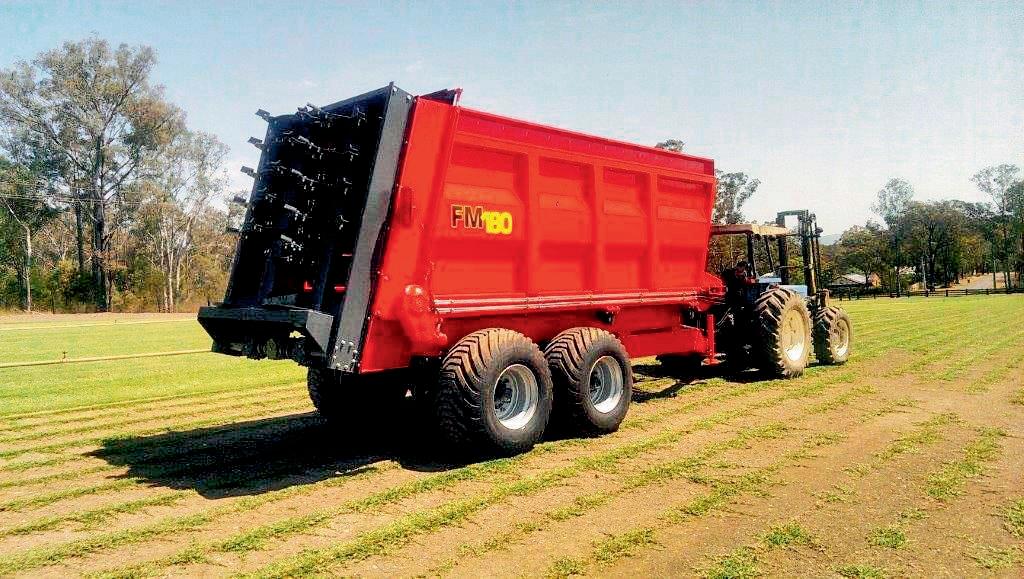



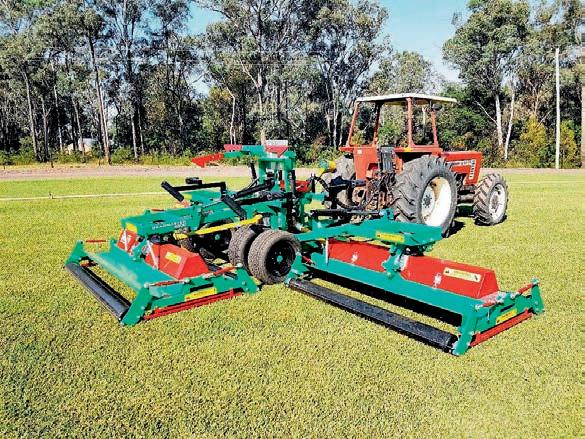


TOSCANOSTONEBURIEREXTRAHEAVYDUTY 2020,Extraheavyduty Hydraulicliftroller,geardrive Anti-panblades 2200mmto3200mm.S369. TA1025532.
Pricefrom$17,900+GST
TOSCANOSPEEDDISC
2020,Buydirectfromtheimporterandsave! Heavyduty,Hydraulicliftcrumbleroller,560mmdiscs,3pland trailing,2.5mtrto6mtr(trailing) S368. TA1025525.
Pricefrom$12,900+GST
2022,BuyDirectfromtheimporterandsave!From5toneto30 tone,heavyDutyconveyorchain,slurrydoor,incabcontrols,twin verticalbeaterswithbottomspinner,suitableforallyourhardto spreadproductsetcWetcowmanure,mulch,greenwasteetc,18 TONEMACHINE(ASPICTURED).S373. TA1025543.
From$69,000+GST
JCB’s tech-focused Fastrac iCON tractors are already making an impact in the Australian market – with more to come
JCB’s latest product – the Fastrac iCON 8330 tractor – has been a popular choice since its launch last year, and the demand is showing no signs of slowing down as units keep arriving Down Under.


The hype is set to continue, with JCB’s smaller Fastrac iCON 4220 also due to arrive in Australia soon and multiple tractors already pre-sold.
The British manufacturer, represented locally by distributor JCB CEA, has grown its local presence by sending a Fastrac sales engineer, James Coxon, from the UK to help Australian customers learn the array of technological features that make iCON tractors unique compared to previous models.
Coxon is working alongside JCB CEA’s Fastrac product manager Andrew Hacker, who says both the demand and customer response to the new tractors has been overwhelmingly positive and that supply is continuing to flow.
“We got four delivered before Christmas and everything that’s in the country now is retailed or has got people interested in it,” Hacker says.
“We demoed a tractor on the Darling Downs, and the operator posted a social media review, and it was very positive from someone who hadn’t driven a Fastrac before.
“There’s a fair bit of interest out there and we have tractors getting built and coming into the country monthly.”
Making JCB’s new tractor stand out from previous Fastracs is the iCON control suite.
It features a new armrest console and touchscreen display with fully integrated ISOBUS connectivity, plus simplified operation on the joystick.
One simple change for operators is now pushing the joystick forward to increase tractor speed, rather than tapping to the right-hand side.
There are five configurable buttons and a roller thumb control on the main joystick, and another four with a rocker switch on the second joystick.
Overall, iCON has been designed to bolster the tractor’s technological capability while remaining simple and efficient for users.
“It’s instantaneous and it improves the ability of the operator to control the tractor however they want,” Hacker says.
“The improved touch screen and your ability to program, setup profiles, change hydraulic flows
JCB’s Fastrac iCON 8330 has been popular since arriving in Australia
and assign buttons is all a huge step up from the previous model.”
The basic layout remains familiar to previous Fastrac users, however it is the new world of functionality and settings that takes the tractor’s potential to a different level.
Having all these opportunities at an operator’s fingertips is what makes the Fastrac iCON stand out,

but all these features become somewhat redundant if the customer does not know how to use them.
This is where both Hacker and JCB sales engineer Coxon enter the equation, spending time with each customer to demonstrate the new features and ensure they can make the most of their new purchase.


“All tractors these days are fairly technical, and you can just hand it over and a farmer will definitely know how to drive it, but to truly make the most of it and be fully efficient, you can spend half a day with them, show them a lot of things in the cab and it makes a huge difference,” Hacker says.
“We see Fastrac owners as part of an elite club. People that own Fastracs love them, and they keep coming back to buy more.
“The iCON is leaning into a whole new market of people who haven’t bought Fastracs before, so we want to make sure those people understand the tractor to make the most of it, understand all the buttons they can use and when they can use them.
“For us, the Fastrac is pretty special and we like looking after those customers.”
The Fastrac iCON 8330 is renowned for its speed, capable of reaching 70km/h, while a modified Fastrac earned the title of ‘world’s fastest tractor’ in 2019.
The 8330 produces 348hp (260kW) and 1450Nm of torque. Sitting below that in JCB’s range is the Fastrac iCON 4220, which has 235hp (175kW) of power and 1000Nm of torque.
The biggest difference between the 4220 and 8330 is the presence of four-wheel steering on the smaller model.
This makes it more agile for row cropping and vegetable farming, Hacker says, and for turning sharply.
“It’s a smaller chassis tractor, as you get when you go down in horsepower, but it still competes really well against every other high-end brand’s 220hp tractors as far as weight and capacities go,” he says.
JCB’s first Fastrac iCON 4220 is due to arrive in Australia within the next two months, while despite the demand customers can still pick up an 8330 without long wait times.
“We do have stock,” Hacker says.
“You speak to some people and they say, ‘you can’t get a tractor for a year’, and that’s not really the case here - you can order a Fastrac and we’ll get you one.”
Fastrac iCON tractors are distributed in Australia by JCB CEA’s extensive dealer network, to find your nearest outlet visit www.jcbcea.com.au or phone 1300 522 232.
A 20mm base plate, 15mm auger and SOM planetary transmissions provide strength and product longevity. Each model produces an excellent quality of mix for all varieties of materials.
•Digi Star electronic weighing system
•4 weigh bars for consistent and accurate weighing
•Independent chassis
•Heavy 3 stage jack
•PVC elevator
•8mm hardox rolled wall
•Large adjustable counter knives
•2 speed gearbox (twin auger model only)
•Wide angle driveshaft
•Hydraulic brakes
•Hydraulic/electric controls of all functions
•Side or front door discharge options
•Single or tandem axle options, both with 435/50R19.5 wheels
•3-year gearbox warranty

Introducing the revolutionary system that combines soil cultivation & raised bed formation in one pass. Bolt on our bed former to a power harrow or rotary tiller and you have the ‘one-pass’ Combovator system. The multipurpose tool that saves time, money and hassle.








Who would have thought 43 years after the Hawke-Keating government started the process of dismantling Australia’s prices and income regulatory system, that Australia would be back reintroducing a price control mechanism that caps gas and coal wholesale prices.
The Federal Government’s decision late last year to cap the price of coal used in Australia at $125 per tonne and gas at $12 per gigajoule has been sold to the public as a move to halt rising power prices.
Someone has not been reading their economic history. There is no lack of lessons from the past that point to the unintended consequences of governments intervening in markets to address short term political problems.
I suspect the one ‘certainty’ that is likely to be achieved by the government’s decision to cap energy prices is that Australia will face an oil and coal capital drought as companies decide to park up planned investments in Australian petroleum projects and look elsewhere for projects where returns are not capped by arbitrary government decisions.
Some older farmers have fond memories for the statutory marketing schemes, the aptly named single desks with the power to compulsorily acquire grains, wool, milk, meat and potatoes to prop up prices by limiting or underwriting production.
The unions also like schemes that empower them to limit competition which at their height saw farmers paying high tariffs on cars, tractors and trucks to protect uncompetitive manufacturing and local jobs, which hit farmers with higher input costs.
Intervening in the market has a domino effect as one person’s gain is another’s loss. High gas prices encourage exploration which keep the long-term price down.
Cap prices and the existing reserves are run down as exploration dries up which then sees the domestic price going up. It’s not rocket science.
I wonder how farmers would react if the government decided to end the export of beef or capped the local price of grain to support local feedlotters, dairy and egg producers to help the domestic consumer cope with cost-of-living pressures as meat, milk and eggs, like energy, are all essentials.
If it’s good enough to cap the price of energy, why isn’t it good enough to cap the price of food? Not that any of this is new, part of the original justification of putting in place the agricultural marketing schemes was to ensure food security.
We are not alone in messing with markets on the basis it will keep the domestic price of food down.
Other countries also think it is a great idea, for example, Argentina places a tax of 33 per cent on soybean exports, 31 per cent on soymeal and soy oil, and 12 per cent on wheat and corn all of which are cheered on by local voters.
More than 20 countries around the world have implemented some form of food export restrictions on their farmers including Egypt, India, Indonesia, Malaysia, Iran and Turkey, covering everything from wheat, corn, flour, tomato, vegetables oil, beans and chicken.
Predictably in every case, returns to growers are lower than what they should be and with it their incentive to invest and increase production. The result is over time production goes down, resulting in higher prices for consumers as farmers move production across to other products free of any government restrictions.
How and why the Australian government thought that no such thing would happen in our energy market is beyond me. All our major gas and coal producers have exploration acreage overseas and can redeploy resources at short notice.
More likely this government knows exactly what it is doing and their decision fits their ideological dislike of big coal and gas producers plus they think it will speed us towards the economic nirvana of a renewable economy.
It’s strange that government is worried about the cost of energy now when everything they are doing is driving us towards higher energy costs in 2030 as they push their renewables target.
If they reallycared about ensuring we had access to cheap energy they would stop subsidising renewable energy, drop the royalty on domestic gas and coal and put in place an exploration tax incentive scheme with the aim of keeping the drill rigs working.
The state governments also have much to answer for, they have had 18 months since gas prices started to climb in which they could have moved to lift the ban on fracking and incentivise the eastern states pipeline operators to build new pipes to plug gaps. But it seems they and their federal colleagues were more interested in talking about how renewables would reduce the cost of energy than addressing a predictable rise in gas prices that was supercharged by the Russian invasion of Ukraine last year.
No doubt the government will find what every government that has put in price caps or subsidies has found – that it is hard to extract itself from market intervention. Once in place, it’s hard to wean an industry or community off a subsidy.
Just look at the renewables sector. It can’t survive unless the government drives coal and gas out of the game, just as our car manufacturing sector in its day needed ever higher subsidies to survive.
The same will happen here when in 12 months the price cap is due to be lifted and the industries that have enjoyed the cheap gas bonanza come out wailing that Big Brother should keep up the good work and extend the price caps.
Here is another unintended consequence. Over the next 12 months what energy-using company will take the risk of locking into a long-term contract higher than $12 for gas or $125 per tonne for coal when they can simply lobby government to roll over the price caps?
I doubt if the new planned local urea production facilities not yet started will now get off the ground unless they have their own gas field, as no gas producer is going to sign up to supply long term domestic contracts that have prices set by government when they can switch to supplying the export market at far higher prices.
In turn this will see increasing pressure on the federal government to impose their proposed domestic gas reservation schemes – like the one we have in Western Australia which was set up over 40 years ago as part of the deal to encourage the long-term North West Shelf project to get off the ground – notably not as a political fix for a government’s short term domestic problems.
Any further government intervention will simply lead to demands for further government intervention. Already we are hearing of deals to compensate the producers using taxpayers’ money which raises the question why they did not just offer support to the gas users rather than a price cap.
It’s a predictable path we have embarked upon but one thing is for certain, the invisible hand of the market will eventually catch up with this government and it will hurt.
Invisible hand packs a punchCapping coal and gas prices will remove incentives for domestic exploration


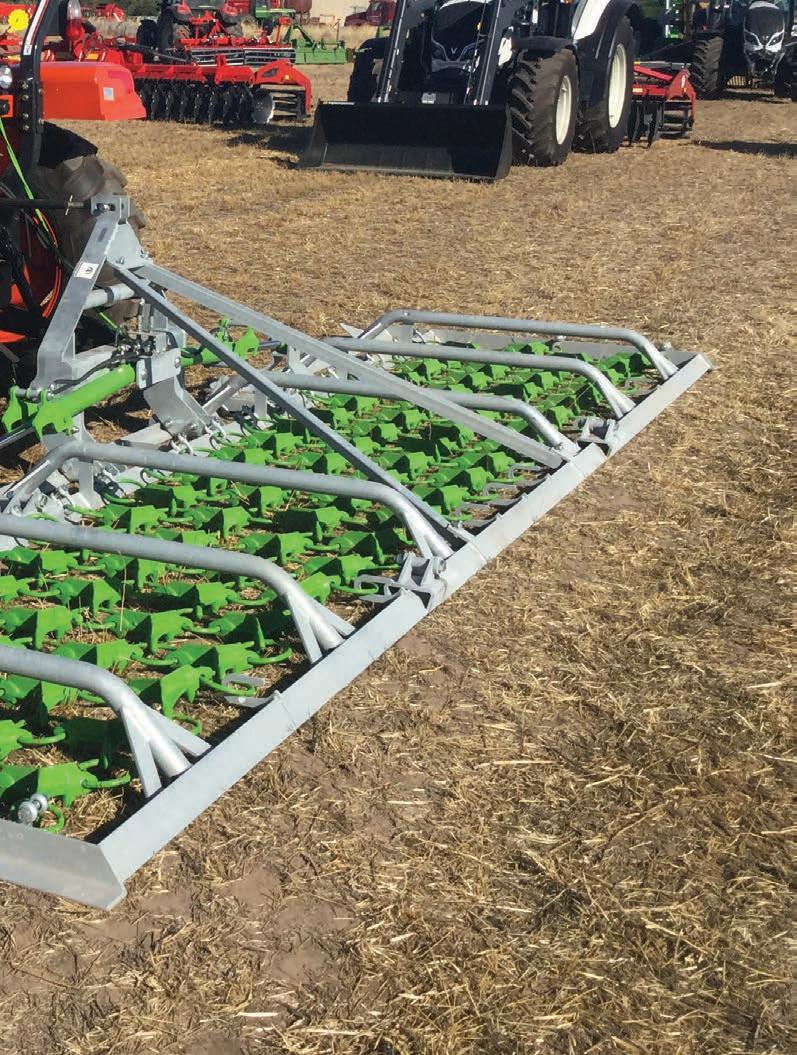


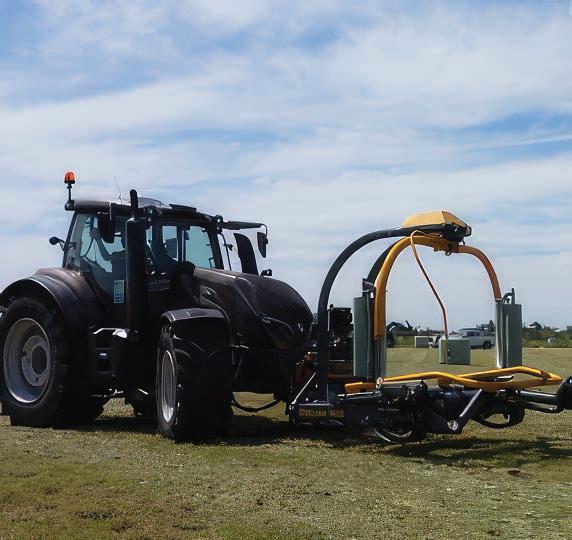

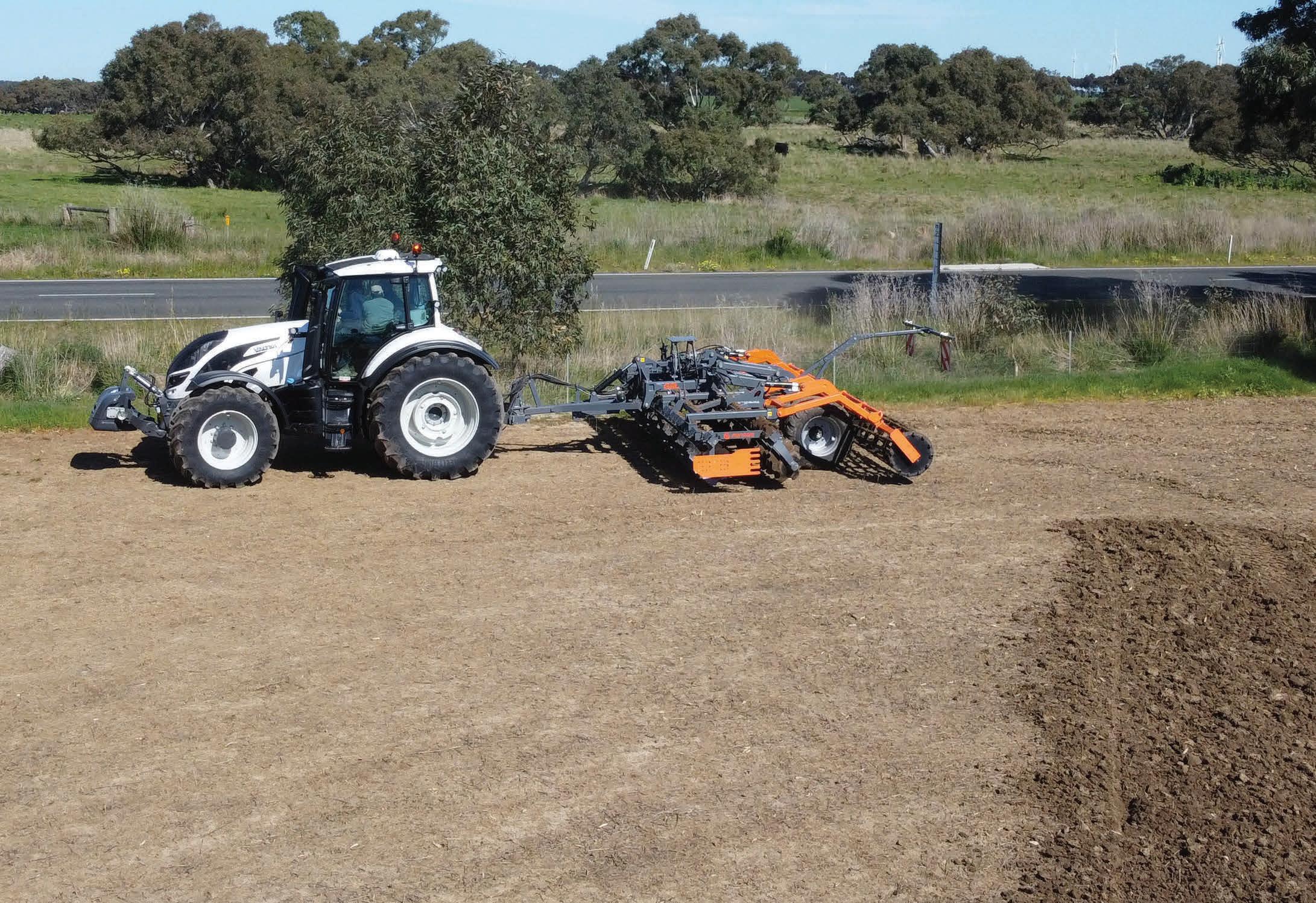







A report has outlined what Australia must counteract to ensure the agriculture sector’s strength continues in years to come
Australian agriculture’s response to five megatrends will influence the industry’s future, according to an Australian Bureau of Agricultural and Resource Economics and Sciences (ABARES) report.
The Where to Next for Australian Agriculture report says the industry is “scaling new heights in value” with this trend expected to continue in 2022-23. However, it adds that planning is required to offset future risks and ensure ongoing growth.
The megatrends identified in the report are:
• a more contested international trading and geopolitical landscape
• a changing climate
• the need for continued productivity growth
• an increasing number of high-income consumers
• new disruptive technologies
ABARES says making the right investments now will be key in guiding the sector’s growth, as agriculture pushes towards the National Farmers Federation’s (NFF) target of $100 billion in production value by 2030.
The two-part report highlights recent ideal growing conditions following a period of drought as a major driver of growth in the past few years, along with high global prices, culminating in total national output of around $85 billion for 2021-22.
ABARES executive director Jared Greenville says
government policy reforms in recent decades have helped drive productivity growth, adding that further change will require versatility.
“A number of trends have helped shape what agriculture looks like today – increased research and development, and investment has supported both productivity growth and innovation across the sector, while improved risk management has improved the resilience of farmers to climate and commodity price volatility,” he says.
“How Australia produces food and fibre today is very different to the past. More change should be expected as the sector continues to be shaped by existing and emerging mega-trends including global income growth, climate change, and the contested trading and geopolitical landscape.”
Greenville says domestic and international market volatility, in part caused by COVID-19 after-effects such as supply chain issues and labour shortages, are posing a challenge.
ABARES’ report also describes Australia’s labour market as “extremely tight” and says a slowdown in immigration since the pandemic began has resulted in the nation having 384,000 fewer workers than if the pre-pandemic trend had continued.
The report says industry and government investment will be required to get on top of the
challenges posed by the five megatrends. The NFF has also previously called for further investment into the agricultural sector in order to meet the $100 million output target.
To help Australia tackle these megatrends, ABARES says future research and development must focus on improving productivity and addressing climate change.
It also adds further productivity gains will be reliant on new ideas and knowledge, and the structural change that comes with implementing new practices and technologies.
Greenville says while the overall outlook is positive, Australia needs to find solutions to ongoing challenges and cannot afford to take its strong position for granted.
“Australia trades on a clean and green image but expectations are increasing,” he says.
“Sustainability will not only be an opportunity, but a point of competition. It will mean that Australian agriculture will need to meet these rising expectations.
“Overall, Australian agriculture is looking strong, but we will always need to be ready to adapt to whatever the next disruption might be, whether that’s from technology, climate or the geopolitical landscape.”
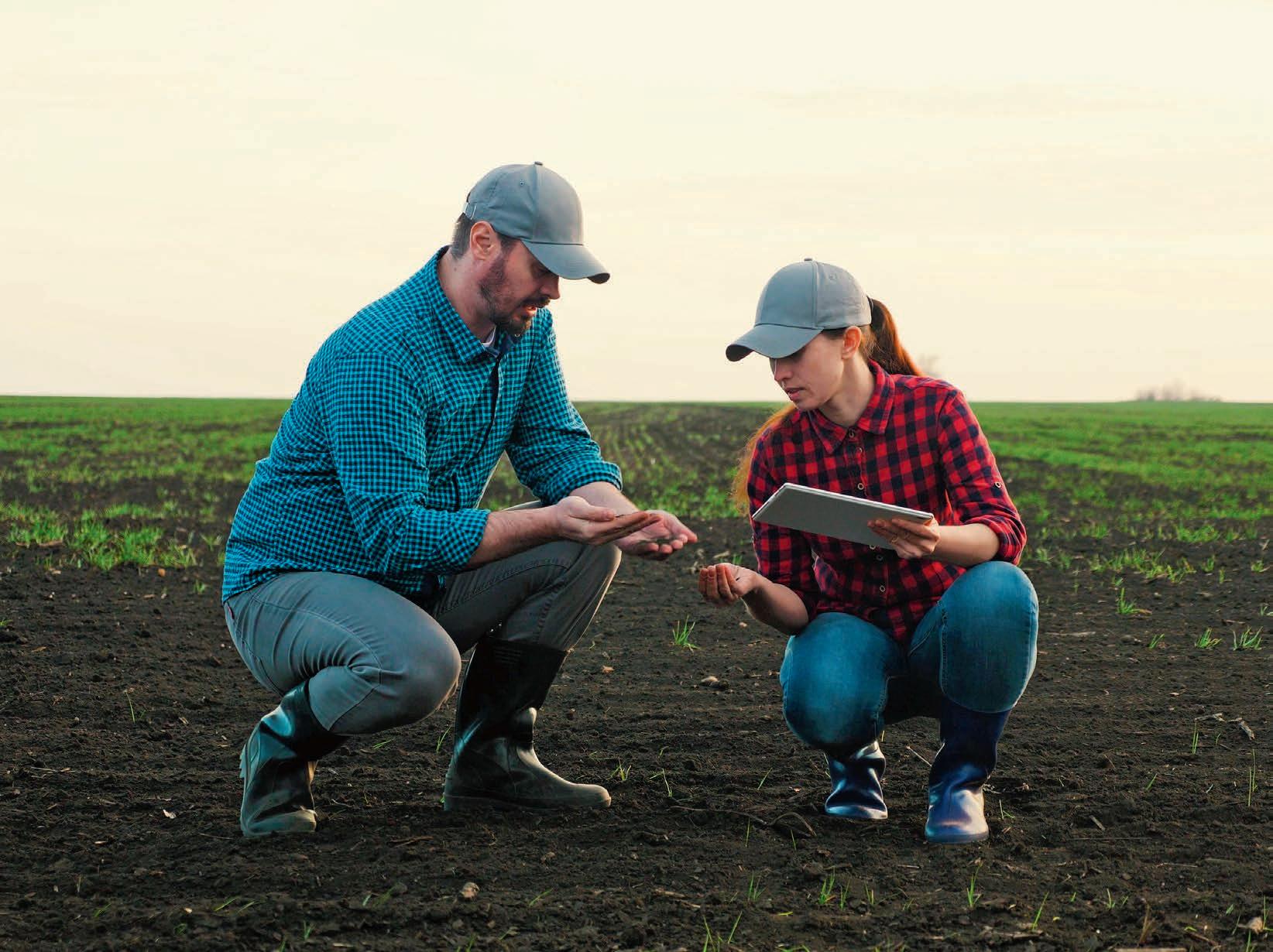
$39,850
4x4,frontendloaderwithforks,rops,roof, windscreen,72horsepowerapproximately,immaculate(front endlLoaderarms&forksbeingfitted).7122.
ALSO COMING IN: FORD 6640 TRACTOR, F/W ASSIST, CHALLENGE FEL, BUCKET & FORKS $47,000 FORD5610TRACTOR

2015,serialno:40940,engineno:4EW899,productidentificationno: JKUK0081J01H40940,1,800hoursapproximately,4cylinderdiesel, 2xbuckets:-450mmGP,900mmtiltingmudbucket,ripper, SWL65kg,folddownrollframe,hydraulictrackadjustment,new rubbertracks,goodtightmachine,readytogo.7062.
KUBOTAK008-3MINIEXCAVATOR(08)83238795 yearapprox.
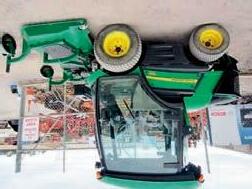
$16,850INCLGST
TA1070342.
MASSEYFERGUSON240TRACTOR(PH;08-83238795) 2 wheel drive,newtyresallround,extrahydraulicpump,powersteering,45 horsepowerapproximately,newroof.6893.
$13,450INCL
KUBOTABX2230D4WHEELDRIVESLASHER/TRACTOR 4 wheel drive,3cylinderdiesel,serialno:5H216,PTO,powersteering,3 pointlinkage,ROPS,withKubotaSlasherRCK54-22BX,1400mm(W), towbar.7139. TA1159594.
2wheeldrive,diesel,cab,frontweights,approximately7,600 hoursindicated,originalPerkinsV8motor,yearapprox. 1978, originalcondition,150horsepowerapproximately.6968. TA1093985. $26,450INCL GST
MASSEYFERGUSON11552WHEELDRIVETRACTOR(PH:08-8323 8795)



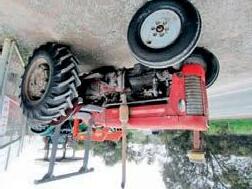
$38,500INCLGST
7114.
TA1149867.
MARSHALLMULTISPREAD825TFERTILISERSPREADER AS NEW, USEDONCE,serialno:12087770,2.5-3tonne,allhydraulicdrive,2 xhydraulicspinners,beltfeed,spreadwidthto24m.
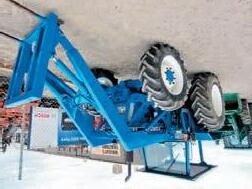

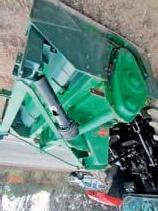
TA1076997.
$17,850INCLGST
tractorwithfrontmountedforklift,2 wheel drive,3pointlinkage,powersteering,tyresexcellentallround,45 horsepowerapproximately,mechanicallygood,beenthrough workshop&readytogo.6922.
MASSEYFERGUSON240TRACTORWITHFRONTMOUNTFORKLIFT (PH:08-83238795)
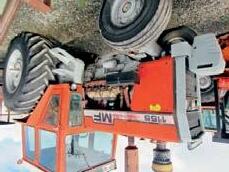
WILL
7108.
TA1143815.
JOHNDEERE6310TRACTOR 4wheeldrive,withJohnDeereself levellingloader,4.1bucket,hayforks,3pointlinkage,air conditioning,cabhasbeenreplaced,6,000hoursapproximately, newfronttyres,reartyres70%nocracks,approximately99 horsepower,magnificentallround,bestyouwillfind.
$8,450INCLGST
TA1151683.
COMPAIRAIRSILENCEDAIRCOMPRESSOR,MODEL:COMPACT75 (08)83238795 serialno:2002,engineno:634677,keystart,3,845 hoursapproximately,4cylinderPerkinsdiesel.7120.
$62,000INCLGST
JOHNDEERE5525FWATRACTOR(08)83238795 withJohnDeere selflevellingfrontendloader,4.1bucket,yearapproximately 2005-2008,4wheeldrive,ROPS&Roof,91horsepower approximately,PTO,withfrontweightframe(noweights), approximately1,968hoursindicated,3pointlinkage,2newfront tyres.7073. TA1125206.
BOTH GENUINE HOURS
$6,900INCLGST
BONNESWEEPER/ROADBROOMHYDRAULICDRIVE WITH CONTROLS 3pointlinkage,hydraulicdrive,withcontrols,tobe serviced.6877. TA1059344. $6,900INCL GST
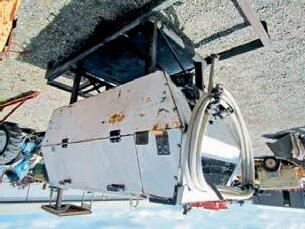
2 OF,
KUHNROTARYHOE withbedformer,newblades,180cut,excellent condition.John-0883238795,Richard-0419820318. 6956. TA1089016.



HOWARDROLLERMOWERWRIGHTSTRACTORSPHONE088323 8795 3ptl,3spindles,withblades,front&rearrollers,latemodel, 8'. 5790. GST



excellentunit,readytogo.7116. TA1150886. $45,000INCL GST
2wheeldrive,rollframe, diesel,203engine,approximately58horsepower,3pointlinkage, nearnewtyresallround,mechanicallyexcellent,hasbeenthrough workshop,readytogo.7110. TA1147470. $9,500INCLGST
MASSEYFERGUSON65MKIITRACTOR
2 OF
tractor,4wheeldrive, Challenge369-EfronteEndloader,transmissionoverhauled,air conditioning(working),with4pronghayforks&fullwidthbucket, radio,lightsworking,4cylinderturbodiesel,primed&repainted, approximately85horsepower,3pointlinkage,PTO,tyres approximately90%allround,excellentcondition.7150. TA1165203. $48,000INCLGST





FORD6640POWERSTARSLTRACTOR
$23,000,$17,450&$18,450inc.7107. TA1141898. POA
CONNORSHEASEEDERS 14 row trailingseeder,tynebakerboots, seed&super,withsmallseedsbox$16,950inc.ConnorShea18 row seeders,linkage&trailed,super&seedboxes,readytogo(3of)

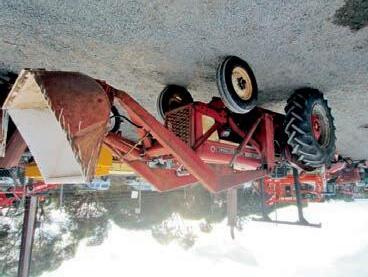



YANMARV4-6WHEELEDLOADER articulated,42horsepower approximately,4cylinderinjectiondiesel,vinno:

Around 19,000 tractors were sold in Australia last year, and the outlook for 2023 is still positive, according to the Tractor & Machinery Association

The 2022 Year has now finished with another record year for tractor sales. The month of December saw a 9 per cent rise on the same month last year to bring the full year position 3 per cent ahead. This equals around 19,000 units sold – representing approximately $2.3 billion in value.
This is the second consecutive year we have seen such strong activity, a period not seen in this country since the 1980’s. It wasn’t just tractors that experienced a big year, with combine harvester sales again up strongly with a total of 1,145 units sold. This represents a rise of 6 per cent on 2021.
The drivers of this activity have been well documented - a strong market for agricultural commodities, as evidenced by this year’s record grain harvest combined with the government’s Temporary Full Expensing program.
However, this has all been underpinned by the strength of the used equipment market. Farmers have been taking advantage of the high used value of their machines and upgrading to newer productive lower emissions tractors.
Looking at the figures, all states except for South Australia recorded rises in December. Queensland continued its recent strong run with an 11 per cent rise to be 14 per cent up for the year, NSW was in line with last year to finish the year down 1 per cent and Victoria recorded a strong month up 18 per cent to finish the year 2 per cent up.
Sales in Western Australia were again strong, up a mammoth 31 per cent ending the year 4.4 per cent ahead. South Australia recorded a 6 per cent decline to be 3 per cent off for the full year. Tasmania enjoyed a small rise of 1.5 per cent for the month but finished the year 10 per cent behind and sales in the NT ended 11 per cent ahead of 2021.
The biggest rise in machine category sales in December was again in the small under 40 hp (30kw) category, which was up 30 per cent to end the year 12 per cent ahead. The 40 to 100hp (30-75kw) range was up 2 per cent in the month to finish 2 per cent ahead and the 100 to 200hp (75-150 kw) category was also up, this time by 6 per cent in December to be 2 per cent behind full year.
Sales in the large 200 hp (150kw) PLUS range “took a breather” in December, down 8 per cent but 3 per cent ahead of 2021.
Challenges in the hay market continue with production down across the nation. This has led to baler sales being down 33 per cent in December and down on last year by the same margin.
Finally, sales of out - front mowers have experienced a “down” year, behind by 21 per cent.
The outlook for 2023 remains positive even with the Temporary Full Expensing Program ending in June. The biggest issue for the industry remains getting machines.
Some brands now have lead times out to 2024 for larger product and remain reluctant to quote prices due to the ongoing volatility in the supply chain.
An example of this can be seen in the recent movements in the shipping market. The price for containerised freight has dropped considerably off the back of the effective shutdown of China, however the price for roll-on, roll-off (RORO) has leapt more than fourfold due to a mix of increased volumes, increased turnaround times at port and competition for ships due to the massive supply of military equipment to Europe. The challenging times continue.
More opportunities are available for Queensland agricultural students after new facilities opened at Toowoomba and Bowen TAFE campuses.
Bowen’s Agricultural Centre of Excellence and the second stage of Toowoomba’s Rural Centre of Excellence were both officially opened in the last month and provide access to new courses and technology.
The Bowen centre is a $3.4 million upgrade to the existing TAFE campus located in the Whitsundays region and forms part of an election commitment made by the state’s government in 2020.
Queensland training and skills development minister Di Farmer describes the agriculture industry is a priority sector with growth potential.
“The new facility here in Bowen will provide specialist training to cater for the emerging technologies in the agriculture industry as we look to the current and future skills needs,” she says.
“In addition to general learning and workshop areas, the Agricultural Centre of Excellence will feature a Smart Centre for data analysation and computerised training technologies.
“There is a virtual reality room providing advanced technology for emerging industry needs and a science lab.
“The advanced technology includes a Farmbot for robotics, nutrition, soil science, biology and coding; and there’s a Growpod for monitoring stable grow-
ing environments and producing horticultural and agricultural products in all climates.”
The centre will allow agriculture programs to be offered at the Bowen campus for the first time and students can study areas including production horticulture, rural operations, laboratory technologies and cyber security.

It will also be connected to the Toowoomba Rural Centre of Excellence, Farmer adds, thanks to “remotely monitored and controlled technology and devices”.

The Toowoomba facility’s second stage has involved a $1.1 million expansion, taking the total centre’s value beyond $8 million.
It includes a specialised laboratory which allows a new course in Laboratory Skills to be offered.
“I know local agribusinesses are excited about their employees being trained in improved analysis of environmental samples of soil and water along with grains, seeds, and animal health,” Farmer says.
“In 2021-22 more than 560 students were trained at the centre and enrolments are expected to continue to grow this year, especially with three of the centre’s courses available under the new Fee Free TAFE agreement with the federal government.
“Since the Rural Centre of Excellence opened in 2019, more than 1,800 students have passed through its doors and many have gone on to secure jobs in the farming and cattle industry, veterinary practices, and horticulture industries.”
The Queensland Agriculture Industry Workforce Plan 2022-2027 identified grazing, horticulture, crops, and aquaculture as the four priority groups for future employment growth, while the state’s government predicts the agriculture industry’s workforce to grow about 10 per cent to 87,000 people between 2020-21 and 2024-25.










New figures indicate world feed production in 2022 dipped slightly by 0.42 per cent to 1.266 billion tonnes, compared to the previous year.
Factors such as disease, weather, and the invasion of Ukraine all hindered European production, which bore the brunt of the impact.
The statistics include data from 142 countries and more than 28,000 feed mills and were released in the 2023 Alltech Agri-Food Outlook
The COVID-19 pandemic also had major impacts on the agri-food sector, contributing to supply chain challenges and accelerating the adoption of technology and environmental sustainability practices.
The top ten feed-producing countries over the past year were China (260.74 million tonnes), United States (240.4 Mt), Brazil (81.95 Mt), India (43.36 Mt), Mexico (40.14 Mt), Russia (34.15 Mt), Spain (31.23 Mt), Vietnam (26.72 Mt), Argentina (25.74 Mt) and Germany (24.4 Mt).
Together, the top ten countries produced 64 per cent of the world’s feed production, and half of the world’s global feed consumption is concentrated in four countries: China, USA, Brazil, and India. Vietnam experienced a great recovery in terms of its feed tonnage in 2022, entering the top ten ahead of Argentina and Germany and crowding out Turkey, which reported reduced feed tonnage. Russia overtook Spain, where there was a significant reduction in feed production.
Feed production increased in several regions, including Latin America by 1.6 per cent, North America by 0.88 per cent and Oceania by 0.32 per cent over the year.
Europe decreased by 4.67 per cent, Africa by 3.86 per cent, and the Asia-Pacific region also dropped 0.51 per cent.
Globally, increases in feed tonnage were reported in the aquaculture, broiler, layer and pet food sectors, while decreases were reported in the beef, dairy and pig sectors.
Although it experienced a narrow reduction in production, China remains the largest feed producing country in the world.
The poultry sector experienced increases in both layer and broiler feed production.
The high costs of raw materials and diseases, particularly Avian Influenza, affected the layer sector in many markets, especially in Asia, Europe and Africa.
On the other hand, growth in the sector was boosted due to bigger challenges in other sectors that led to increased demand for eggs. Overall, layer-sector feed production increased by 0.31 per cent.
While the overall tonnage in the broiler sector increased by 1.27 per cent, there were significant differences from country to country.
Overall, feed production growth in the broiler sector was reported mainly from the Middle East, North America and Latin America.
Pig feed production was down globally in 2022 by almost 3 per cent. African swine fever and high feed prices depressed pig production in many countries.
However, in Vietnam, China, South Africa, Brazil and Mexico, better pork prices and other market conditions led to growth in the sector.
Dairy feed tonnage decreased by 1.32 per cent, mainly due to the high cost of feed combined with low milk prices, which caused farmers to reduce their numbers of cows and rely more on non-commercial feed sources.
Some exceptions included Ireland, where drought caused farmers to rely more on commercial feeds, and New Zealand, where milk prices were higher.
Beef feed production decreased slightly by 0.34 per cent globally. The downward trend continued in Europe, but increases were seen in almost all other regions.
In Australia, the reduction in feed tonnage was a result of plentiful grass and not a reflection of any changes in the demand for beef.
The aquaculture sector experienced a total global feed production growth of 2.7 per cent. The top five aquaculture feed countries are China, Vietnam, India, Norway and Indonesia.
Significant increases were reported in China, Brazil, Ecuador, the Philippines and the US. Aquaculture feed production was one of a few sectors that saw growth in Europe.
Pet feed production had the highest increase among the sectors, with a global average 7.25 per cent rise in production.
This significant increase is largely due to the rise in pet ownership amid the COVID-19 pandemic. North America and Europe continue to be the top pet feed-producing regions.
Regional growth
North America reported an increase of 0.88 per cent (2.27 million tonnes in real terms), and the USA remained the second largest feed-producing country globally, behind China. Growth was reported in the broiler, beef and pet food sectors.
Latin America experienced growth of 1.6 per cent (3.07 million tonnes), and Brazil remained the leader in feed production for the region and ranked third overall globally. Most of the growth was reported by Mexico, Brazil and Chile.

European decrease
Oceania was flat, with a small reduction reported by Australia that was offset by a slight increase reported by New Zealand. Europe saw the largest decrease in feed production of 4.67 per cent (down 12.88 million tonnes) due to issues that include the invasion in Ukraine and the spread of animal diseases, such as African swine fever and avian influenza.
Asia-Pacific remained flat as decreases reported in China, Pakistan, Thailand and Malaysia were offset by increases in Vietnam, the Philippines, Mongolia and South Korea.
The region is home to several of the top 10 feed-producing countries, including China, India and Vietnam.
Africa experienced a decrease of 3.86 per cent in feed tonnage (down 1.72 million tonnes), mainly because of reductions reported in Egypt, Morocco, Kenya and Nigeria.
South Africa, on the other hand, saw an increase of more than 2 per cent, and Namibia also reported higher feed tonnage in 2022.
The Middle East region is up significantly at 24.7 per cent (6.3 million tonnes), as a result of more accurate reporting and efforts by the Saudi Arabian government to increase broiler production as part of its Vision 2030 plan.



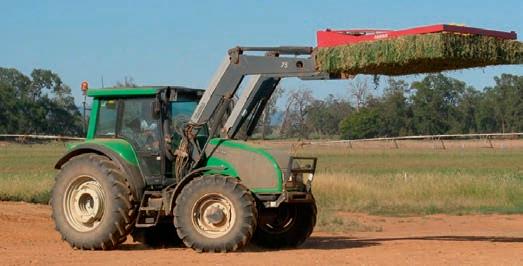

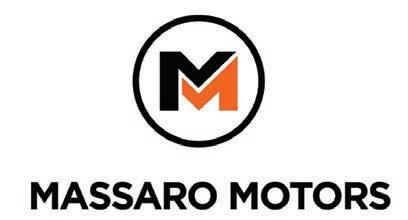

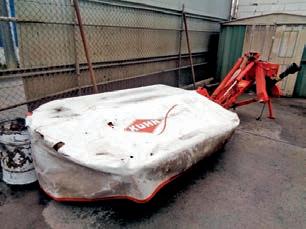







Grill’d has made the Asparagopsis-fed beef available across its whole burger range
BEEF
Asparagopsis-fed cattle will be on the menu at a popular Australian burger chain in a push to reduce methane emissions
Burger restaurant chain Grill’d has developed a new product – the Gamechanger - made from black Angus cattle which have been fed methane-reducing Asparagopsis seaweed.

The cattle involved produce up to two-thirds fewer methane emissions than regular cattle, while Grill’d says ongoing live trials on its farm are aiming to achieve an eventual 90 per cent methane reduction.
Grill’d’s project was developed with Sea Forest, which is cultivating the native and natural Tasmanian seaweed Asparagopsis on a commercial scale.
Sea Forest’s chief scientific officer Rocky De Nys says the use of Asparagopsis-fed cattle will allow consumers to choose a product which makes a difference to the environment.
"[Asparagopsis is] very special as it has a unique set of properties that carry across to cattle, and when consumed, it reduces methane in animals," he says.
"It's great to see a direct-to-consumer product that Sea Forest is contributing to where consumers can make a real difference themselves - enjoying lowcarbon products that are better for the planet."
Grill’d worked with University of New England experts, who used GreenFeeder data to measure emissions from the first Asparagopsis-fed herd. Methane emissions were reduced by 67 per cent in the cattle used for the new burgers.
The federal government committed last year to a national target of reducing methane emissions by 30 per cent by 2030.
The Gamechanger burger, which Grill’d says is a world first, has initially been rolled out across 61 of the company’s stores.
It costs $1 more than the equivalent burger without methane-reducing beef and according to the company tastes no different to the existing product.
"We're really excited to see Gamechanger beef come to life," Grill’d founder Simon Crowe says.
"This is the future of beef - and we won't stop at 61 restaurants. But for now, and for only an extra buck, guests can help the planet by choosing a low methane product, simply by upgrading their favourite beef burger."
Grill’d plans to increase the volume of methanereducing beef available so the Gamechanger can be available at all its stores and become a permanent addition to the menu.
An expansion of seaweed farming could have environmental benefits and cater for a rising global population, researchers believe
Queensland researchers have explored the potential of seaweed farming as a means of meeting rising global demand for food and materials
Expanding global seaweed farming could provide an environmentally sustainable solution for the world’s growing food and materials needs.
This is the conclusion of a University of Queensland-led study which explored seaweed farming’s potential as an alternative to land-based agricultural expansion.
“Seaweed has great commercial and environmental potential as a nutritious food and a building block for commercial products including animal feed, plastics, fibres, diesel and ethanol,” UQ School of Earth and Environmental Science PhD candidate Scott Spillias says.
“Our study found that expanding seaweed farming could help reduce demand for terrestrial crops and reduce global agricultural greenhouse gas emissions by up to 2.6 billion tonnes of CO2-equivalent per year.”

The research mapped the potential of farming more of the 34 “commercially important seaweed species” using the Global Biosphere Management Model, including many native Australian species which Spillias says have not previously been studied from a commercial production perspective.
The research estimated the environmental benefits of a range of scenarios based on land use changes, greenhouse gas emissions, water and fertiliser use, and projected changes in human and other species populations by 2050.
Spillias says global exclusive economic zones (EEZs), which are areas of the sea where a sovereign state has special exploration and usage rights over marine resources, have considerable potential for seaweed farming and could create benefits.
“In one scenario where we substituted 10 per cent of human diets globally with seaweed products, the development of 110 million hectares of land for farming could be prevented,” he says.
“We also identified millions of available hectares of ocean within global exclusive economic zones where farming could be developed.
“The largest share of suitable ocean was in the Indonesian EEZ, where up to 114 million hectares is estimated to be suitable for seaweed farming.
“The Australian EEZ also shows great potential and species diversity, with at least 22 commercially viable species and an estimated 75 million hectares of ocean being suitable.”
One of the study collaborators, UQ Professor Eve McDonald-Madden, says any development would need to be done carefully to avoid transferring problems from land to ocean.
“Our study points out what could be done to address some of the mounting problems of global sustainability facing us, but it can’t be implemented without exercising extreme caution,” she says.


UWA canola technicians assess blackleg disease resistance during a Victorian field trial
Meeting global demand for grains could be aided by a new crop breeding method, which has shown positive results
A decade of research has resulted in a new canola crop breeding method achieving high rates of genetic gains.
Plant breeding researchers from University of Western Australia (UWA) and animal breeding researchers from University of New England (UNE) in New South Wales worked together on the development, which is hoped will help meet the rising global demand for grains.

Since 2016, the new method has created a genetic gain in grain yield of up to 4.3 per cent in its global spring canola breeding program each year, UWA project leader Professor Wallace Cowling says.
In addition to grain yield, the researchers also increased canola seed oil and protein while rapidly improving resistance to blackleg (Phoma) disease.
"We are excited that we achieved very high rates of genetic gain in grain yield, but we also show genetic gains are stable across a diverse range of environments,” Cowling says.
Researchers used the latest animal breeding technology based on optimal contributions selection to make the changes, combining rapid cycles of genetic selection in canola.
Partners in Europe and Canada have sent their latest canola varieties for intercrossing since 2012, Cowling says, and researchers have crossed the best offspring and field-tested the progeny in Australia and Canada every two years.
UNE Emeritus Professor Brian Kinghorn says this project has been an extension of previous research on optimal contributions selection in animals.
“We developed MateSel software to help animal, tree and crop breeders to optimise the multiple competing objectives of their breeding programs,” he says.
“MateSel in this project was used to optimise decisions to achieve world-leading rates of genetic gain in grain yield and other economic traits in Australia and Canada.”
The MateSel software may have a continued role to play, with one future possibility discussed in the paper being crop breeding for different global markets and environments in a single program using ‘multiple end-uses’ in MateSel.
“This is how technological transformation occurs –through the sharing of ideas and technology among researchers at the forefront of their careers in different fields,” Cowling says.
Table grapes are not typically associated with tropical northern Australia, but a university-led research project aims to change that.
University of Western Australia researchers will work alongside grower Fruitico in the four-year project, which “aims to develop novel practices” to enhance the commercial cropping of table grapes in northern Australia.

The project, worth more than $2.5 million, is funded by the federal government’s Cooperative Research Centre for Developing Northern Australia (CRCNA) and WA’s Department of Primary Industries and Regional Development (DPIRD).
Fruitico has established vineyards with land for expansion in Broome in WA’s north, which is where the project will initially focus.
It is then planned to develop research further in Carnarvon, located about 900km north of Perth on WA’s Midwest coast.
“These two locations will act as case study hubs, from where we will develop and implement knowledge-based management programs for table grapes that enable increased yield in Northern Australia,” project lead Michael Considine says.

“This will ensure new management practices are embedded in industry in real time, accelerating the outcomes and thus rapid adoption by the industry.”
The research will develop management practices tailored to the climate with the aim of reducing production risk and increasing investment.
Considine says the expansion of table grape production in northern Australia, which is currently considered a “high risk” area, could replace some imports and bring wider benefits.
“If table grape production could be expanded in northern Australia, the opportunity for import replacements alone is $85 million per annum,” he says “Additionally, it will increase jobs and social benefits, including Aboriginal cooperatives.
“The greatest challenge to growing table grapes in subtropical or tropical climates of northern Australia is the substantially different seasonal temperature and day length rhythms.
“This disrupts reserve storage following harvest, undermining yield and sustainability,” he says.
Table grape production could be set to increase






States are carefully opening their borders to NSW bees again, after progress was made in eliminating Varroa mite
Australian states and territories reached a unanimous agreement that New South Wales has made its general emergency (blue) zone free of the dangerous Varroa mite.
The state had responded after Varroa mite was first detected in sentinel hives in mid-2022, being described as the most serious threat to honey bees globally and one which could cost the nation’s honey industry $70 million per year.

The declaration means South Australia, Victoria and Queensland will reopen their borders and allow movement of bees and hives for pollination.
“This is a significant step in the fight to eradicate the mite, and for our beekeepers and pollination-reliant industries that have done it tough over the past seven months,” NSW agriculture minister Dugald Saunders says.
“But this is not the time for complacency; now more than ever, we need beekeepers to make sure they continue to do the right thing and maintain their alcohol wash surveillance so we continue to move in the right direction.”
These mandatory requirements include performing alcohol washes at least every 16 weeks and reporting the results, plus filling out hive movement declarations.
There are also no changes to NSW’s eradication (red) or surveillance (purple) zones, where movement is still prohibited.
The blue zone covers much of the state excluding hotspots around Newcastle and the Central Coast, plus other areas around Coffs Harbour and Narrabri. Consultative Committee on Emergency Plant Pests (CCEPP) endorsed a paper where NSW provided data supporting the changes, and Australian Honey Bee Industry Council CEO Danny Le Feuvre says this is a major milestone.
“While the industry will continue to be impacted by the Varroa mite’s incursion, endorsement of this paper is a critical step forward in achieving business continuity, as best we can, for the industry,” he says.
“Endorsement of this paper demonstrates the confidence all the affected parties have in the response. It gives us great confidence that eradication is achievable in the current situation.”
Queensland agricultural industry development and fisheries minister Mark Furner says the state will undertake a staged approach to reintroducing interstate bees, with priority given to Queenslandregistered beekeepers located in the NSW blue zone.
“We know how important bees are for our environment and economy, and this decision will allow our beekeepers to manage their operations safely,” he says.
“A dedicated case manager will manage this process, and in coming weeks owners of nonQueensland registered hives will also be able to apply for a permit to enter.
“Movement of European honey bees into Tasmania, Western Australia, and the Northern Territory remains prohibited due to pests other than varroa mite.”
NSW’s response since Varroa mite was detected has included surveillance on around 32,000 hives, with beekeepers completing alcohol washes on more than 85,000 hives.
An Australian company aiming to reduce agricultural methane emissions has received a high-profile funding boost
Perth-based climate technology company Rumin8 has secured funding from a Bill Gates-founded group, along with investment from mining magnate Andrew Forrest.
It formed part of about US$12 million invested during Phase 2 of Rumin8’s seed funding round, which aims to commercialise the company’s solutions to agricultural methane emissions.
This also means Rumin8 has become the first Australian-based company in Breakthrough Energy Ventures’ (BEV) portfolio, a group started by Microsoft founder Bill Gates and backed by world business leaders that invests in companies aiming to reduce global greenhouse gas emissions.
“The demand for sustainable protein has never been more apparent, which is why BEV is keenly interested in reducing methane emissions from beef and dairy,” BEV investment committee co-leader Carmichael Roberts says.
“Rumin8 offers a low cost, scalable toolbox that has already proven to be effective in reducing emissions.
“Our team will support Rumin8 in working closely with farmers to expand the reach of this solution globally.”
Rumin8’s patented technology “stabilises and replicates nature’s anti-methanogenic compound, turning it into scalable and highly effective supplements”.
The company says it is “currently perfecting several formulations and delivery modalities to suit diverse livestock production systems – including rangeland grazing cattle – to provide low-effort and affordable solutions to producers”.
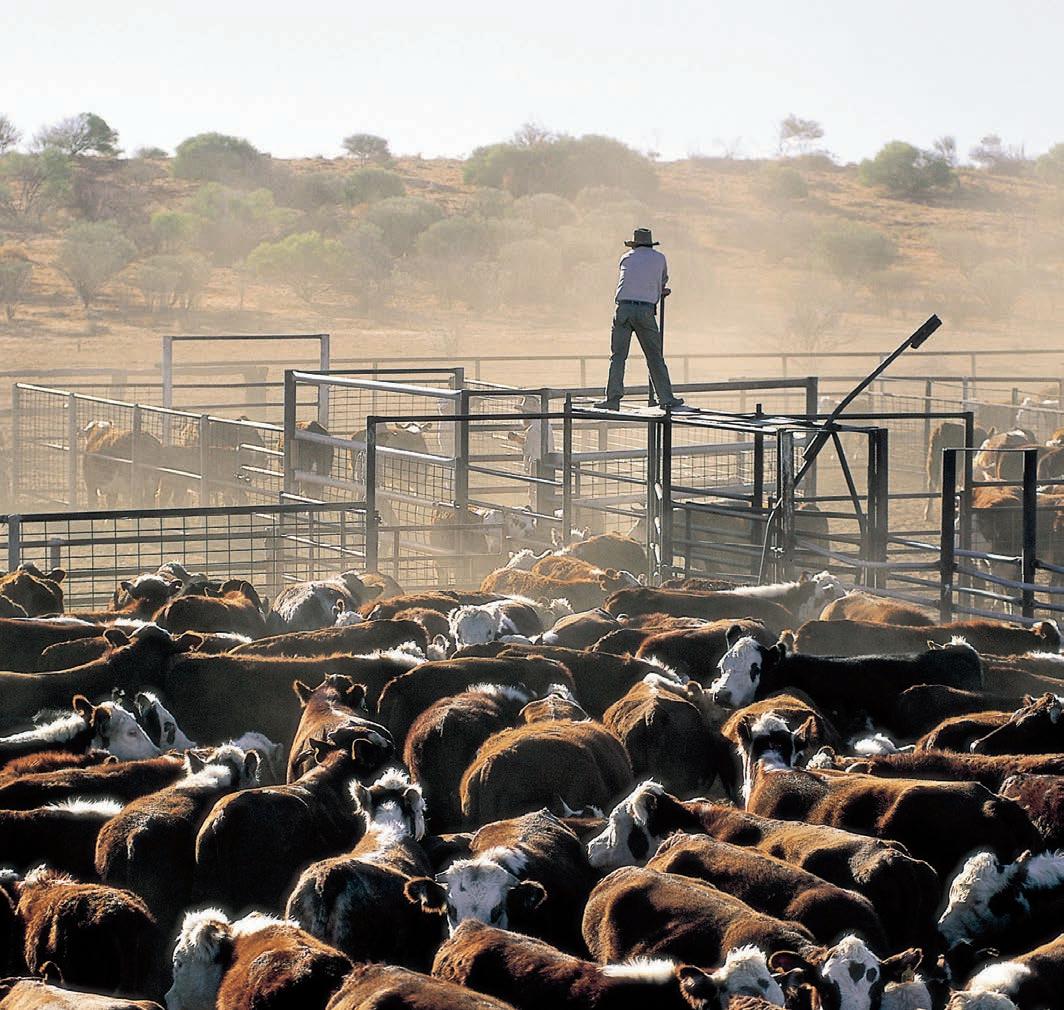
Rumin8 has set a goal of decarbonising 100
million cattle by 2030, which the company says equates to 200 million tonnes of methane per year – or two tonnes annually per cow.
During Phase 2 of the seed funding round, investment was received from Andrew and Nicola Forrest’s agri-food business Harvest Road Group.
Having already been involved, wo other international climate funds - Australian-based Aware Super Sentient WA Growth Fund and US-based Prelude Ventures – both upped their investment.
The company has now raised about A$25 million across both seed funding rounds, with money from the latest investment to be spent on commercial trails in Australia, New Zealand, Brazil and USA, along with product brand development and pilot manufacturing plant development.
“We have been very pleased with the reception we have received from climate impact funds around the world,” Rumin8 managing director David Messina says.
“There is a genuine desire to fund solutions to enteric methane emissions from livestock and fortunately for Rumin8, they can see the benefits of our technology.
“Our laboratory results continue to yield excellent results, our animal trials are reflecting the laboratory results, and the financial modelling we are undertaking is indicating we will be able to supply our products at a commercial price point.
“Prior to the Phase 2 seed funding round, we were progressing a number of key work streams sequentially.
“Now we have the resources to progress them in parallel, speeding up the road to commercialisation.”



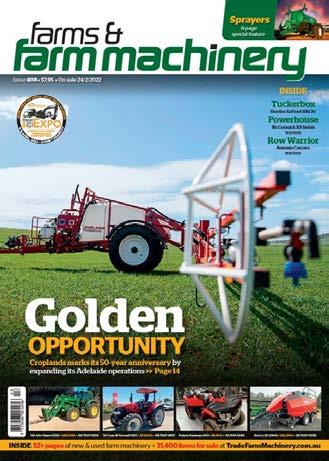
*Kubota V1405, 30hp, 4 cylinder..........................................$2,750
*Isuzu 3AF1, 22hp, 3 cylinder ..............................................$2,057
*Isuzu 3AE1, 30hp, 3 cylinder ..............................................$2,376
*Isuzu 3AD1, 34hp, 3 cylinder ..............................................$2,557
*Yanmar 2HS66, 11hp, 2 cylinder ........................................$1,155
*Yanmar 2HS80, 19hp, 2 cylinder ........................................$1,765
*Yanmar 3TNA86, 15hp, 3 cylinder......................................$1,770

*Yanmar 3TNA68, 16hp, 3 cylinder......................................$1,870
*Yanmar 3TNA72, 20hp, 3 cylinder......................................$2,035

*Yanmar 3TNA75, 23hp, 3 cylinder......................................$2,075
*Yanmar 3TNA82, 25hp, 3 cylinder......................................$2,629
*Mitsubishi CA700, 15hp ......................................................$2,075
*Mitsubishi K3D, 21hp,
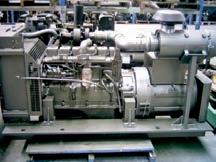


SOUTHERN CROSS4X3 WithS/HKubota Z620,13hp2 cylinderdiesel,20 litre/secondat20 metrehead Economical transferpump $4,970incGST. Kubota. DPLIn27528. $4,970
SOUTHERNCROSS 80X50-315 Isuzu3AE1,30hpdiesel, 15litrespersecondat80 metrehead. AW54939-FM077-112-02. DPLIn27518.

$7,850+GST
SOUTHERN CROSS 80X50X250 NissanTD27, 48hpdiesel,20 litrespersecond at80metrehead Engineshutdown included.S23. DPLIn27505. $8,270
New.3cylinder, 40hpIsuzudiesel. 27480. DPLIn27480. $7,990+GST PONTOONPUMP ELECTRIC Pontoonwith electricpump. xzdef19652. TA206427. $14,910
VARIOUS ELECTRIC PUMPSSINGLE+ 3PHASE elecpu9582. TA206433. $4,2604260



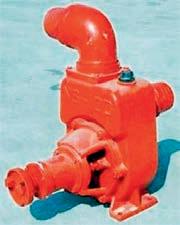

SOUTHERN CROSS 100X65-315 PUMPSET withNissanQD32 (65hp),skidfuel tank,oil-temp, hi/lotimer watchdogand forkliftroof. Vel67912. TA11060. $13,750
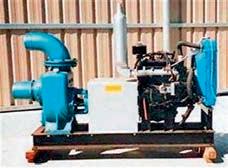
PTO GENERATOR 50KVA-Three Phase-3point linkagewithheavy dutyjackstands. VEL4156. TA10931.
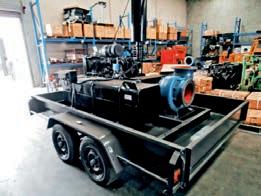







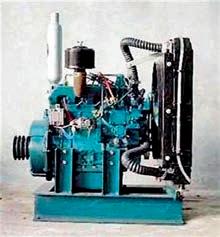


$8,710
MITSUBISHI DIESEL GENERATORSET 8KVA 15hp,S/H3 cylinder Mitsubishielectric startEngine watchdog,fuel tank.S16. DPLIn27548.
$5,850+GST
12"300IS TRAILER MOUNTEDPUMP SET newpumpdirect drivecoupledto secondhand6cyl Nissandieselwith newtandemtrailer withVin.S33. TA750753.
$18,810+GST
CUMMINS66 KVA 6cylinderdiesel generator.S19. DPLIn27568. $13,387
PISTONPUMP XF404 WithDEK4.7hp diesel,4,000litres perhour60metre head.S24. DPLIn27531.
$3,300

WE BUILD DIESEL HYDRAULIC PUMP SETS TO ORDER ASK ABOUT OUR OIL AND TEMPERATURE AND TIMER WATCHDOGS
ROVATTICHOPPER
Openpumpimpeller,chopperdevice,stainlesssteelplates,heavydutyjockeyjacks, handprimeroneffluentpumps,ptoshaft,heavydutyframe. STVEL54441. TA10770.
$6,599
AIRCLEANERS HEAVYDUTY From10hptoto 200hp. VEL14307. TA10926. Pricesstartingfrom $130
INDUSTRIAL RADIATORS 20hp$275 40hp$360 60hp$585 120hp$820 S11. DPLIn27501. From$275

PERKINSGENERATORS
6,8,10,13,15,20and30KVA generators,singleand3-phase, poweredbywater-cooled Perkinsheavydutydiesel engines,keyorremotestart, fueltankbase,fullengine protection,500hoursservice intervalsIdealbackuporprime powerCallforyourspecial price!!!.AW54939-ST190912. DPLIn27583. POA
SECONDHAND
TRUCKMOUNTED12"TRANSFERPUMPSETTRANSFERPUMP Truckmounted12"Transferpumpset. Askaboutotherspecialisedapplications. S13. TA11062.

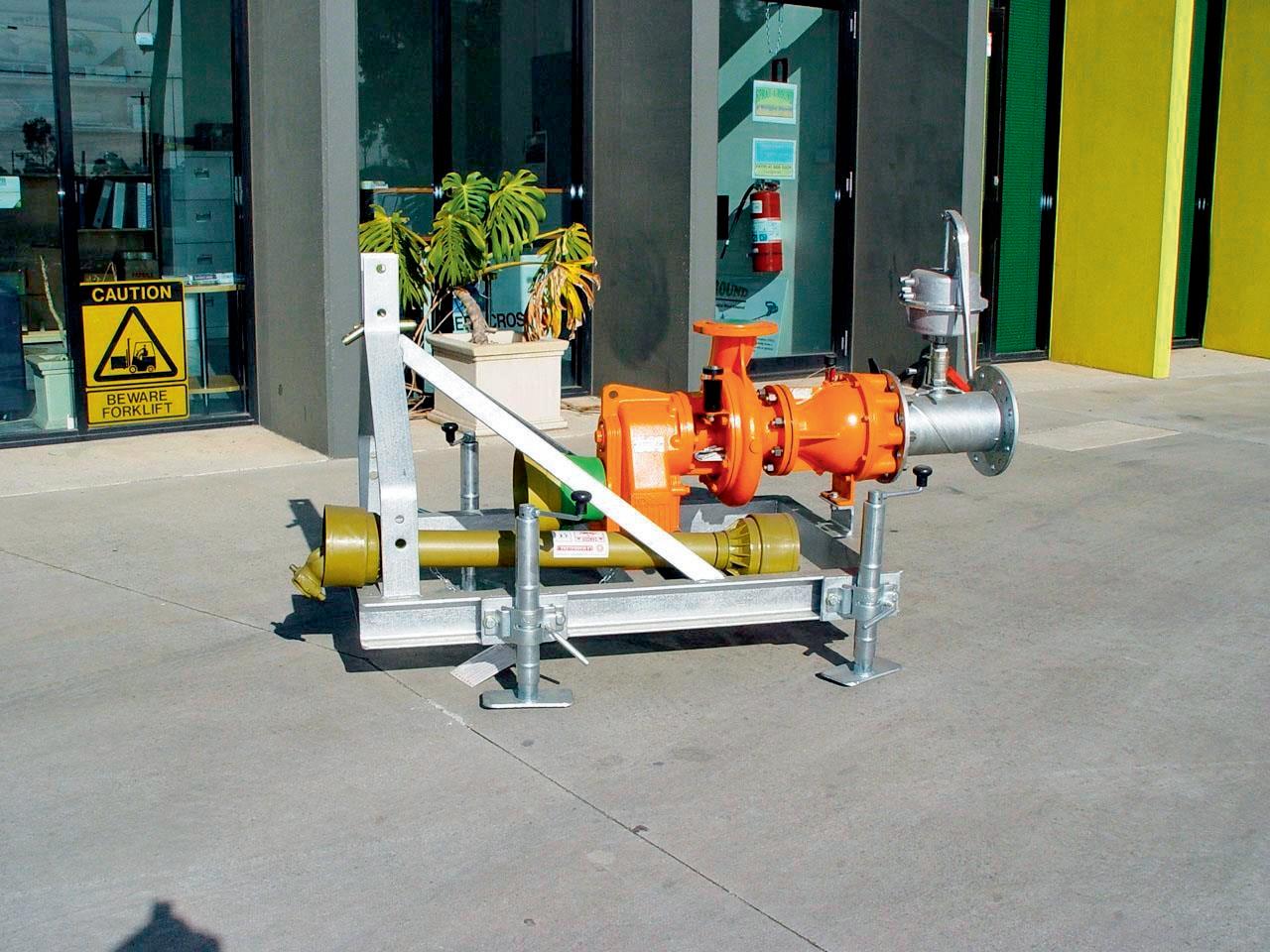
TACHOMETERSFORDIESELENGINES
Tinytach for dieselenginesgivesadigitalRPMreading regardlessofthenumberofcylinders.Atransducertakesa pulsereadingfromtheinjectorlineSimplyboltthe transducertotheinjectorline,supplya12-24VDCsupply andawayyougo!Itevenhasabuilt-inhourmeter,service functionandmaxrpmrange.S22. DPLIn27532.
$264
JAPANESEDIESELS
Partsavailable for small Japanesediesels. AW54939-FM077-060-07. DPLIn27496. POA
ENGINEWATCHDOGTM6
ENGINESHUTDOWNSYSTEM &TIMER
TM6Oil/TempWatchdogwith wiringdiagram$240+GST
TMTOil/TempWatchdogwith shutdowntimer&wiring diagram$460+GST
Solenoidsandrackpullersare extra.S37. TA750757. $240+GST/$460+GST


YANMARDIESEL6XSELF PRIMINGPUMP With25hpYanmardiesel. S12. DPLIn27519. $6,310+GST
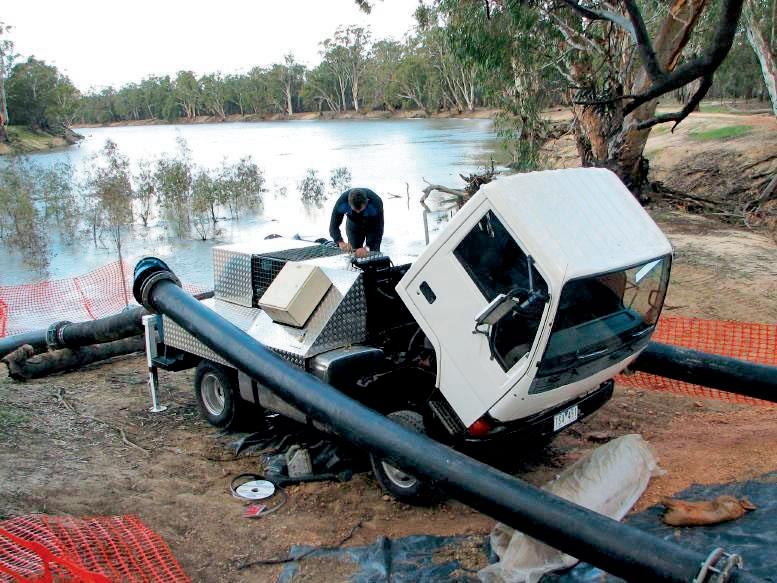

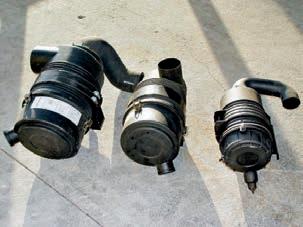
BLADES
To fit smallJapanese tractors. From$8.80eachincGST. AW54939-FM077-060-08. DPLIn27497.


$9
PLUTTOPUMPPRIMER
Turnyourcentrifugal pumpintoaself-priming pumpWiththeneweasy toinstallPluttoexhaust primerthrowawayyour bucketandhandpriming pumpThePluttoexhaust primerautomatically primesupyourpump whenyousarttheengine Primingkit.S18. DPLIn27578.
$490
IRRIGATIONHOSEHOSE
Suctionanddeliveryhose Call for yourspecialprice!. AW54939-FM077-043-01. DPLIn27516. POA

CASEIHPUMA165 2017,short wheelbase,3900hours,ADblue, hydraulicsteering,PRO700,NAVII and372receiver,tintedwindows, rearfenderextensions,LEDlighting package,dualrotatingbeacon.
CASEIH6088 Header,SK#83526,YAG003499,baseunitonly with5,539enginehrs,4,187 rot hrs.800/65R32fronttyres& 540/65R30steertyres. Pro 600display,UHF,AM/FMradio.


CASEIH1015Canolafront withsingleaxletrailer,50mmpull, beltssoundingoodorder.


CASEIHMAXXUM125 2011,tractorwithVisionLift50loader&4in1bucket, 4020hrs,front&cabsuspension,UHF,CDradio,EZsteer500&CFX750 screen,linkage. TA1165041.
BOGBALLEM3PLUSlinkage 2003,3plspreader,4000lt homemadeextension,hoppercover,calibratoriconcontroller, mudguards,lights540pto,9TWvanes(upto36Mureaspread) Temora. TA1137766. $23,100



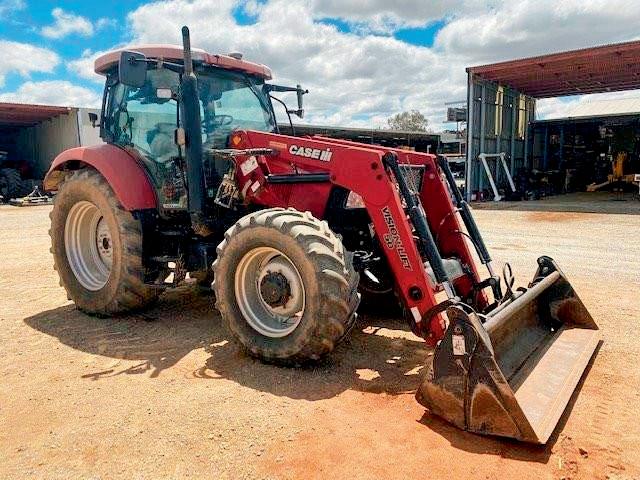



FIAT550Fiat550 1978,openframetractor.55HP.8speed syncro.Orange&blueSeries(Mfg.Italy)VIN:517888,E/N 854*102,18.4-28Rears(40%)&750.16front(40%)7025hours, Cat.II3PL&1xremotecoupling,ground&eng.DrivePTO, starts&runswell,goodconditionforage,seatOK,newbattery fitted. TA1137800.
MACDONR116 2017,mowerconditionerPTOPulltypeRubber rollerstidynewblades.
JOHNDEERE6600 1996,exmorr#83496,L06600V173844,1996 yr, FWA, approx.6900hrs,110HP,ACcab3800challengeloader,grillguard,GP bucket,balespike,joystickcontrol2function,electronic3PL,2rearremotes, 540/540E/1000PTO,4x624speedF/Rshifttransmission. TA1164952. $49,500
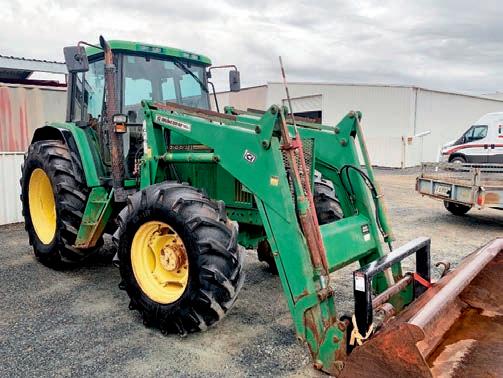
GASON1850Bar&Bin 1850series2bintowbetweenaircart(2,000ltseach bin),grounddrivenwithGasonsmallseedbox,18.4-26tyres@90%,single fan,LEDworklights,camerasineachbin.30ft(9m)barwith45tynes540 poundbrakeout,8inchspacings,newliftup/downrams,PhillipsHarrows. TA1164953. $88,000


CASEIHMAGNUM215 2008,2008CASEIH: Magnum,FWA/4WD,Cab-Tractoronly,Hours:9334, HP215,VIN/Serial#:Z7R05604,FrontTyreSize: 480/70R34FrontTyre%:30,RearTyreSize: 480/80R50RearTyre%:20.E26JZ. TA1123532. $79,000


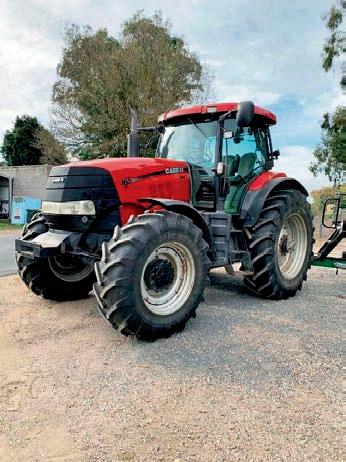
CASEIHPUMA165 2010,2010CASEIH:Puma165 CVTCabTractor,6055Hours,hp165+Boost, 16.9R30FrontTyres80%,20.8R42RearTyres80%. WorkshopCheckedandreadyforwork.ZABH50502. TA1130839.
CASEIHMAXXUM125ULTMULTICONTROLLER 2009,2009CASEIH:MAXXUM125ULT MULTICONTROLLER,FWA/4WD,Hours:8000,HP125, goodtyres,beenthroughworkshop.Located
CASEIHPUMA165Classic 2019,2019CASEIH: Puma165ClassicHours:3790480/70-30Front60% 620/70-42Rear40%.CabSuspension,Instructor Seat,LEDLightingpackandnewdesignroof. 540/1000RearPTO,3xRearRemotes.Zjbh50781. TA1160628.
MCHALEV660 2018,2018McHale:V660,Round Baler,46000rollsknivessoldastraded,justoutof paddockworking."Inoculanttanknotavailable". LocatedTrafalgarcontactRon0412544077.805557. TA1161382.

CASEIHPUMA125 2013,CASEIH:PUMA125AFS, Hours:5275,HP125,VIN/Serial#:ZCBL57986,Front TyreSize:380/85rR28FrontTyre%:70,RearTyre Size:460/85R38RearTyre%:70.ZCBL57986. TA1151504. $79,000

CASEIHPUMA165Classic 2019,classichours: 3790480/70-30front60%620/70-42rear40%.Cab suspension,iInstructorseat,LEDlightingpackand newdesignroof.540/1000RearPTO.Zjbh50781.
MASSEYFERGUSON390 1993,1992MASSEY FERGUSON3904WDtractor-7941HRS.4.1L PERKINSENGINE,79HP,12speedtransmission. 18.4R30reartyres,12.4R24frontTtyres.CallWill Ellis:0475004436.A33054. TA1155716.
NEWHOLLANDTD60D 2011,#200607Hours:2041, hp60,VIN/Serial#:HFD038632,FrontTyreSize:11.2 R-24,RearTyreSize:16.9R-30Rear.HFD038632. TA1150880.
KUHNGMD310FFRONTMOWER 2018,2018Kuhn GMD310F,3meter,mower"DEMOMODEL" LocatedTrafalgar0356331588.A0955. TA1005568. $24,000


GENDORET1400SF 2003,2003GenderedT1400SF, BaleWagon/Feedout,VIN/Serial#:2140..2140.
KUHNVB2190 Kuhn:VB2190,RoundBaler, netwrap,22000bales.LocatedTasmaniacallTas Mundy0400077953.VGRL001969. TA1077060. $28,000

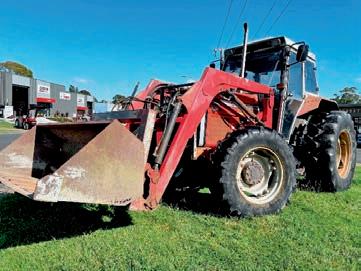


LELYV160 Lely:V160,RoundBaler,Netwrap LocatedTasmaniacallSimonMaloney0419348023. 175800272. TA1077054. $20,000




VICONRV2160 2008,2008Vicon:RV2160,Round Baler/WrapperbalePackBales:55000, LocatedTrafalgarContactAndrewNoonan0412 610903.VGRW000382. TA1115035. $38,900
NEWHOLLAND650 Newholland:650baler,Round Baler,netwrap.LocatedTasmaniaCallSimon Maloney0419348023.910943. TA1077051. $12,000
VICONRV1601 Vicon:RV1601MK2,Round Baler/WrapperCombinationpaddockready.Located Trafalagar,CallAndrewNoonan0412610903. RW0000033. TA1062292. $55,000




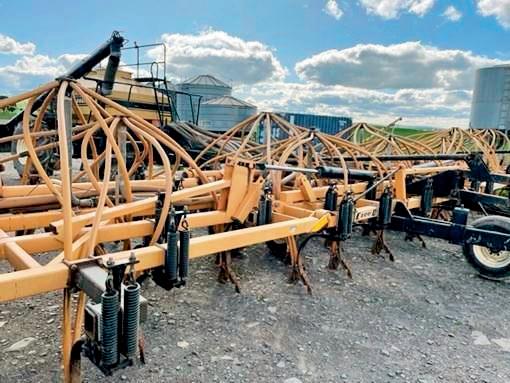



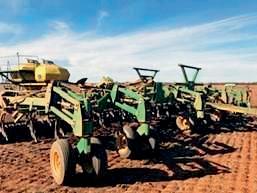











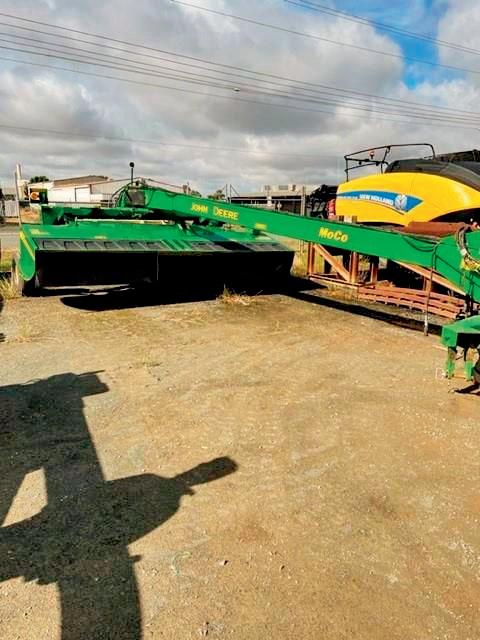


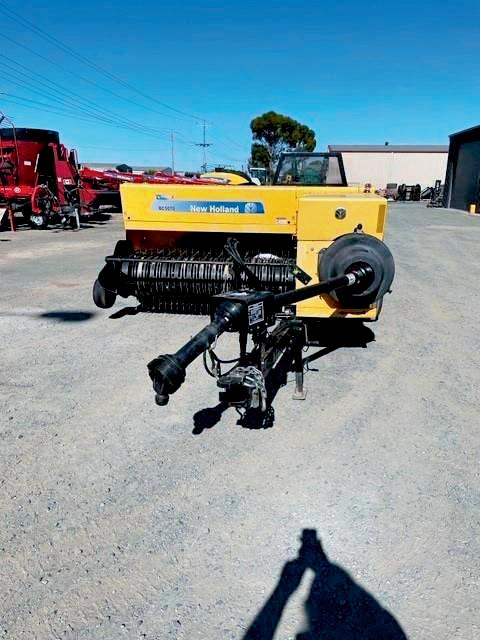
PRICES ARE INC GST, CONDITIONS APPLY


FARM MACHINERY FOR ALL SEASONS




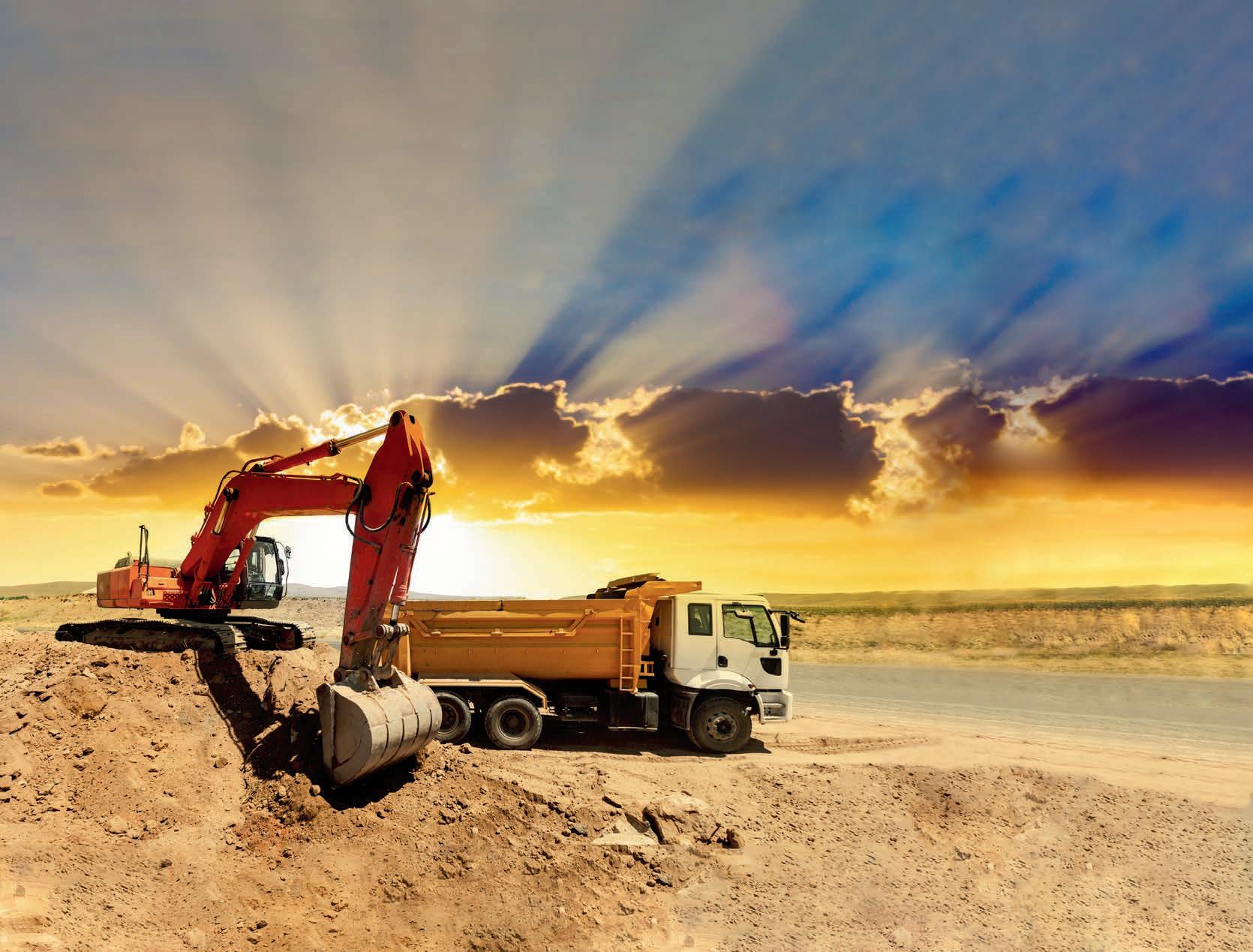
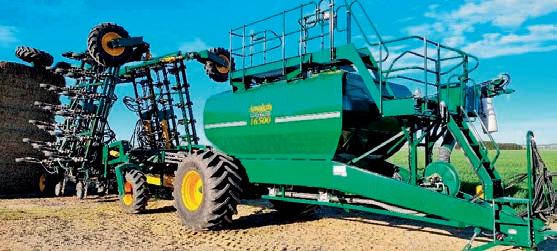



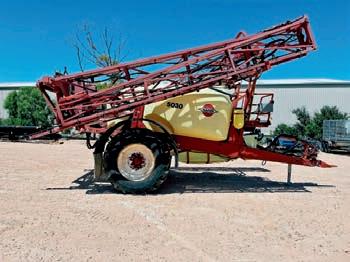
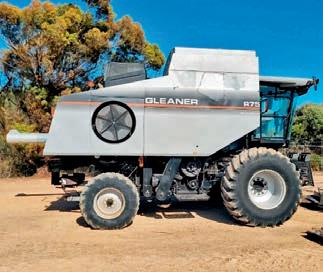
MASSEYFERGUSON 2009,8'9"x3'9"x2'9" BaleSize








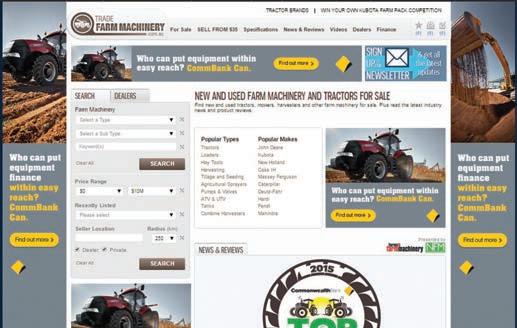







ALLFARMSHEARER Cultivatorbar, model033,3 row, 67tynes, strippedrepainted.On6.50x16 tyres,alsowithoptional3rear wheelsupport.Doublespring tynes,.. WA. DIY1163638. 0428 305 750. $7,500incGST




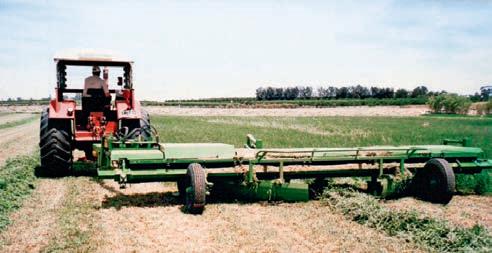
GASON1850 RT2 Scaritill& 1850RT2.NT8000extendedto 10m.32tyneson12inchspacing. Singleshoot,nearnewpointsand seedboots.Smallseedsairkit. Newairkitinstalledonlyone seasonold.1850RT2grounddrive cart,convertedtovariablerate withJohnDeererate controller. Two bin5000Lcapacity,withsmall seedsbin.LEDworklights.,1150. NSW. DIY1165123. 0437 815 724. $99,000

MARSHALL810TMSPREADER Used810TMtruckmountMarshall spreader,GX690electricstart Hondamotor,rolltarp,bincapacity over10cubicmtrs, Serial No 5942625. NSW. DIY1163255. 0409 265 853. $15,000





KUBOTAZD1211-60 2019,ZD1211 asnew200hoursalwaysserviced, K3444 51003.NSW. DIY1162703. 0418 698 650. $24,500


































3 row















043888234.



DIY1164655.















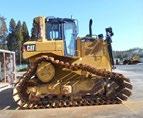




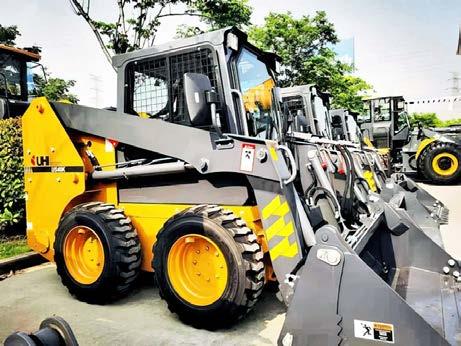








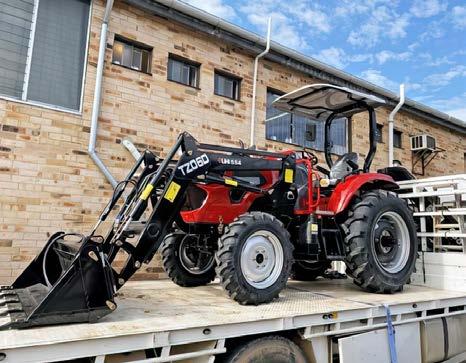

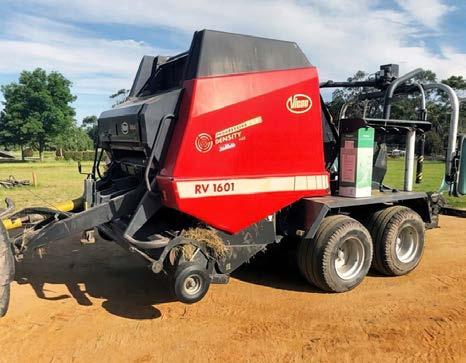
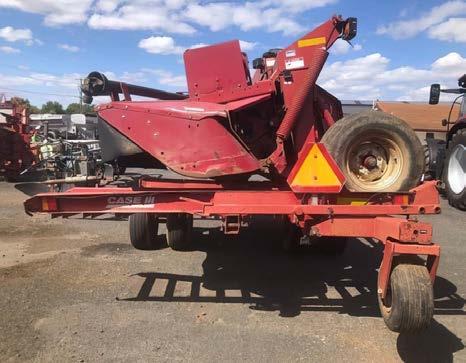


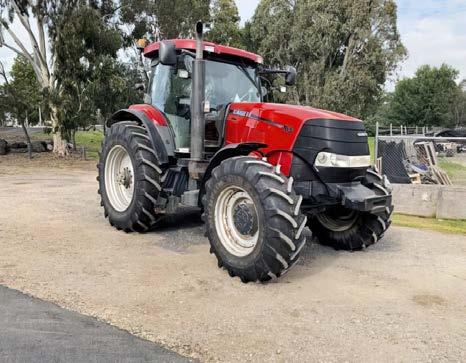


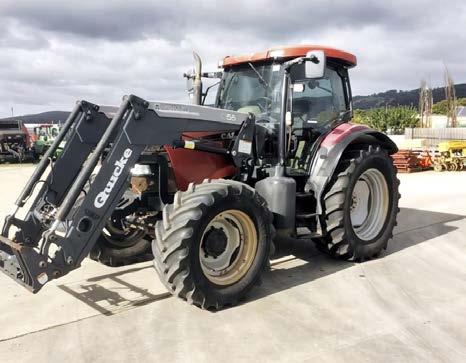


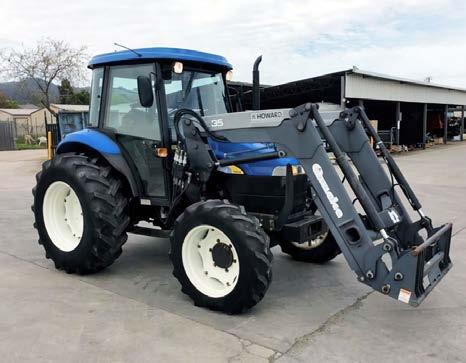







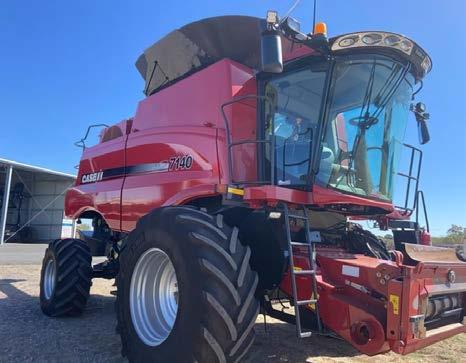








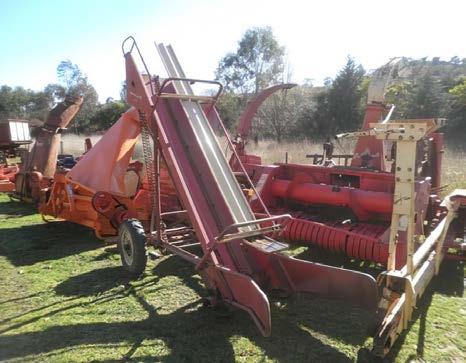














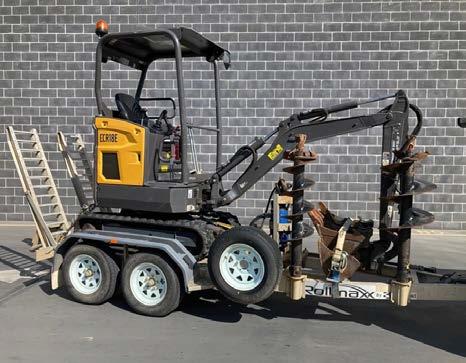



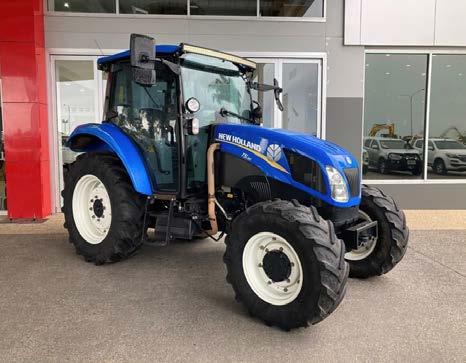








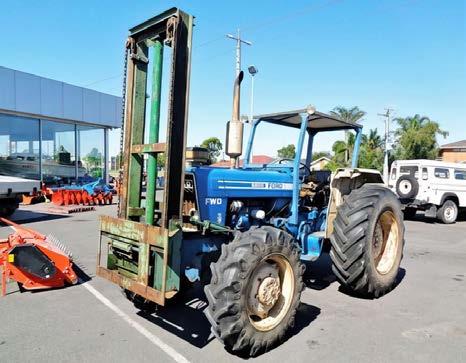






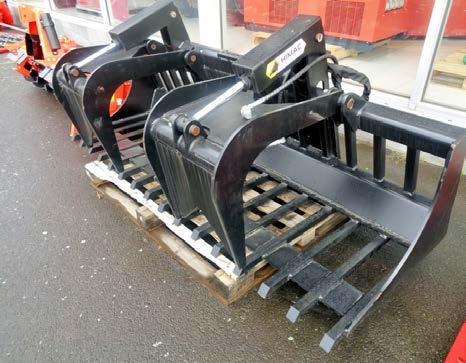



















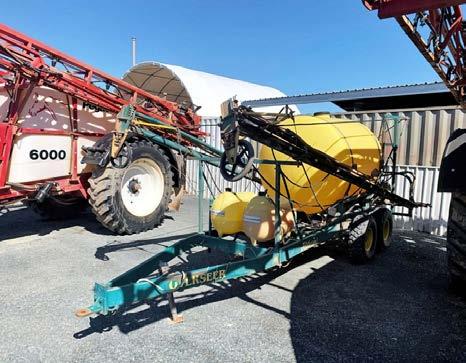








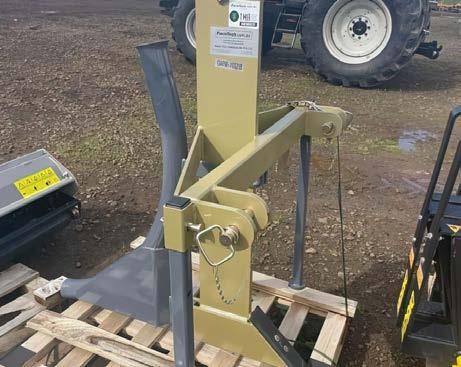

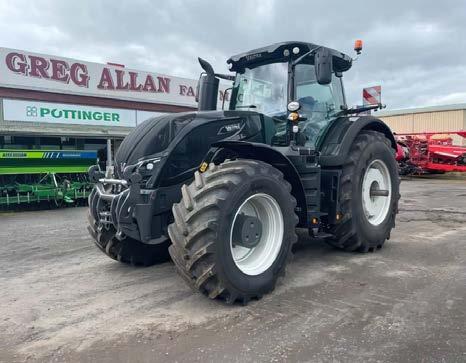
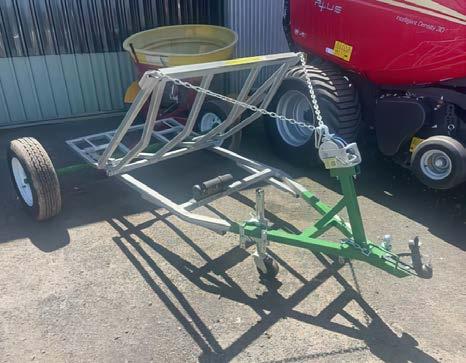
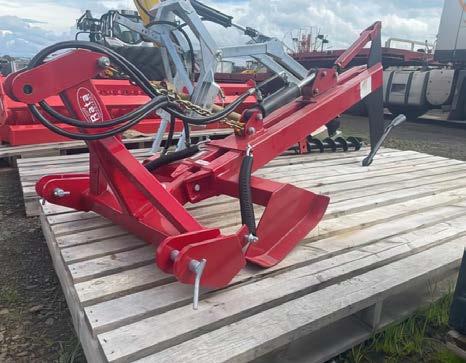




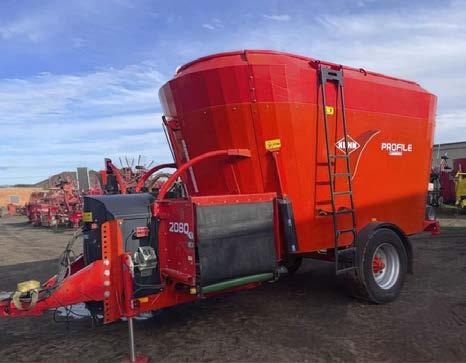

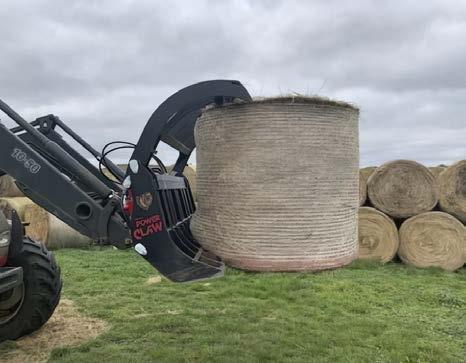





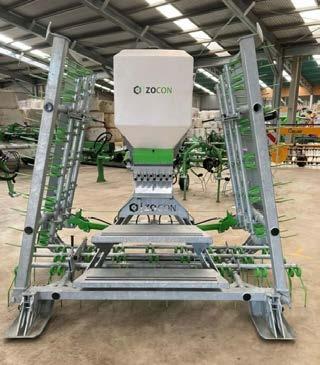



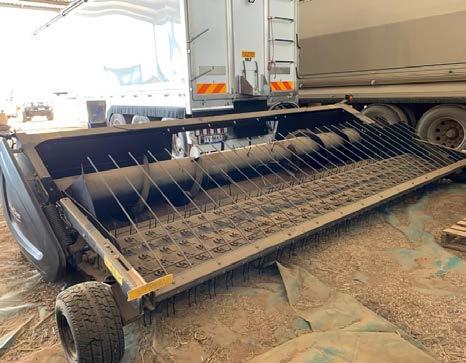


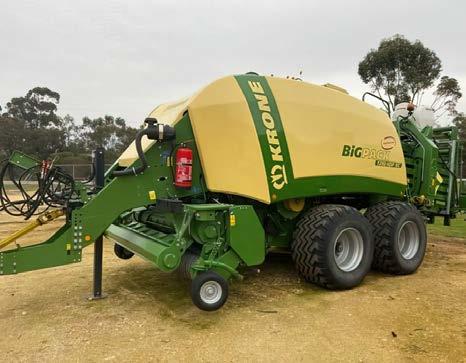



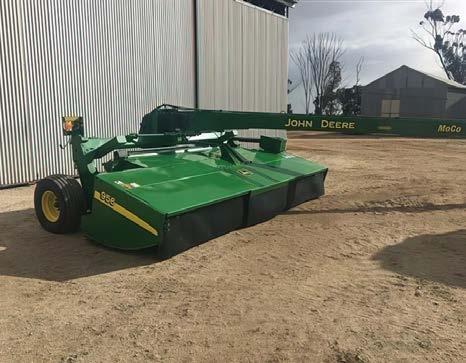

















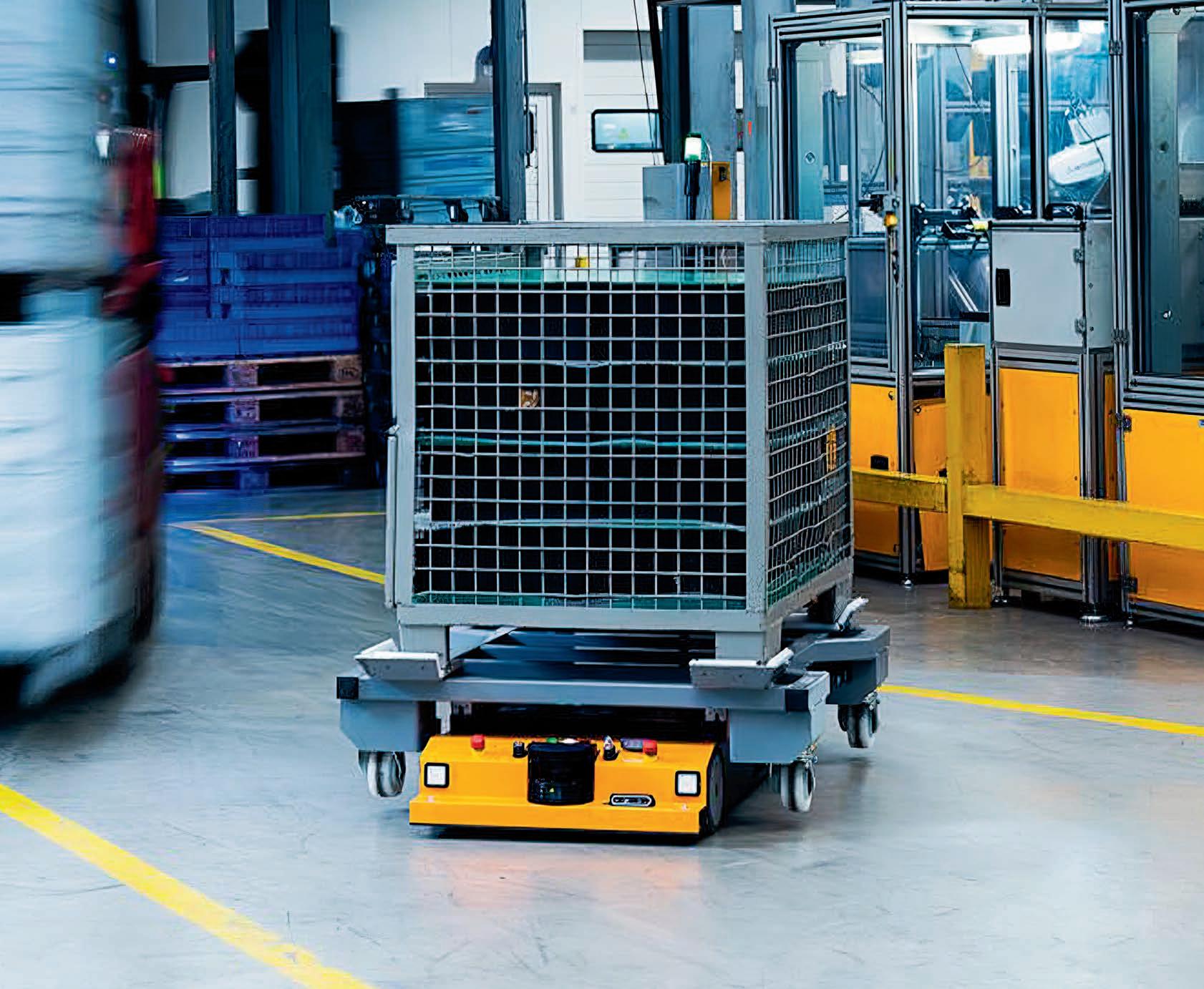

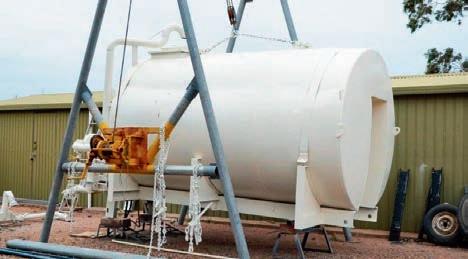

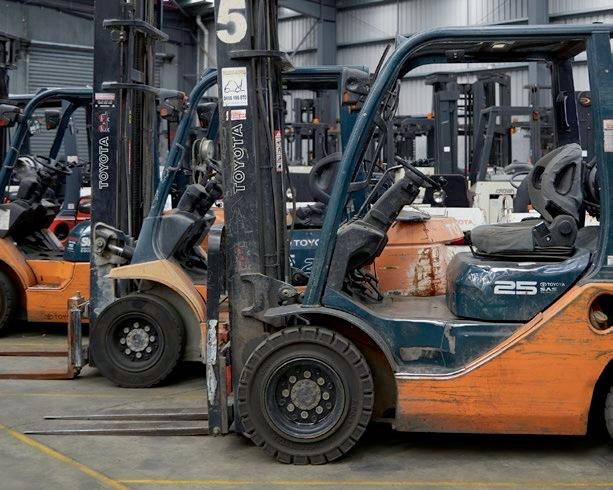

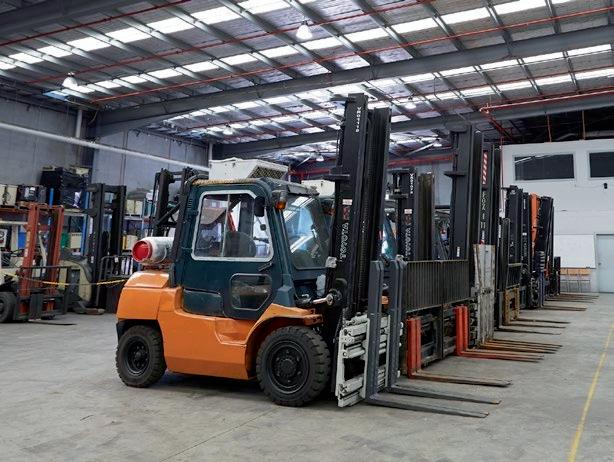







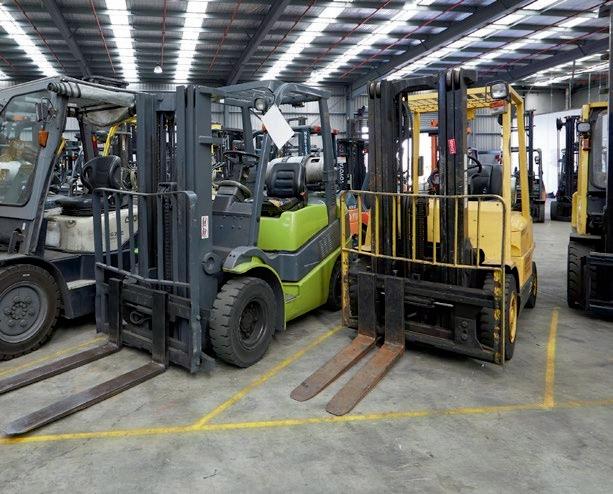













Many Hi Reach Rentals team members have years of direct industry experience
Continental, Jungheinrich, Still, Aisle-Master and Crown have all been nominated in a global awards showcase that sets out to find the world’s best intralogistics products and systems.
The developers of 25 different products and solutions will compete for the International Intralogistics and Forklift Truck of the Year (IFOY) awards in Germany later this year.
All 25 nominated products will complete a three stage audit, comprising a functional test, an innovation check by academics and testing by a jury of trade journalists in late March, before being made available for testing by visitors at a B2B event.
Continental Automotive has been nominated in the automated guided vehicle category for its AMR IL 1200 – designed for use in warehouses or logistics centres, as well as for production logistics with heavy pallets, such as those found in the automotive and metalworking industries.

With its integrated lifting system and various body options, the AMR IL 1200 can transport pallets weighing up to 1.2 tons (1.09 tonnes) at a speed of two metres per second.
“Due to its expertise, the IFOY Award is considered the definitive innovation award in intralogistics,” Continental Automotive says.
“The bandwidth of IFOY applicants is traditionally large and very international in the field of automated guided vehicles (AGVs), which for some years now have not only come from the intralogistics sector.”
The product is nominated alongside Hikorobot for its F4-100C forklift mobile robot for narrow aisle applications, China’s Youibot for its AT-100 autonomous mobile robot and Agilox’s Omnidirectional Dolly Mover.
Aside from the automated guided vehicles award, there are separate awards for high lift and low lift warehouse trucks, software, intralogistics robots and “start-up of the year”, as well as a special award for other machine features.
UAE-based Al Shirawi Enterprises’ forklift brand
Still secured nominations in both warehouse truck categories, with its EXH 14-20 Plus series hand pallet truck to contend against US-based Raymond’s End Rider electric pallet jack for the low lift award.
The high lift award will be between Still’s PXV vertical order picker, which offers a picking height of up to 14.5m; the SP1500 from Crown with its redesigned operator platform, standard middle window and 10.2m lift height; and the stand-on, articulated Aisle-Master OP Combilift, which has a 12.1m maximum lift height.
Award nominees in the Intralogistics Robot category are China’s Zhejiang Libiao Robots for its Airrob container handing robotic system and German companies Volume Lagersysteme for the Volume Dive container warehouse system and Jungheinrich for its PowerCube automated compact storage system for containers.
Jungheinrich was also nominated for a special award for its addedView fork camera, which scans barcodes in warehouses while a warehouse vehicle operator is moving, helping to inform when they are going the wrong way.
Its competitors for that award are the Swissmade Kemaro 900 industrial dry-cleaning robot, which cleans large areas and coarse dirt under machines and equipment; and the Nimmsta light tag, which helps with order fulfilment by lighting up when approached by a worker tasked with finding a specific item.
Intralogistics Software award nominations went to DS Automation for the Arcos package; IdentPro for its Warehouse Execution System; and Mobile Easykey.
The nominated start-ups are: 1MRobotics, Loady, ff Fördersysteme, Hunic, Predimo, Sentics and sereact.
Hi Reach Rentals provides specialist solutions to help meet individual project needs for working at height.
If your work takes you off the ground and up high, Queensland’s Hi Reach Rentals has the team and the equipment to get you to work in the best way possible.
Company managing director Colin Fox says the company offers a variety of specialised elevated work platforms for different customer needs.
“We’re a very diverse business,” he says.
“There are a lot of people that deal with boom and scissor lifts, there’s companies that deal with scaffolding, and then there’s companies that deal with mast climbers…” Hi Reach Rentals, he says, offers them all, along with swing stages, spider lifts, under bridge inspection units and the Nifty Lift Equipment range from the UK.
The range of different equipment on offer means Hi Reach’s experienced team can provide expert advice on the most cost-effective equipment choice for a job. “We can offer a variety of solutions for getting people to a workplace high in the air,” Fox says.
For specialised equipment, Hi Reach can also offer the services of its operators, many of whom have worked in the industry for years and use their experience and networking skills to solve problems as they arise.
With a full-time staff of about 65, Hi Reach provides equipment for special projects all around Australia and New Zealand, though Fox adds the company’s focus area is in and around southeast Queensland.

Fox says he prefers to focus on offering a high standard of service to customers rather than merely increasing volumes – with that focus including the provision of spare parts, mechanical services and training courses for working at height.
To find out more, contact Hi Reach Rentals on 1300 661 500 or visit hireach.com.au








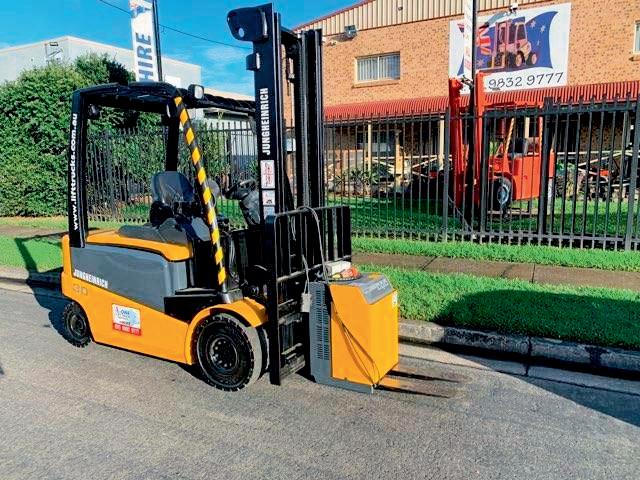










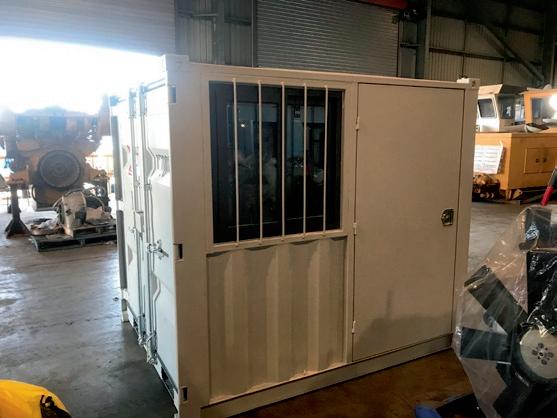

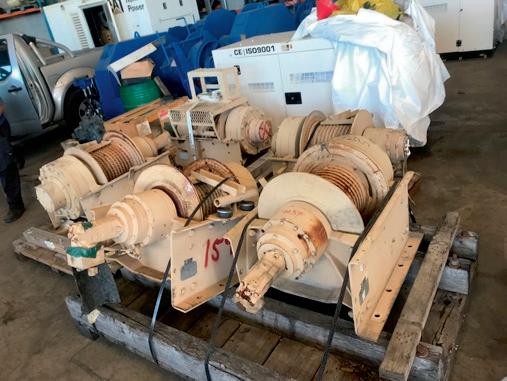


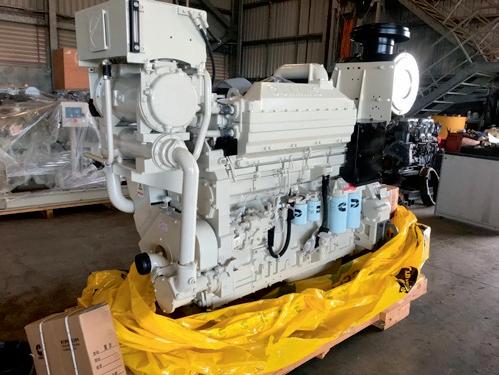








Brett: 0408 781 735
Sunny: 0418 781 835
E-mail: sales@diesel-engine.com.au
Address: 30 Paringa Road, Murarrie QLD 4172
WWW.DIESEL-ENGINE.COM.AU






KALMAR(NEW)DRU450 SOLD-Another available.Reachstackerfromglobalindustry leadingporthandlingequipment manufacturer.S89. TA1081384.





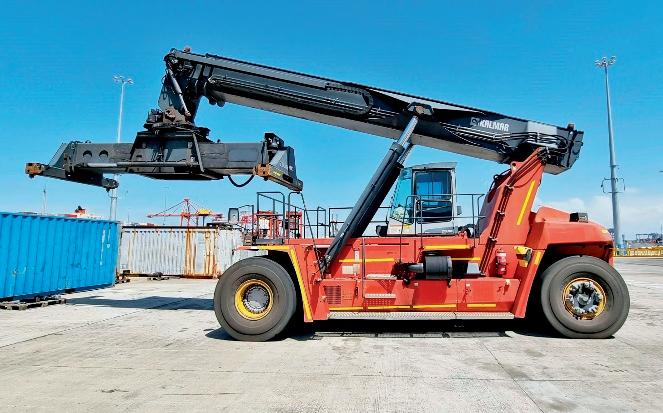


ForSaleorHirePOAHiretoBuy
KALMARDRT450-65S 2013,Stacksladen 20x40containers5high.CumminsQSM11 dieselengine.Dana15.5HR36000 transmission.Fullyenclosedairconditioned cab.H10300280. TA1153805.
ForSaleorHirePOAFreeCall1800688788
KALMARDRF450-60S5M 2012,Stacksladen 20x40containers5high.CumminsQSM11 dieselengine.Dana15.7TE32xmsn.Axletech driveaxlewithwetdiscbrakes.ACcab.S99.
TA1153810.
ForSaleorHirePOAFreeCall1800688788
HYSTERH18.00XM-12 2008,stacks12,000kg highcube20'&40'4high.ELME55820x40 spreaderwithtopentrytwistlocks.Frontline unitready for immediatedelivery.R3547.
TA829125.
ForSaleorHirePOAFreeCall1800688788
HYSTERH18.00XM-12 2008,18,000kg highcube20'containers3highwith2440forks +forkpositioningsideshift.Option14,000kg withELME558Sidelift for 20'and40' highcube.R3282. TA511086.
ForSaleorHirePOA$FreeCall1800688788
HYSTERH18.00XM-12 withforkpositioning sideshiftcarriage,2440mmforks,Cummins engine,fullyenclosedairconditionedcabOption20x40sideliftcont.frame.R3632.
TA1124211. POA
HYSTERH20.00F 2009,Smallestinthisfamily ofmostrobust20tonto32tonforklifts.Can landtransportfullyassembledready for work Cumminsengine,sideshiftandfork positioning2440mmforks.E008E02372G.

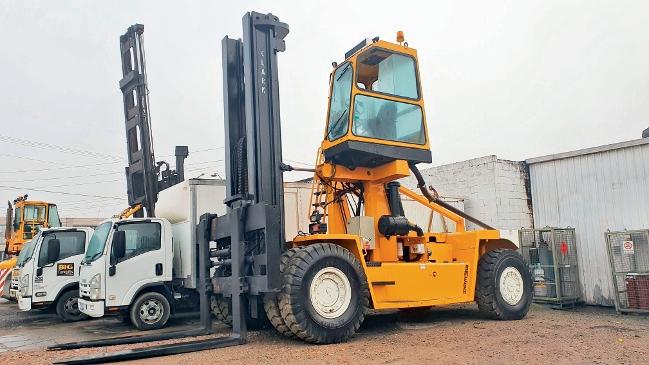
TA1153814.
ForSaleorHirePOAFreeCall1800688788
HYSTERH16.00XM-6 2010,canstack20' highcubecontainers2highcirca11,000kgat 1200mm.Cumminsdieselengine.2440mm forks,sideshiftandforkpositioningcarrige A/Ccab.S100.
TA1153811.
CATERPILLARDP160N 2009,hassideshift withforkpositioningand2440mmlongforks. Fullyenclosedairconditionedcab,powershift transmission.Easymastontransportready for workwith4500mmliftheightabletostack20' highcubecontainers2high.T40A10068.
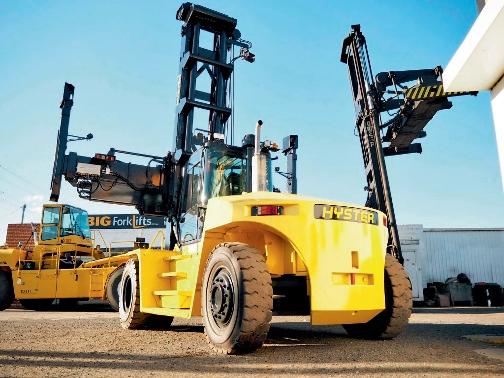
TA1153855.
ForSaleorHirePOAFreeCall1800688788
CLARKC500Y650D 1983,stacks28,000kg20' highcubes3high.Hassideshift&fork positioningplus8'forks.Cummins6CTdiesel, ClarkHurth28000powershiftxmsn.Easy staircaseaccesstohighviscab. 084AUFL4890. TA1153864.
GoodRunnerataffordableprice$55,000 FreeCall1800688788
MOBICON33T loadunloadandtravel 33,000kg20'and40'shippingcontainers.For sale&wanted.R3299. TA148664.

ForSaleorHirePh:1800688788POA
KONECRANESSMVSL32-1200B 2011,rated 32,000kgat1200mmloadcentre,canstack highcube20'containers2high.Road transportwithoutdemobe.R3376. TA1038152.
POAForSaleorHirePh:1800688788
SKYJACKSJ12'S 2012, 12'ElectricManlifts,plentytochoosefrom.227kglift capacity,allingoodcondition.LocatedinMelbourne, Sydney,Brisbane&NorthQueensland.Allmachines are nowoutoftest.Variousfrom.M1217-M1299. TA1160078 $3,000+GST

SKYJACKSJ4626E'S 2012, 26'ElectricScissorlifts,5machinesoffered.454kglift capacity,machinesingoodcondition.Locatedin Melbourne,Sydney&Brisbane.Machinesnowalloutof test.Variousfrom.S26258E-S26274E. TA1160079




$7,000+GST
SKYJACKSJ4632E'S 2012, 32'ElectricScissorlifts,2012models,3machines offered.317kgliftcapacity,allingoodcondition. LocatedinBrisbane.Allmachinesnowoutoftest. Variousfrom.S32104E-S3210E8. TA1160080 $9,000+GST
SKYJACKSJ46AJ'S 46'4WDDieselKnuckleBooms.5machinestochoose fromallfittedwith5kVaon-boardgenerators.227kglift capacityandallingoodcondition.LocatedinSydney, Brisbane&Townsville.Allmachines are nowoutoftest. Variousfrom.KBD4627-KBD4648. TA1160082 $30,000+GST
JLG600AJ'S 2012, 60'JLG4WDdieselKnuckleBooms.8machinesoffered andallunitsfittedwith7kVaon-boardgenerators.All machines are outoftest.ExBrisbane,Sydney, Melbourne,Mackay,TownsvilleandCairns.Various from.KB6070G7-KB6083G7. TA1160083
$45,000+GST
JLG800AJ'S 2012, 80ft4WDKnuckleBooms,allmachinesequippedwith 7kVaon-boardgenerators.3machinesofferedandall machines are nowoutoftest.Machineslocatedin Melbourne,Brisbane&Mackay.KB8031G7,KB8032G7 &KB8034G7.. TA1160084
$60,000+GST
JLG860SJ'S 2012, 86'4WDTelescopicBoomliftsfittedwith7kVa generators.3machinesoffered,allingoodcondition. MachineslocatedinBrisbane&Sydneyandthey are nowoutoftest.B8624G7,B8627G7&B8630G7. TA1160085 $60,000+GST

SKYJACKSJ250RT 2012, 50'RoughTerrain4WDScissorliftwithself-levelling outriggersanddualpoweredextensiondecks.1 machineremainingandthisisnowoutoftest.Located inBrisbane.S5014PD.. TA1160086

$30,000+GST
0457 110 110






JLG660SJ'S 2012, 664WDTelescopicBoomlifts.3machinesofferedand all are equippedwith7kVaon-boardgenerators. Thesemachines are alloutoftest. LocatedinBrisbane&Townsville.B6626B6627 BB6628. TA1164020

$55,000+GST

FIATALLISM100C Justinfordismantling,Allis10,000series engine,wetengineclutch,transmissioningoodorder,Moldboard pitchcylinders,allpartsavailable,PhoneBrendan0267624466. S175. TA1162783. POA



PARTS FOR Dozers, Loaders, Drotts, Graders, Scrapers

WRECKING DOZERS
ALLIS-CHALMERS: Model “M”, HD5, HD6B,E, HD7W, HD7G, HDIIB, EP, HD15-16, HD16DC, HD16DP, HD19-21, HD41B FIAT: 451C, 555, 605, 50CI, 70CI, AT7C, 8B, BD10B, FD10E, BD20

HANOMAG/MASSEY: 2244, 200, 300, 3366, 400, 500, L400C, L600C, D600D Super, D700C
JOHN DEERE : 1010C, 850 LOADERS
ALLIS-CHALMERS: TL12D, TL14, TL20, 545, 605B, 645, 745B,C
FIAT: FR20B





LD3, LD5, LD7 & LD9 Scoopmobile







HANOMAG/MASSEY 22,33C,44, 55, CL55C,66C-D, 77 GRADERS
ALLIS-CHALMERS: D, DD, M65, 65B, AD30-40, 45, 145, M100A, B, FG95 DRMCO/CHAMPION 562, 600, 720, 740
JOHN DEERE 570, 570A, 670A, 770, 770A, 772A
ALLIS WHEEL TRACTORS
AC D17, D19, D21, XT190, 7000, 7010, 7020, 7040, 7060, 7080, 8010, 8050, 8070, 7580, 8550, 440




FIATALLISHD16B Justinfordismantling,Standenrippers, immaculateundercarriageallround,bulltiltblade,fulllengthQLD canopy,17,000seriesAllisengine,powershift,segmented sprockets,allpartsavailable.PhoneBrendanorPeteon026762 4466.S174. TA1153541. POA

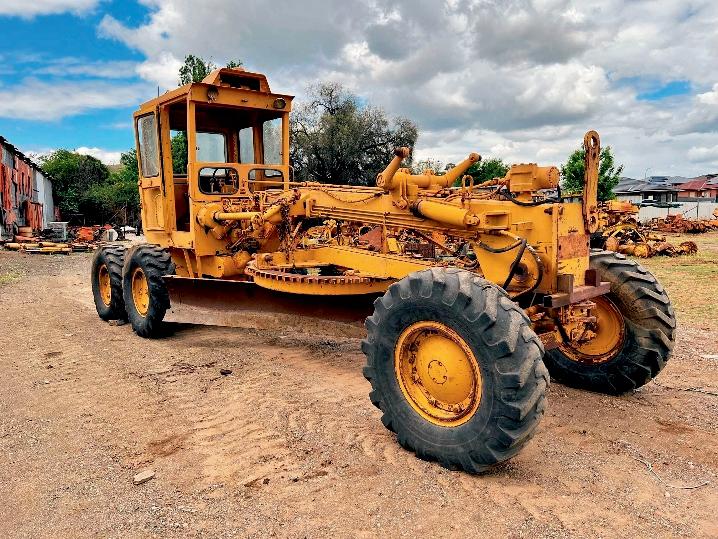

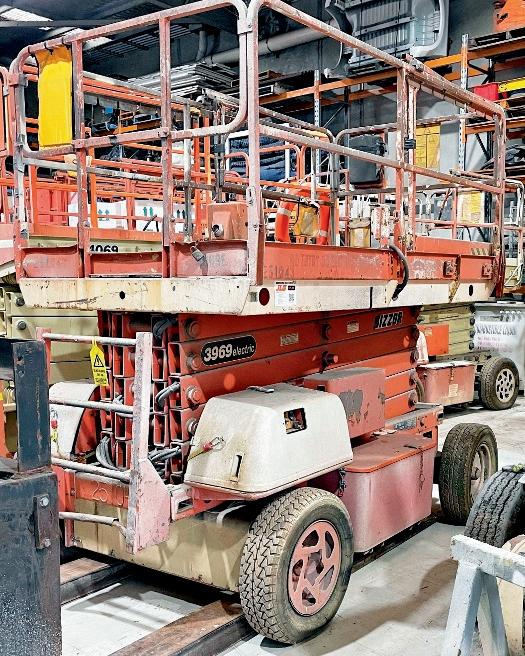
ALLISCHALMERSHD16DC Justinfordismantling,swiveltyne pacificrippers,nearnewlatestyleundercarriageallround,Allis 16,000engine,finaldrivesrebuilt,bulltiltblade,allpartsavailable, PhoneBrendanorPeteon0267624466.S173. TA1153539. POA
ALSO AVAILABLE Track Chains, Rollers, Idlers, Sprockets Various 4-1 Buckets, POA
ALLISCHALMERSHD11EP Justinfordismantling,hydraulicbulltilt blade,swiveltynerearrippers,turbo11,000seriesrunningengine, Powershifttransmissionandconverter,goodundercarriageall round,allpartsavailable,phoneBrendanon0267624466.S172. TA1144219. POA


















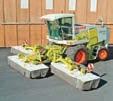














SHEA SEEDERS,
15 RUN AGRO SEEDER WITH COIL TYNES BAKER BOOTS & COULTERS 4 TONNE MARSHALL BELT SPREADER (VG ORDER) CLAAS MACHANT LARGE CAPACITY SMALL SQUARE BALER 10' KANGA SLASHER 3PL

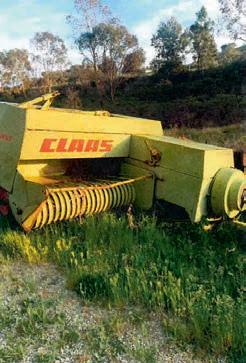




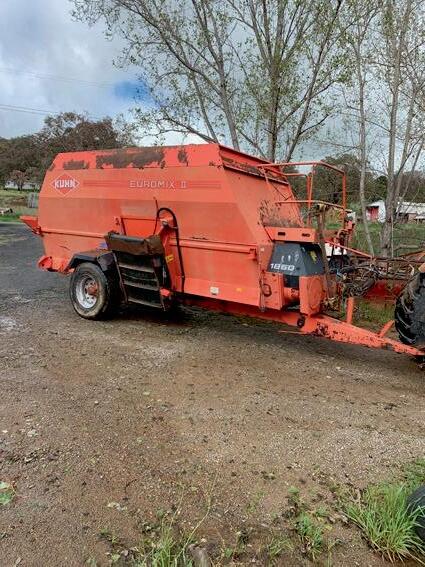
5' CONNOR-SHEA 3PL DISC SEEDER (LATE MODEL) 15' JANKE STUBBLE MULCHER
ROBIC 6 TONNE BELT SPREADER




8' PAGE 3PL HG SLASHER 9' CONNOR-SHEA COIL TINE BAKER BOOT CAULTER SEEDER 7' CONNNOR-SHEA DISC SEEDER AITCHISON COIL TYNE BAKER BOOT SEEDER
PARKS JNR HAY BALE FEED OUT TRAILER
INDUSTRY HAMMER MILL MIXER 8' AIR WAY AEROTOR 3PL VG ORDER 9' CONNOR - SHEA DISC SEEDER WITH 3 BOXES + HYD RAM
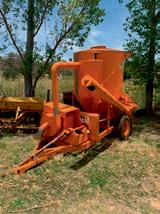

Manure-lime & super spreaders Super spreaders ground drive, ½ - 4.5 tonne.


9' Roto wiper, new & secondhand
to 28'.
hammermills, roller mills, grain gristers. From $595

3PL, 5-9 tine trail, 8-14 tine chisel ploughs From $795
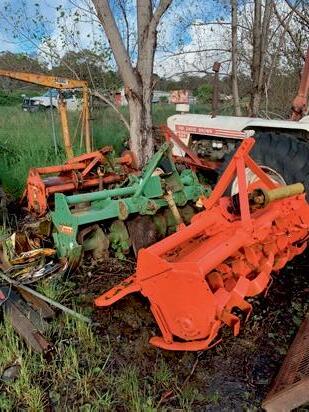

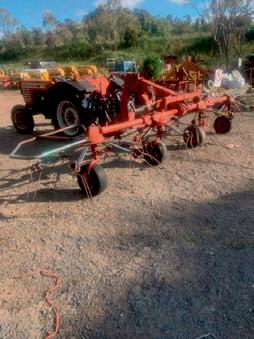
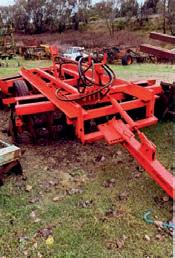

Irrigation pipes, pumps & motors, travelling irrigators. Scoops, 3PL, silt blades, carryalls and rippers.

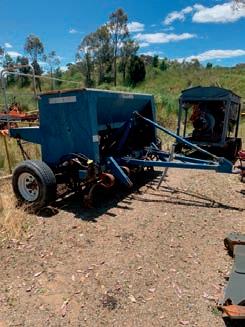
2nd hand tractor tyres, belt pulleys, PTO From $195

2nd hand new tines Augers, 50' x 6" & 8", pencil 14' x 4" new and 2nd hand.
Harrows all types From $45
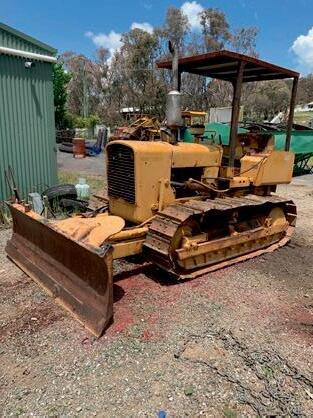
Boom sprays, 3PL, Hardi and Silvan, 400 & 600ltr.
Power Harrows 3PL Lely 15'
Crump (Kurrajong 1000) 1 tonne trailing

Vicon spreaders 10 to 30 bag, Hardi 1200 ltr boomspray trail, foam & PTO.
OFFSET/DISC PLOUGHS

Grizzly 20 424 disc
Gibbons Rawlings 28 plate
SCARIFIERS & TILLERS
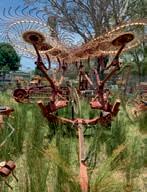
Ferguson scarifiers 3PL
19 tyne Bagshaw scarifier towable




SHEEP AND CATTLE
Feeders (hay & grain)
Cattle Scales
Highway, Bookham (YASS) 2582 ROTATING WEED WIPERS 9’6' COVER SUIT QUAD, UTE OR TRACTOR. TA449307. POA
Feedout bins and trailers. Shearing plants, grinders, lamb cradles, handlers, wool pressers, bail heads, crushes, wool tables, hyd woolpress.
SLASHERS
8’ slasher 3PL (superior)
2.3 high body Nobili mulcher
TRAILERS
HYD Tipping 10' x 6'
Freighter 4 wheel trailer
Tipping trailer 8' x 6' From $975
TRACTORS
Ford 3000, 45hp, 3PL, P-Steer. FE Loader.


Fergie TEA20


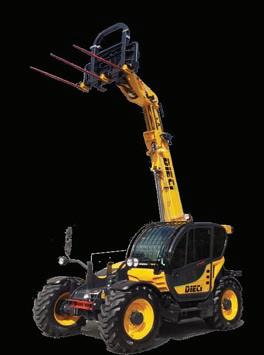



Designed to meet the needs of any farm job- big or small, the Dieci range of agricultural telehandlers are built tough and reliable.
From the compact Mini Agri to the heavy-duty Agri Max, these machines are tailored to suit the harsh Australian conditions and handle loads in even the tightest spaces.
We work every day to evolve our machines, resulting in a range of industry specific telehandlers for Poultry, Cotton, Piggery and Hay.
With a wide range of attachments available, there is a Dieci telehandler to perfectly suit your application, no matter what the requirement.
